




English Mathematics
General Knowledge Science
Social Science

Academic Authors: Melanie Grobler, Chandani Goyal, Neena Aul, Animesh Mittal, Muskan Panjwani, Sneha Sharma, Anuj Gupta
Creative Directors: Bhavna Tripathi, Mangal Singh Rana, Satish
Book Production: Sanjay Kumar Goel, Tauheed Danish, Amisha Gupta
Project Lead: Chandani Goyal
VP, Learning: Abhishek Bhatnagar
All products and brand names used in this book are trademarks, registered trademarks or trade names of their respective owners.
© Uolo EdTech Private Limited
First impression 2025
This book is sold subject to the condition that it shall not by way of trade or otherwise, be lent, resold, hired out, or otherwise circulated without the publisher’s prior written consent in any form of binding or cover other than that in which it is published and without a similar condition including this condition being imposed on the subsequent purchaser and without limiting the rights under copyright reserved above, no part of this publication may be reproduced, stored in or introduced into a retrieval system, or transmitted in any form or by any means, electronic, mechanical, photocopying, recording or otherwise, without the prior written permission of both the copyright owner and the above-mentioned publisher of this book.
Book Title: Insights 4 Term 3
ISBN: 978-81-981206-3-2
Published by Uolo EdTech Private Limited
Corporate Office Address:
85, Sector 44, Gurugram, Haryana 122003
CIN: U74999DL2017PTC322986
Illustrations and images: www.shutterstock.com, www.stock.adobe.com and www.freepik.com
All suggested use of the internet should be under adult supervision.


Roleplay Report writing
Listen and fill in
Kindness-related vocabulary Words similar in meaning but different in intensity Types of sentences– declarative, interrogative, imperative, exclamatory
Factual questions Identifying problems and solutions Identifying characters’ actions and thoughts Making connections
Realistic story
Kindness–word web Palindrome
Factual questions Analysing contextual meaning Identifying theme and message
Comic strip
Listen and choose Making suggestions and giving feedback
Simple tense– present, past, furture
Collocations People who practise different forms of art
Factual questions Sequence of events Analysing the use of imagery Analysing characters’ actions and their personality traits Making connections
Realistic story
Listen and complete
Continuous tense–present and past
Idioms Antonyms
Identifying key events Analysing character traits Identifying the message Making connections
Interview
13.
Interview a famous personality Story writing 15.
Listen and choose Retell a story read Poem writing
Subject-verb agreement
Text-based vocabulary Phrasal verb
Factual questions
Summarising Analysing contextual meaning Identifying author’s purpose, theme and message Making connections

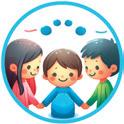


Imagine that you have adopted an animal.
Which animal would it be?
How would you take care of it?
Share your thoughts with your partner. Get Set
Henry, a chameleon, is the latest pet in Grandfather’s private zoo. What would it be like to have a chameleon as a pet? Are chameleons naughty or calm? Let’s read to find out.



Henry is our pet chameleon. Chameleons are no ordinary reptiles. A chameleon’s tongue is as long as its body. Its limbs are long and slender, and its fingers and toes look like a parrot’s claws. On its head may be any of several ornaments—Henry had a rigid crest that looked like a fireman’s helmet.
Henry’s eyes were his most remarkable feature. He could move one eye without disturbing the other. Each eyeball, bulging out of his head, wobbled up and down, backward and forward.
One look into Henry’s frightful gaze was often enough to scare people into believing that chameleons are dangerous and poisonous reptiles.
Grandfather was visiting a friend in northern India when he came upon a noisy scene at the garden gate. Men were shouting, hurling stones and brandishing sticks. The cause of the uproar was a chameleon. The residents of the area had risen in arms. Grandfather was just in time to save the chameleon from certain death—he brought the little reptile home.
When did the Grandfather adopt Henry as a pet?
slender: thin and graceful ornaments: decorative features rigid: stiff
crest: raised part on top of an animal’s head feature: a part of something that makes it special wobbled: moved in a manner where you do not have much control
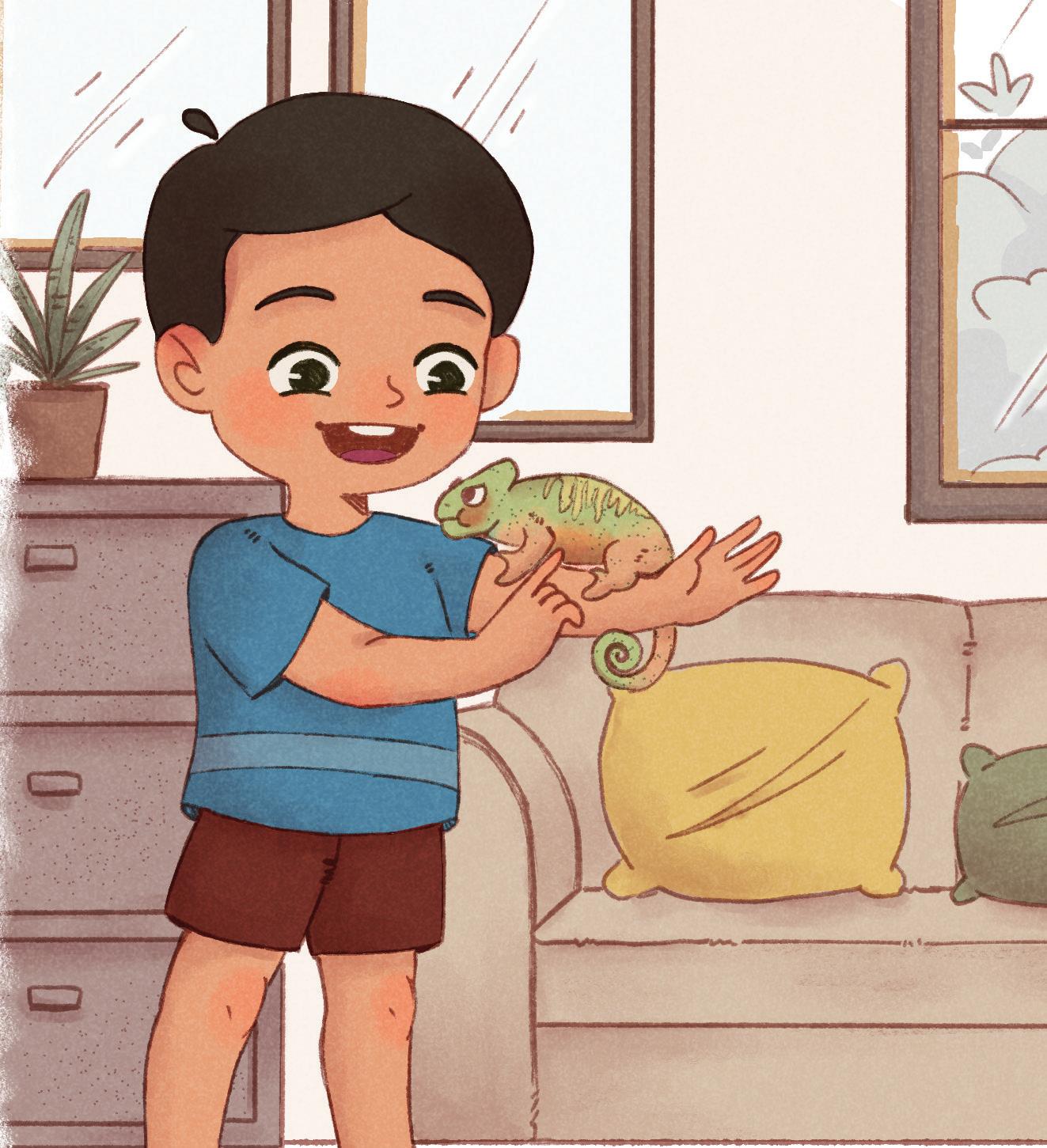
hurling: throwing something forcefully brandishing: waving something in a harmful manner
uproar: situation where people yell and create a lot of noise because they are upset had risen in arms: were ready to attack
I would tickle him gently in the ribs with my finger. This always threw him into a great rage. He would blow himself up to an enormous size, his lungs filling his body with air, while his colour changed from green to red. He would sit up on his hind legs, swaying from side to side, hoping to overawe me. Opening his mouth very wide, he would let out an angry hiss. But his threatening display went no further. He did not bite.
He was a harmless fellow. If I put my finger in his mouth, even during his wildest moments, he would simply wait for me to take it out again. I suppose he could bite. His rigid jaws carried a number of finely pointed teeth. But Henry seemed convinced that his teeth were there for the sole purpose of chewing food, not fingers.
What are some ways that the author would play with Henry?
Although Henry didn’t cause any trouble in our house, he did create somewhat of a riot in the nursery down the road. It started out quite innocently.
When the papayas in our orchard were ripe, Grandmother sent a basketful to her friend Mrs Ghosh, who was the principal of the nursery school. While the basket sat waiting, Henry went searching for beetles and slipped in among the papayas, unnoticed. The gardener dutifully carried the basket to the school and left it in Mrs Ghosh’s office. When Mrs Ghosh returned after making her rounds, she began admiring and examining the papayas. Out popped Henry.

rage: anger enormous: very large overawe: to scare someone hiss: a sharp blowing sound, often made by reptiles riot: a situation of confusion dutifully: in a manner that shows one is responsible

Mrs Ghosh screamed. Henry squinted up at her, both eyes revolving furiously. Mrs Ghosh screamed again. Henry’s colour changed from green to yellow to red. His mouth opened as though he, too, would like to scream. An assistant teacher rushed in, took one look at the chameleon, and joined in the shrieking. Henry was terrified. He fled from the office, running down the corridor and into one of the classrooms. There he climbed up a desk while children ran in all directions—some to get away from Henry, some to catch him. Henry finally made his exit through a window and disappeared in the garden.
Grandfather and I didn’t think Henry would find his way back to us, because the school was three blocks away. But a few days later, I found him sunning himself on the garden wall. Although he looked none the worse for his adventure, he never went abroad again. Henry spent the rest of his days in the garden, where he kept the insect population well within bounds.
squinted: looked with eyes partly closed revolving: spinning shrieking: making loud noises abroad: outside of one’s usual surroundings well within bounds: (here) kept the insect numbers down



1. Fill in the blanks with details from the story.
What did Henry do to make Mrs Ghosh scream?

Wild animals like chameleons, snakes, and so on, belong in the forest. They should not be taken from their natural habitat and be kept as pets. It is unfair to the animals and can be dangerous for humans.
Listen to all the keywords here.
a A chameleon’s tongue is as long as its .
b Henry had a rigid crest that looked like a .
c When angry, Henry would change colour from green to .
d Mrs Ghosh was the of the nursery school.
e After his adventure, Henry spent the rest of his days in the .
2. Relook at the story and fill in the graphic organiser.
Problem at school What happened because of it? How was the problem solved?
3. Answer the questions in two to three sentences.
a What makes chameleons extraordinary?
b How did Henry become the narrator’s pet?
c How would the author tease Henry? How would Henry react?
d How did Henry end up at the nursery school?
e How did Henry spend his days?
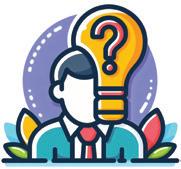


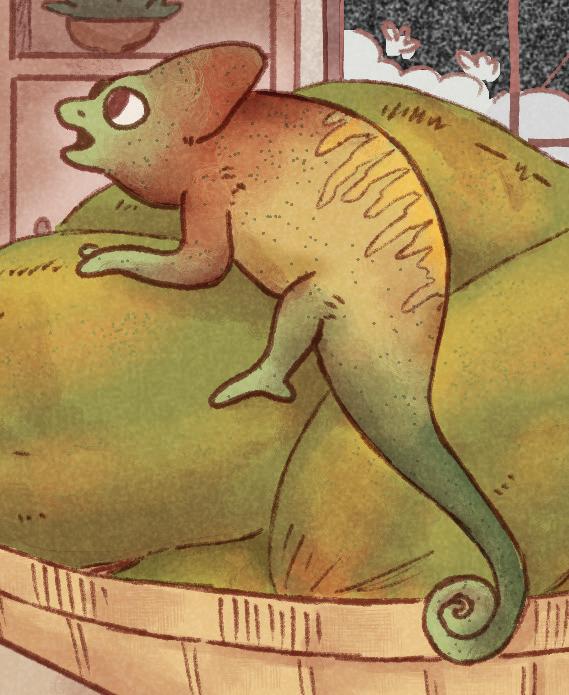
1. Characters react differently in different situations. Complete the table with the character’s reactions and what you think they would have thought.
What Happens
Character’s Reaction Character’s Thoughts
The boy tickled Henry. Henry turned red and blew himself up in size. The boy . Henry thought, ‘This boy is so annoying.’ The boy thought, ‘ .’
People shouting and throwing stones at the chameleon.
The grandfather . The grandfather thought, . Mrs Ghosh saw Henry in the basket.
Mrs Ghosh . Mrs Ghosh thought, ‘



1. Sit in a group of four. Think about a time when you were surprised or scared by an animal. Discuss your experience in your group.
Talk about:
Which animal surprised or scared you?
Where were you when it happened?
How did you feel when you saw the animal? What did you do?
How was your reaction similar or different to the reactions of the characters in the story?
2. Grandfather is a kind man who saved the life of the chameleon. Think of two stories or movies where the main character showed kindness towards animals. Name
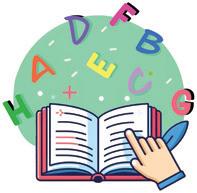

Did the Character Show Kindness?
1. Use the clues below to fill in the crossword with words related to ‘kindness’.
1. When you are kind to others you are a person. (7 letters)
2. When you say please and thank you, you are being . (6 letters)
3. When you assist someone in need, you are offering . (4 letters)
1. When you care deeply for someone, you feel for the person. (4 letters)
2. When you treat others with consideration and honour, you are showing . (7 letters)
2. Look for the meaning of the words in the dictionary. Write the words next to the correct meaning. In your notebook, use any two words write the sentences of your own.
Hint Box: gentle compassion thoughtfulness consideration mercy
a Sympathetic pity and concern for the suffering or misfortune of others:
b Thinking of the needs of others before acting:
c Careful thought, typically over a period of time:
d Kind and tender behaviour:
e Forgiveness shown towards someone:
3. These words mean the same but are different in intensity (strength). They indicate different shades of the word ‘big’.
Read each group of words.
Group A: terrified, scared, afraid
Group C: furious, annoyed, angry
Group B: joyful, happy, ecstatic
Group D: chilly, cold, freezing

Put the words in order from least intense to most intense.
Group A afraid scared terrified
Group B
Group C
Group D
Hint Box: Use a dictionary to find the exact meaning of each word! Go Grammar


A sentence is a group of words that has a complete thought. Here are four types of sentences.
Type What Does the Sentence Say? End Punctuation
Declarative
These sentences are statements. They give facts or information. They are also known as assertive sentences.
For example: Henry is our pet chameleon.
These sentences ask a question.
Full-stop (.)
Interrogative
Imperative
For example: Where did Henry disappear? Question mark (?)
These sentences give a command, make a request or give advice.
For example: Save that chameleon! Please get me a paint brush.
These sentences are exclamations that express strong feelings of happiness, sadness, hurt, fear or surprise.
Full-stop (.) or Exclamation mark (!)
Exclamatory
For example: Out popped Henry! Wow! Their palace is huge! Exclamation mark (!)
1. Write the type of sentence.
Hint Box: Code: D: Declarative I: Imperative E: Exclamatory Q: Question
a Grandfather came upon a noisy scene at the garden gate.
b Wow! Look over there! That’s a chameleon blending in with the colour of the leaves.
c Save animals on earth by supporting wildlife conservation efforts and protecting their natural habitats!
d What is so remarkable about Henry’s eyes that everyone keeps talking about them?
e Get me the basket of ripe papayas from the kitchen please.
We can change assertive or declarative sentences into interrogative sentences by placing is, am, are, was, were, has, have before the subject when the sentence only has a verb (the verb to be).
Henry is a chameleon. Is Henry a chameleon?
The students were at school. Were the students at school?
placing the subject between the helping verb (is, are, am, was, were, has, have) and the main verb when the sentence has both.
Mrs Ghosh was checking the papayas. Was Mrs Ghosh checking the papayas?
Henry has returned to the garden. Has Henry returned to the garden?
2. Change the statements to questions.
a The cause of the uproar was a chameleon.
b The gardener has left the basket in Mrs Ghosh’s office.
c An assistant teacher is chasing the chameleon.

d Mrs Ghosh was scared of the chameleon.
e The papayas are ripe.
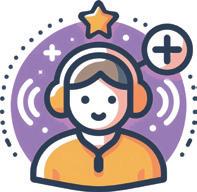


Listen carefully to the text and fill in the blanks.
? Listen to the text here.
a Keeping wild animals like or as pets can be dangerous and harmful.
b Chameleons need to be kept at a specific and .
c Having snakes at home can be .
d Wild animals belong in the , where they can live freely and help keep nature balanced.
e By leaving them in their natural , we help protect them and the world they live in.


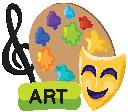
Practise speaking here.
Sit in pairs and roleplay the scene of ‘rescuing or helping an animal’.
Step 1: Each of you decide your character’s name, role and think of the conversation that will happen between them.
Step 2: Write your dialogue. Make sure to have at least three to four lines of dialogue between the two of you.
Step 3: Rehearse your lines before the final presentation.

You may use props to make your roleplay interesting.
Use your voice, gestures and facial expression.


A research report is a written document where you share what you have learned about a topic. It includes facts and information about the topic. It should be written in a clear and concise manner.
<picture>
<Research Topic>
<Information 1>
<Interesting Fact 1>
<physical features>
<Information 2>
<Interesting Fact 2>
<Interesting Fact 3>
Sea Turtles have a hard, round shell. They have webbed feet and flippers for swimming.
Sea turtles live in oceans. They come out of the sea to lay their eggs.
Sea turtles usually lay 100–125 eggs in a nest.
Some sea turtles eat seaweed and algae. Some eat jellyfish and crabs.
Some kinds of sea turtles have existed since the age of the dinosaurs.
Sea turtles cannot draw their flippers and head into their shells.
Do research about an animal that you find interesting and write a research report.


—Robert Lee Frost


If you sit quietly, you can hear a lot of different animal sounds around you. You can hear insects and birds and even small animals.
Go for a nature walk and note down four animal sounds you heard. For example, the chirp of a bird or the click of a lizard! Share what you heard with your friends.
The poet hears a bird singing outside his house every day. How does he feel? What does he do? Let’s read the poem to find out.


I have wished a bird would fly away, And not sing by my house all day; Have clapped my hands at him from the door When it seemed as if I could bear no more. The fault must partly have been in me. The bird was not to blame for his key.
And of course there must be something wrong In wanting to silence any song.
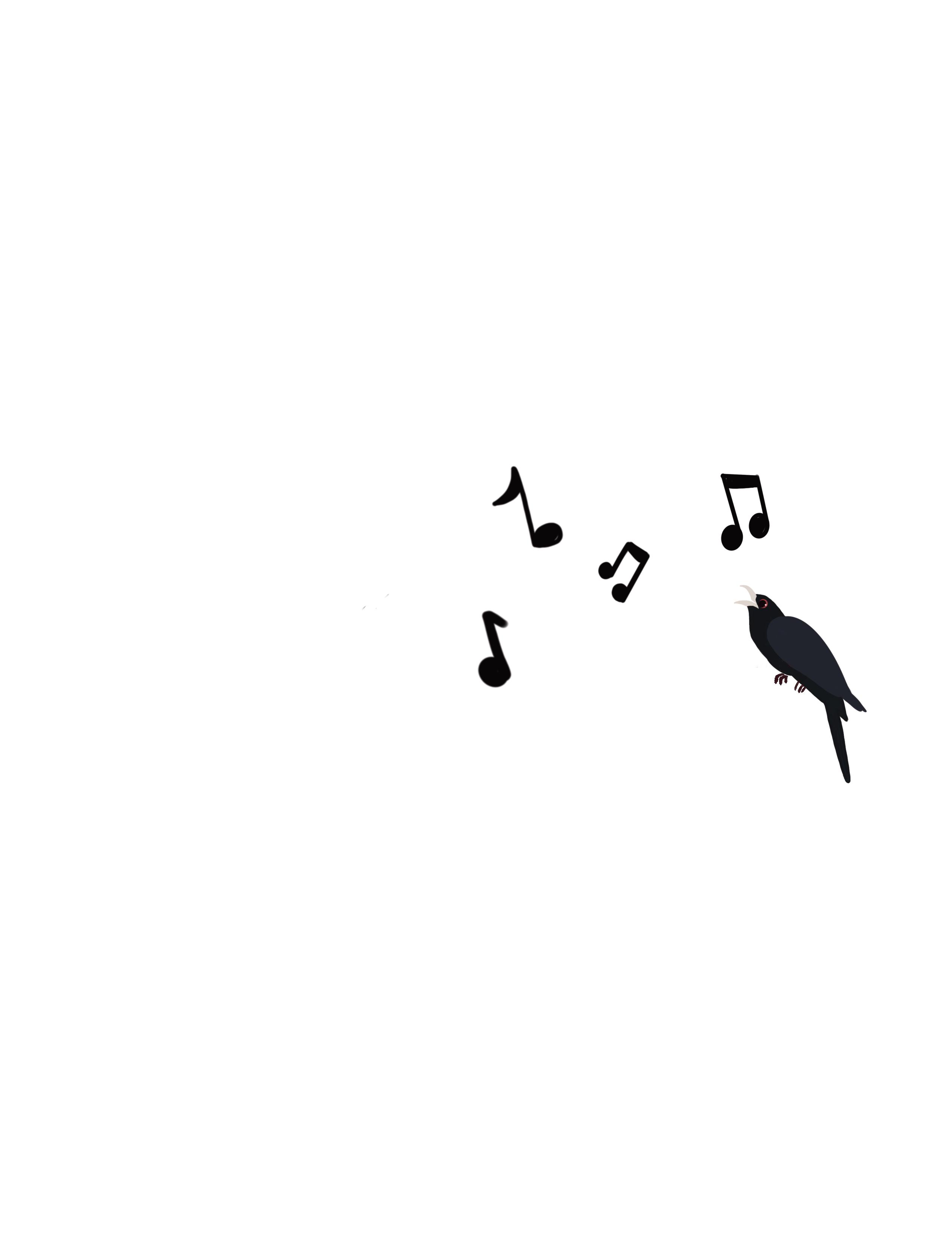
bear: to put up with something fault: mistake key: the tone of a song silence: to stop something from making a sound
What do you do when you hear a bird singing?
Listen to all the keywords here.





1. Fill in the blanks with the correct words from the poem.
a The poet wished a bird would .
b The bird sang by the poet’s all day.
c The poet clapped hands at the bird from the .
d The poet admits that was not to be blamed.
e The poem suggests there must be something wrong in wanting to any song.
2. Write True or False.
a The poet enjoyed the bird singing all day.
b The poet tried to make the bird go away by clapping.
c The poet believes it’s right to want to silence songs.
d The poem suggests that the poet’s attitude changed.
3. Answer the questions in two to three sentences.
a The poem is titled ‘A Minor Bird’. What does the word ‘minor’ in the title mean?
b What does the word ‘key’ refer to in the poem?
c Why does the speaker think it is wrong to want to silence the bird’s song?


Sit in a group of four.
Step 1: In the group, read the poem again. Discuss these questions. How does the speaker feel about the bird’s singing at the beginning of the poem? What has changed in the speaker’s feelings by the end of the poem? What does the poem suggest about how we should handle things that annoy us?
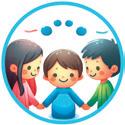
Step 2: Discuss your personal experience. Choose any one of the given prompts. Can you think of a time when something or someone annoyed you, but later you realised it wasn’t their fault?
How can we learn to appreciate things that we initially find bothersome? Why is it important to be patient and understanding with others?
Step 3: Share your thoughts with the class. Write key points on the board or on a large sheet of paper.

Vocabulary

1. Fill in the word web.
Words that mean the same:
• • Two people who are kind:
Words that mean the opposite:
• How being kind makes you feel:
A palindrome is a word or sentence that does not change whether we read it forwards or backwards. For example: ‘level’, ‘radar’, ‘madam’ or ‘Mr Owl ate my metal worm.’

2. Find and circle the palindromes in the word search puzzle.
Hint Box:
Can you think of two more palindromes? Write them in the blanks.



Theme: The theme of a poem is the main idea that the poem focusses on. Themes are broad concepts such as love, nature, loss or friendship.
Message: The message of a poem is the moral the poet wants to share with the reader. It is more focussed than the theme.
For example:
We read the poem ‘Going Down Hill on a Bicycle’ by Henry Charles Beeching. The theme of the poem is enjoying the moment. The message of the poem is that it’s important to enjoy the simple pleasures in life. The message is based on the theme.
Which, according to you, is the most appropriate theme of the poem ‘A Minor Bird’?
a Self-Reflection: Thinking about one’s own actions, feelings or thoughts.
b Acceptance: Accepting things and people as they are.
c Nature’s Beauty: Being thankful for what nature offers.
Based on your chosen theme, what could be the message of the poem.
We should
—Bulbul Sharma

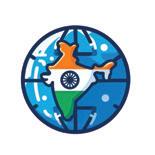


If you were given a lump of clay, what would you make with it? Why? I would make Get Set
Manu’s father and grandfather are skilled potters, and Manu is learning the craft. Let’s read this lively story to learn about the simple joys and the hardships of a potter’s life, from gathering clay and making pots to selling them in the markets.


Let’s Read

Manu was still in bed. The sun was already up. He should have risen earlier, but last night was firing day, a busy time for his family of potters.
The rainy season had ended, and the sky was clear. Today, Manu would dig for clay with his grandfather, Dada, near the river. Later, Baba, his father, would take him to the city to sell pots at the market.
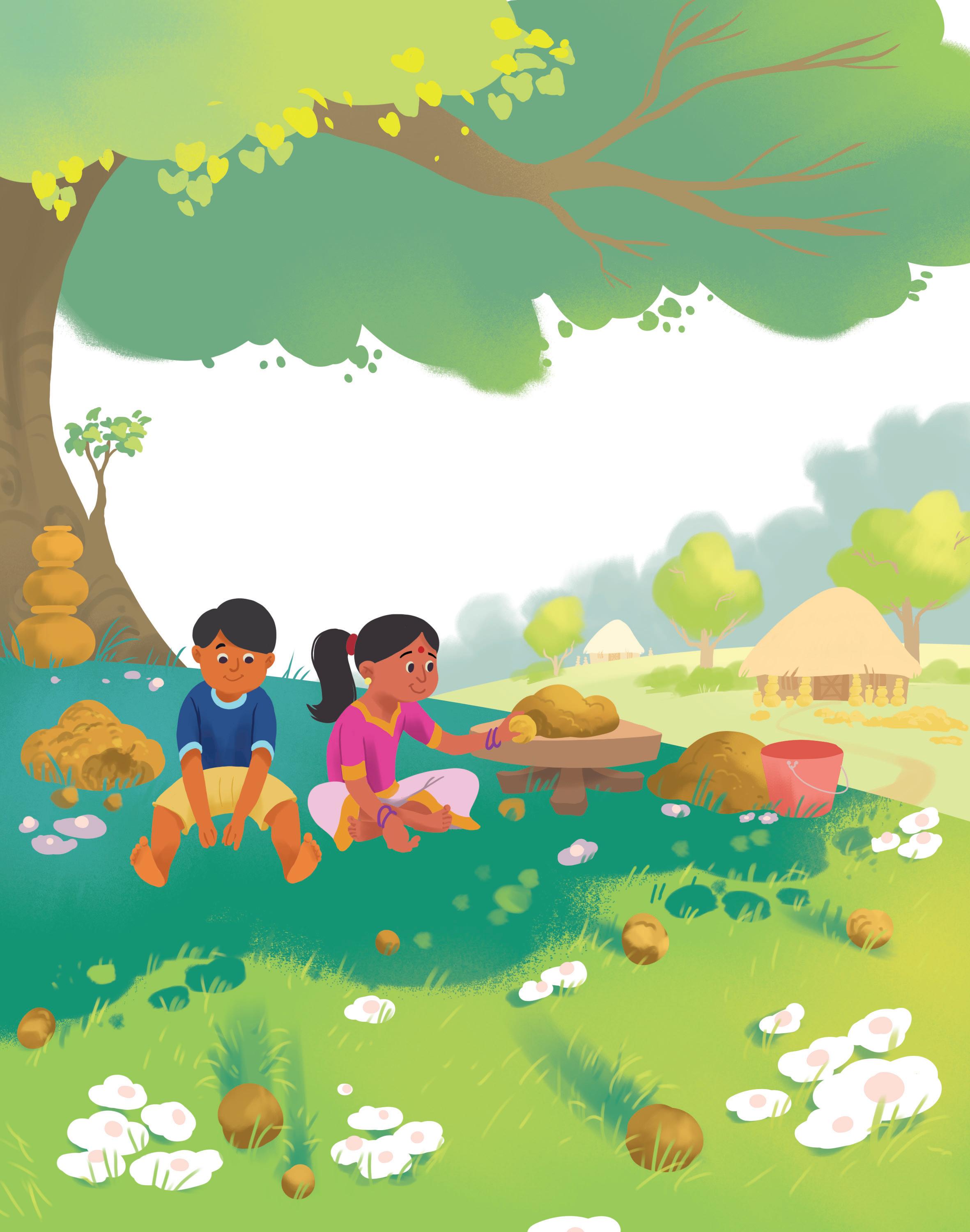
Manu had learned the basics of pottery from a young age. As a baby, he played with lumps of clay. At three, he learned to shape it into balls. Every afternoon, he and his sister Sushma sat under a peepal tree, rolling tiny clay balls.





Pottery is the art of making items like pots, bowls and vases from clay. India is well known for this beautiful craft. There is the colourful and detailed Khurja Pottery of Uttar Pradesh and the bright blue Jaipur Blue Pottery of Rajasthan. There are also the tribal designs of Manipuri Pottery and the black pottery with silver designs of Nizamabad.
Where would Manu go with his grandfather?
skilled: very good at doing something firing: baking clay pots in a very hot oven to make them hard and strong
potters: people who make pots, bowls, and other items from clay basics: simple yet important skills and knowledge
Manu loved the cool touch of clay in summer, and making toys with Ma in winter. Their house was filled with earthenware pots, teacups, flowerpots and bowls. During festivals, people bought Ma’s little Ganesha and Lakshmi statues.
Before Diwali, Manu and Sushma made small diyas. His friends often asked for extras, and Ma made a few more for him to give away. ‘Potters have special hands that turn clay into wonderful things,’ Ma said.
That morning, Dada and Manu set out for the river. Manu eagerly ran towards a banyan tree where they dug up the clay. After filling their sacks, they returned home. The next day, Manu helped Baba break the dried clay into small pieces, sieve it, and knead it with water. He and Sushma loved jumping on the wet clay which made a funny sound. Baba and Dada shaped the clay into pots on the wheel, as if by magic. Manu’s pots weren’t as perfect as his father’s or grandfather’s, but he enjoyed making toy animals. He had secretly made an owl for Sushma and a toy car for his brother. Only Baba knew about these gifts as they were in the kiln.
What are the different steps Manu and his family followed to make the pots?

earthenware: pottery made from baked clay sieve: to separate larger pieces from smaller pieces by using a tool with small holes
Which ‘wonderful things’ did Ma make?
knead: to mix and press a soft material like clay or dough with your hands until it is smooth kiln: a special oven used for baking and hardening clay items

Once the kiln cooled, Baba would take the pots to the market, and this time, Manu would go too! He was excited about the trip to the big city.
On market day, they loaded pots onto donkeys and headed to the city. The journey was long, but Manu enjoyed seeing new places. In the city, they sold all their pots and toys.
Baba bought new things for the family with the money they earned.
Manu saved some money and wanted to buy something for Baba. He found an old man selling umbrellas. Manu helped the man with some work and got an umbrella in return. He hid it carefully, so that he could surprise Baba.
They returned home at dawn the next day.
Manu excitedly shared his experiences with Ma and Sushma. They made tea in a big clay pot and watched the sky turn pink and orange, ready for another day of pottery.





Kashmir is famous for its Kashmiri Paper Mâché pots—these wonderful pots are made not from clay but from paper pulp!

dawn: the time early in the morning when the sun is just starting to rise



1. Tick () the correct answers.
a What is the ‘firing day’ mentioned in the text?
i a day when the family lights fires
ii a day when they bake pottery in the kiln
iii a day when they celebrate with fireworks
iv a day when they cook special meals
b What special items are made by Ma for festivals?
i flowerpots and bowls
iii Ganesha and Lakshmi statues
ii teacups and teapots
iv toy animals and cars
c In what order did Manu and Baba prepare the clay after bringing it home?
i knead, break, sieve
iii sieve, break, knead
ii break, sieve, knead
iv break, knead, sieve
d How does the author convey the idea that pottery is important to the family’s daily life?
i by describing their house filled with different pottery items
ii by mentioning the pottery-related activities they did each day
iii by mentioning the family’s dependence on the income from pottery
iv all of the above
e How did Manu get the umbrella for his father?
i He bought it with money he saved.
ii He helped an old man and got it in return.
iii His mother helped him buy it.
iv He found it on the way to the market.
2. Read the different events from the story. Use B and A to mark which event happened before (B) and which event happened after (A) the event given.
Event 1: Manu helped Baba break the dried clay into small pieces and knead it with water.
a Dada and Manu went to the river to dig up the clay.
b Baba and Dada shaped the clay into pots on the wheel.
Event 2: Manu got an umbrella for Baba by helping an old man.
a Manu shared his experiences with Ma and Sushma.
b Baba and Manu sold all their pots and toys at the market in the city.

3. Answer the questions in two or three sentences.
a How do you know that Manu started learning about clay when he was young?
b What did Ma say about potters’ hands? How was this true in the story?
c What did Manu and Sushma enjoy doing with the wet clay? Why?
d How do we know that Ma is a skilled potter?
e Manu and his family, ‘watched the sky turn pink and orange, ready for another day of pottery.’ Describe the tasks that Manu and his family will do again the next day.



A writer uses imagery to help the reader to imagine what is being described. The writer uses words to evoke the senses of sight, sound, touch, smell and taste to describe things. It makes stories more vivid and exciting. sight touch touch sight For example: The golden sun warmed the soft, green grass.
The river made a gurgling sound that lulled me to sleep.
1. Match the events and the imagery that best describe them.
Event
Manu loved the cool touch of clay in summer.
He and Sushma loved jumping on the wet clay which made a funny sound.
Baba and Dada shaped the clay into pots on the wheel, as if by magic.
They made tea in a big clay pot and watched the sky turn pink and orange.
Manu excitedly shared his experiences with Ma and Sushma.
Sensory detail
Seeing a pot appear from a lump of clay.
Feeling the wet coolness when it was hot outside.
Seeing the beautiful colours of the sunset.
Hearing Manu’s voice babbling away.
Hearing it squish and squelch under their feet.
2. Read Manu’s actions. How do you think his actions affect the other characters? What do these actions tell you about Manu?
Actions from the Story
Manu made an owl for Sushma and a toy car for his brother.
Manu helped Baba break the dried clay into small pieces, sieve it, and knead it with water.
Manu helped an old man with some work and got an umbrella for Baba.



Effect
Qualities Shown by Manu
Sushma and his brother hugged Manu. thoughtful, caring
Think about a time when you did something special for someone or helped a family member with something they were doing.
• Explain what you did.
• How did you feel?
• How do you think the person whom you helped felt? What did they say?



1. Read the phrases below. Replace them with the correct words in the box.
Hint Box: musician actor author potter sculptor
a A person who writes stories:
b A person who plays musical instruments:
c A person who makes statues:
d A person who performs in plays:
e A person who makes clay pots:

Collocations are pairs or groups of words that often go together. They can be thought of as word partners.
For example:
• We say ‘make a decision’ and not ‘do a decision’.
• We say ‘fast food’ and not ‘quick food’.
• We say ‘strong coffee’ not ‘powerful coffee’.
2. Circle the correct collocation for each sentence.
a The artist wanted to (paint / start / design) a portrait of his grandmother.
b My sister likes to (sculpt / write / do) poems in her free time.
c We learnt how to (sculpt / make / design) clay figures in art class.
d Can you help me (build / put / design) a costume for the school play?
e The art teacher showed us how to (find / blend / stir) colours to make new shades.


A verb form that shows time is called its tense.
Used to talk about actions happened in the past
verb + ed
For example:
As a baby, he played with lumps of clay.
We use different verb forms to show the time of an action.
Used to talk about habits or actions that are generally true or happen daily
Used to talk about actions that will happen in future
verb (base form of the verb) verb + -s/-es is added when speaking about he, she or it will + verb
For example: Potters (They) shape the clay. Manu (He) shapes the clay.
For example: They will return tomorrow.
Time words: yesterday, last week, a month ago, once upon a time
Time words: every day, always, usually, generally, sometimes, never, ever
Time words: tomorrow, next week, next year, in 2050, this afternoon
Verbs that do not take -ed in the past tense are called irregular verbs. For example: They sold (not selled) all their pots and toys. Some more examples are: write–wrote, lose–lost, fight–fought, go–went
1. Label the sentences as past, present or future.
a The family will continue the work tomorrow.
b Manu will go to the city with Baba tomorrow.
c Manu and Sushma jumped on the wet clay.
d Manu always loves to go to the big city.
e Baba bought new things for the family.
2. Fill in the blanks with the correct verb forms.
a They (go) to the market last week.
b Ma (make) clay diyas tomorrow.
c Manu (watch) the sun come up each morning.
d Yesterday, Sushma (design) a beautiful dress.
e Painters (express) their feelings through colours.
3. Correct the verb forms and rewrite the sentences.
a Yesterday, Manu will dig for clay with Dada.
b Next month, Riya visited an art exhibition in Delhi.
c Modern sculptors usually used polymer clay.

d Last year, Baba sells 200 pots at the market.
e I always will admire the murals on these walls.



Listen carefully to the text and choose the correct answers.
Listen to the text here.
a Which of the following involves shaping material into three-dimensional artwork?
i Painting ii Singing
iii Dancing iv Sculpture
b What materials are commonly used in sculpture?
i Clay, wood, metal or stone
iii Fabric, glue, paint or foil
ii Paper, crayons, scale or markers
iv Leaves, glue, paper or stone
c Which of the following is true for a realistic sculpture?
i It is entirely made up of real materials. ii It looks similar to the real thing.
iii It is found in public places.
d What do abstract sculptures focus on?
i animals and plants
iii people and objects
e Why do artists make sculptures?
i To show animals
iii To express their creativity

iv It is a real person or an animal.
ii parks and museums
iv shapes and forms
ii To show people
iv To use different materials

Listen carefully to the details in the text.
After listening to the text once, read the questions carefully.
Answer the questions after listening to the text a second time.



Practise speaking here.
Sit in pairs. Read the conversation between two people discussing a painting and how it can be made better. You are going to do the same with your friend.
This painting is beautiful. Did you draw it? Yes! Please give me some suggestions to improve it.
How about using some brighter colours?
That’s a great idea! Thank you.
Other examples are here:
• I love your clay sculpture of the cat. Maybe you could add some whiskers to make it look more realistic!
• Your painting of the garden is beautiful. You can add a few more flowers to make it even more colourful.
Look at the painting or drawing your partner did during art class or imagine that your partner did one of the illustrations in your English Coursebook. Give suggestions to improve it.

Always begin your feedback with what you like about the artwork. Your suggestions should be clear but also polite.



Raj and Neeta are talking about a sculpture. Complete the comic strip by adding the dialogue.
Hi Neeta, look at my new sculpture!
I am trying to make a dragon.

Thanks, Neeta! I used


Thank you!

Wow, Raj! It looks .
That’s really cool! Did you ?
Your dragon looks
In this project, you will interview an artist. They can be someone in your family or neighbourhood. You will learn about their work, bring a picture or sample of their art to class, and present it to your classmates.


A notebook and pencil for making notes
A camera to take photos
Steps



• Find an artist to interview. It could be a poet, a potter, a writer, a sculptor, a graphic designer, a painter or someone who does needlework or knitting.
• Prepare the questions you would like to ask the artist. You may ask questions like:
When did you realise that you were talented?
What inspires you to create?
What is your favourite piece of work? Why?
How do you feel when you are creating art?
What advice would you give someone who wants to be an artist?
• During the interview, take notes and be respectful towards the interviewee. Find out more about the piece of art you are going to present. Ask the artist why they made it and what it means to them.
• After the interview, take photographs of the artist and their work. You may also ask the artist if you could have a sample of their work.

• Practise what you will say about the artist and their work. Be sure to include: The artist’s name and what kind of art they make.
A little about their background and why they create art. Details about the piece you are showing (what it is, how it was made, what it means).
Tell your classmates about the artist and their work.


Remember to thank the artist for their time and for sharing their work with you.
Keep your presentation simple yet engaging.
Share what you found to be the most exciting or surprising about the artist and their work.







Think about a time when you faced a big challenge or setback.
What happened? . How did you feel at first? . How did you overcome the challenge?
. Share your thoughts with your friend and listen to their story.
The Paralympic Games is a big sports event where athletes with disabilities compete in different sports. The event happens every four years, just like the Olympics. Athletes from all over the world come to show their skills and win medals for their countries. One such athlete is Sumit Antil from India, a champion in javelin throwing—a sport in which a long spear, called a javelin, is thrown as far as possible. Let’s hear from him as he shares his inspiring story with a group of Grade 4 students.



The Grade 4 students have taken their seats in the school hall. The air is buzzing with excitement as the students look forward to talking to their guest.
Their teacher, Ms Radhika, takes the stage. She introduces India’s paralympian and javelin thrower, Sumit Antil and the students clap loudly.
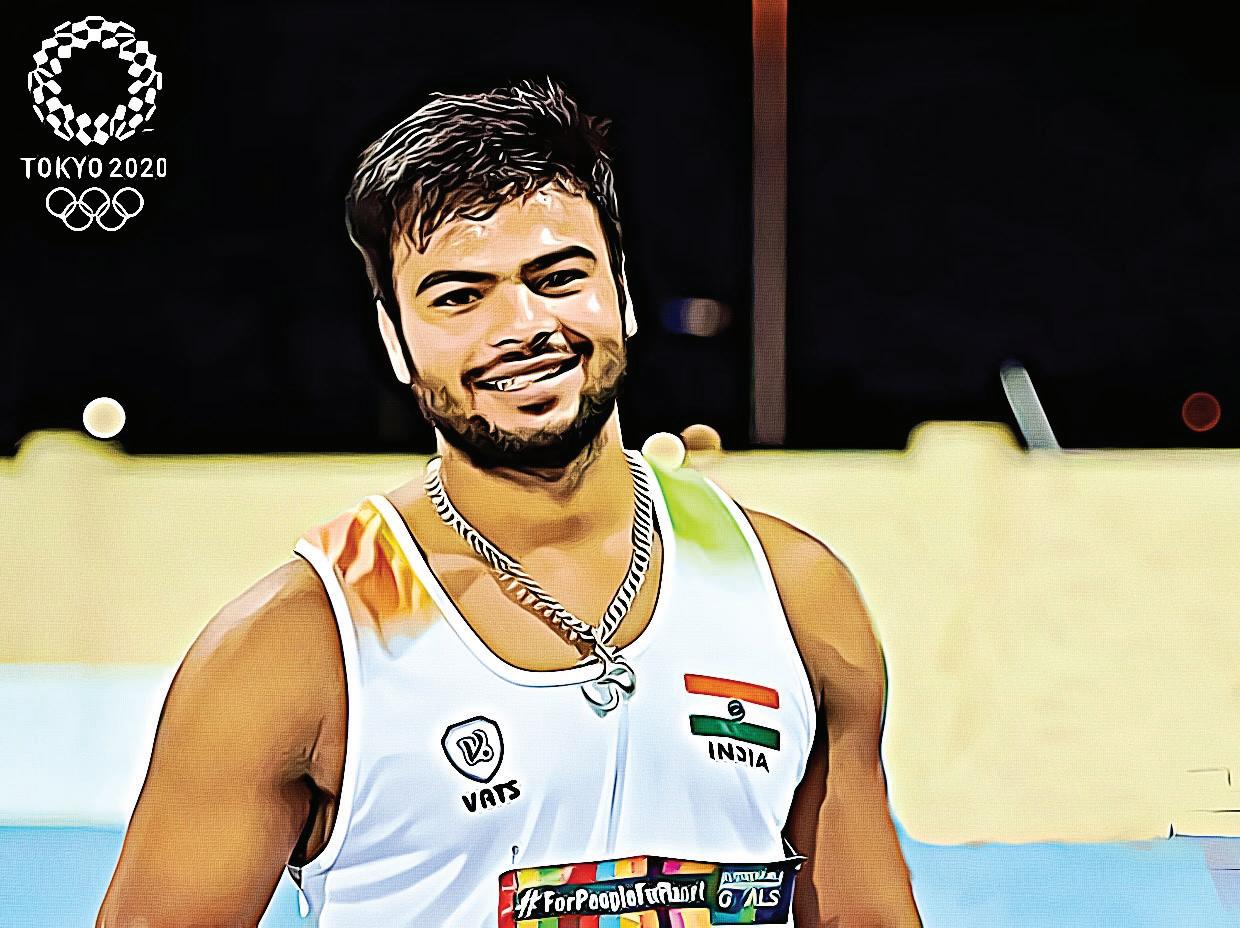
Ms Radhika: Today, we have Sumit Antil, world champion javelin thrower, as our guest! He has made a name for himself in para-athletics and has represented India in various international competitions. His dedication and hard work have earned him recognition and accolades, including medals in important events like the Paralympics and World Para Athletics Championships. Students, are you ready with your questions? (pauses for a moment) Riya, please ask your question.
Riya: Hello, Sumit Sir! Can you tell us about your early life?
Sumit Antil: Sure, Riya. I grew up in Khewra village in Haryana and like many children there, I dreamed of becoming a wrestler. I was a huge fan of Yogeshwar Dutt. So, I spent my days practising because it was my dream to be a champion. Life, however, had another plan for me.
Aarav: Sir, we know that your accident in 2015 changed your life. Can you tell us about that time?


Yogeshwar Dutt is the 3rd ever Indian wrestler to have won an Olympic medal for India. He has been honoured with the Rajiv Gandhi Khel Ratna award (2012) and Padma Shri award (2013).
Sumit Antil: I was returning home from a tuition class one evening and a speeding truck hit my motorbike. The accident was quite serious, and doctors had to amputate my left leg. I was 17, and it was a really tough time. My dream of becoming a wrestler had vanished overnight. All my friends were deciding what they wanted to do with their lives and I felt sad and lost.
Para-athletics: athletics for people who are disabled in some way recognition: fame and acceptance accolades: honour and awards
What incident caused Sumit’s dream of becoming a wrestler to vanish overnight?
amputate: to remove a certain body part through surgery vanished: disappeared suddenly
Arjun: I am really sorry to hear that, sir. How did you move forward, and what made you learn javelin throwing instead?
Sumit Antil: I met my coach Naval Singh by chance and he introduced me to javelin throwing. That day, I discovered a new passion, and that helped me pull myself out of those dark times. I moved to New Delhi to train seriously, and I dedicated myself to the sport. I missed my family and the comforts of home, but I knew I could not give up on my newly found dream!
Fatima: Can you tell us about your experience at the Tokyo Paralympic Games?
Sumit Antil: I qualified for the Tokyo Paralympic Games in 2020, and competing in the men’s F64 javelin throw event was an unforgettable experience. I broke the world record three times in the same competition! My first throw was 66.95 metres, which was a new record. My second throw was even further, and finally, my throw of 68.55 metres won me a gold medal.
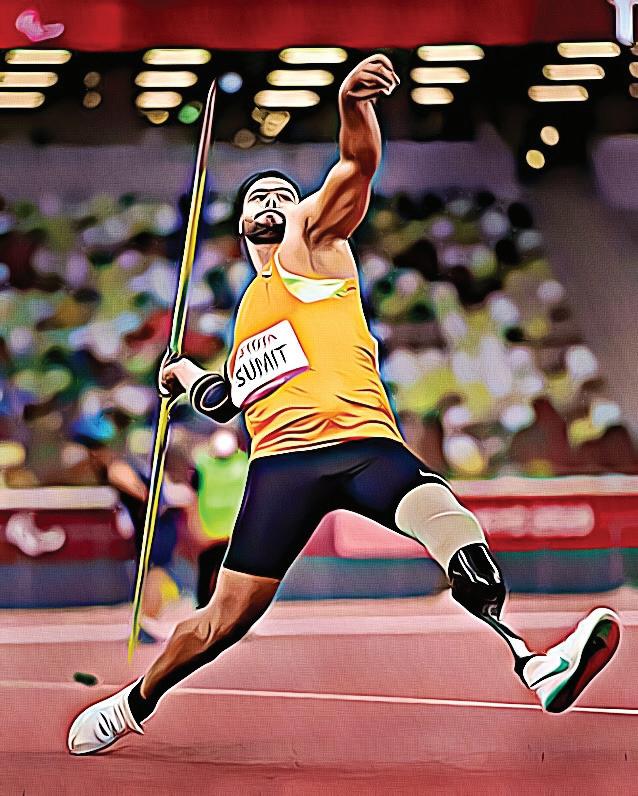
Iqbal: What would you say is the secret to your success?
Sumit Antil: I believe it is understanding my body and its needs. I chose a prosthetic foot instead of a blade, which many other athletes used. I felt the blade was pushing me backward when I threw the javelin. By understanding my body and making the right choices, I was able to give my best.
Neha: What advice would you give someone who wants to take up javelin throwing or any other sport?

Sumit Antil: Javelin throwing requires skill and technique, which only comes with practice.
passion: a strong feeling of love for or interest in something
prosthetic: an artificial body part that is made to replace one that has been lost technique: a special way of doing something
Devendra Jhajhari, who was also a javelin thrower, won his first gold in 2004 and his second in 2016, making him the first Indian paralympian to win two gold medals.

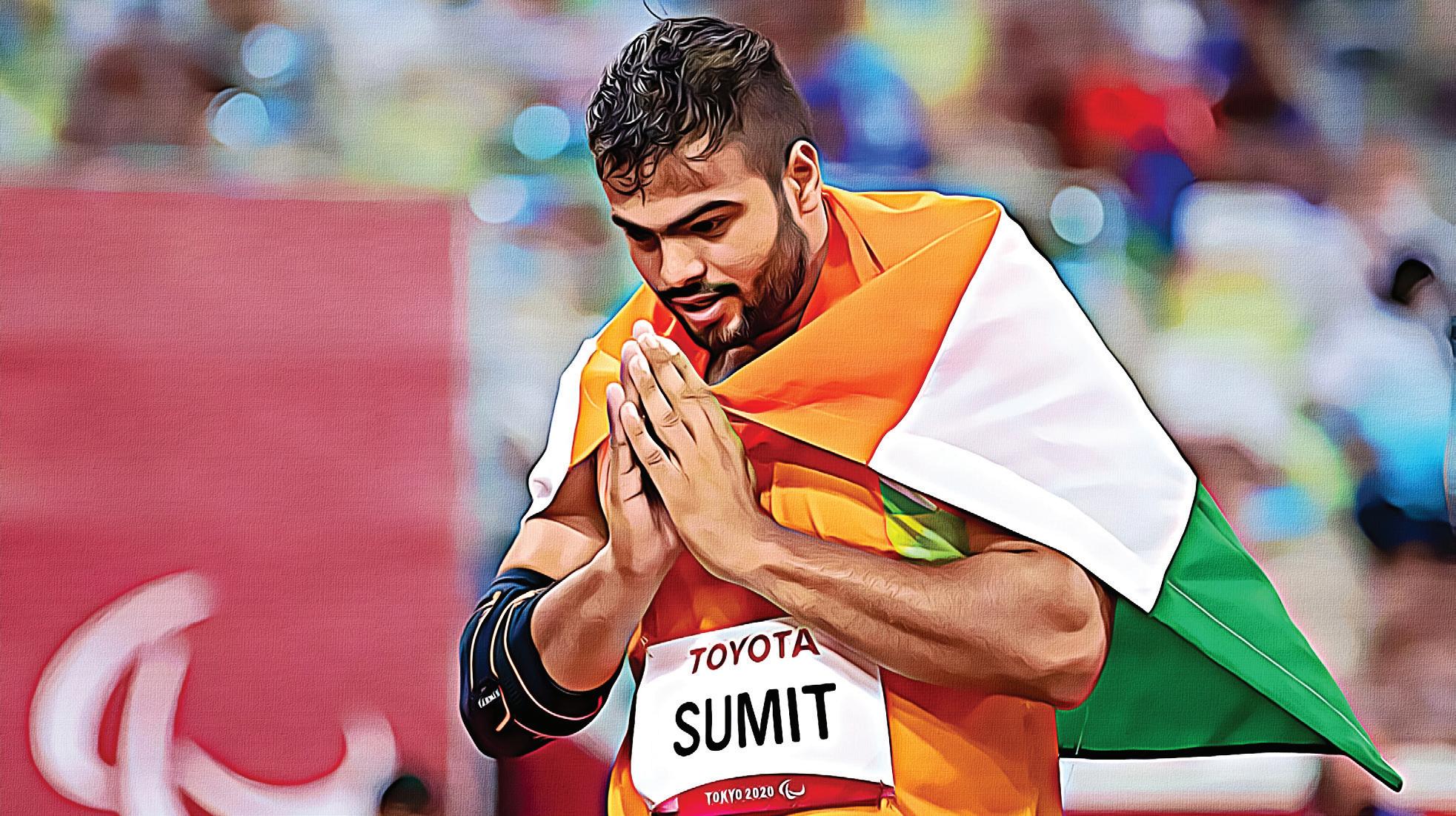
Never give up, stay dedicated. Also be ready to train in various conditions. I knew Tokyo is humid, so I trained in humid conditions to get used to it.
Aarav: How did it feel when you returned to India after your victory?
How did Sumit prepare for the Tokyo Paralympic Games in 2020?
Sumit Antil: It was overwhelming! Thousands of people greeted me at the airport. My family, especially my mother, was very proud and emotional. It was a moment of great joy and pride.
Meera: What are your future goals, Sir?
Sumit Antil: I am determined to win gold medals at the 2024 Paris Paralympics and possibly the 2028 Los Angeles Paralympics. I want to push the limits of my abilities, keep improving my throw distance, and inspire others to do the same.
Children: Thank you for sharing your story, Sumit Sir! You are a true inspiration to all of us.
Sumit Antil: Thank you, kids! It was wonderful talking to you all. Remember, never give up on your dreams and keep working hard!
humid: hot and wet determined: having the will to do something, no matter how hard it is push the limits of: to work very hard to achieve something that seems otherwise impossible
What is Sumit’s main goal for the next few years?
Listen to all the keywords here.



1. Fill in the blanks.
a Sumit Antil is a champion in .
b Sumit Antil grew up in village in Haryana.
c Sumit Antil’s original dream was to become a .
d Sumit Antil moved to to train under .
e Sumit Antil won a medal at the Tokyo Paralympic Games with a throw of metres.
2. Fill in the events leading to Sumit Antil’s gold medal at the Tokyo Paralympic Games.
Early life Dream
Life-changing event
New beginnings
Training
Qualified
Performance at the Olympics
3. Answer the questions in two or three sentences.
a What are the Paralympic Games?
b How did Sumit Antil feel after his accident? Explain why?
c Was Sumit Antil’s time in New Delhi easy for him? Why or why not?
d What does Sumit Antil believe is the secret to his success?
e What is Sumit Antil’s advice to aspiring sportspersons?




1. Use the words in the box to write one sentence about how Sumit Antil might have felt in each situation.
Hint Box:
hopeful proud shocked determined despairing encouraged overjoyed
He is involved in an accident.
He meets his coach.
He gets a prosthetic leg.
He wins a gold medal at the Paralympics.
2. What do you think is the main message of Sumit Antil’s story, and how do the events of his life support this message?
Main message:
Describe each event and explain how it supports the main message.
• Event 1:
Sumit Antil’s accident led to the amputation of his left leg, which changed his life. Despite this, Sumit did not stop believing in himself and his abilities. This event shows his determination.
• Event 2:
• Event 3:


3. Do some research and write the names of the paralympians and the sports in which they won gold medals in the 2024 games.



Sumit Antil is a great role model. Which of his qualities would you like to develop? Is there a particular goal you want to achieve with these qualities? In your notebook, explain how these qualities will help you achieve your goal.


An idiom is a phrase or expression that has a meaning different from the words themselves. Idioms often use figurative language to convey a particular idea or feeling. For example, if someone says, ‘It’s raining cats and dogs’, they don’t mean that animals are falling from the sky. Instead, it means that it is raining heavily.
1. Match the idioms and their meaning. go the extra mile to set higher standards than there were before raise the bar to achieve your aim break new ground to set goals that you will have to stretch to achieve hit the mark to do something totally new or different aim high to put in extra effort
2. Use the antonyms in the box to fill in the blanks.
Hint Box: realistic – unrealistic possible – impossible hopeful – hopeless brave – afraid similar – various
a It is to climb the mountain, but it is to fly without wings.
b Those athletes who trained in conditions were not as prepared as Sumit Antil, who trained in conditions.
c Shreya felt about winning, but after her injury she thought her chances were .
d She set a goal, but he set an goal that he could not achieve.
e The firefighter who saved the child was very , but the child was .



When talking about actions that are happening at the moment and continuing to happen, we use the present continuous tense.
Remember!
A verb form that shows the time of an action is called its tense.
Let us look at how to use the verb forms in the present continuous tense.
Doer I He, She, It We, You, They
Rule am + verb + ing is + verb + ing are + verb + ing
Example I am training for the race at the moment. Sumit is answering their questions now. The students are talking to the guest.
We use is, are, or am (the verbs ‘to be’) to make negative sentences and to ask questions in the present continuous tense.
Type Negative Sentence Question
Rule Use ‘not’ between the verb ‘to be’ and the main verb + ing. You can use contractions like isn’t or aren’t.
Examples I am not training for the race. Sumit isn’t answering their questions. They aren’t asking him more questions.
Move the verb ‘to be’ to the front of the sentence.
Add a question mark at the end.
Am I training for the race?
Is Sumit answering their questions? Are they asking him more questions?
1. Use the correct verb forms for the present continuous tense.
a Who is going to accept the award? Oh wait, the coach (go) up.
b Why the captain (not go)?
c He (represent) India in the Olympics at the moment.
d I see the members of the team (look) very pleased with themselves. Look, those two team members (hug) each other.
e Everyone (cheer) with them.
2. Fill in the blanks using the correct option for the given tense.
a Simple present: Murli (swims/is swimming) very well.
b Present continuous: Murli (prepares/is preparing) for the paralympics. swims
c Present continuous: His friends (record/are recording) his times.
d Present continuous: The coaches (watch/are watching) each player closely.
e Simple present: I am sure the whole country (be) proud of Murli.
We use the past continuous tense to talk about actions that were happening in the past. It’s like peeking into a moment from the past when something was busy happening. Let’s look at verb forms for the past continuous.
One doer (Self and others)
One doer (you) and more than one doer was + verb + ing were + verb + ing
For example: I was returning home from a tuition class when a truck came by.
Sumit was sharing his story on the stage.
For example: All my friends were deciding what they wanted to do. You were entering the Olympic stadium this time last year!
The rules for past continuous tense in negative sentences and questions are similar to those of the present continuous tense.
Rule Use ‘not’ between the verb ‘to be’ (was/were) and the main verb + ing. You can use contractions like wasn’t and weren’t.
Examples I was not training for the race. Sumit wasn’t answering their questions.
3. Fill in the blanks with the past continuous verb form.
Was/Were + “doer” + verb + ing?
Were you training for the race?
a What you all (do)? I could not get hold of anyone!
b Why you (look) for us so urgently?
c I (sit) in a traffic jam, and I wanted to let you know I would be late.
d I am sorry, we (train) when you phoned.
e Rocky (practice) on the rowing machine and I (lift) weights.
4. Rewrite the sentences using the clues given.
a Everyone in the gym was working out.
Sai (not), he was napping in the office.


b The others were all working hard.
Why
c They were preparing for the Olympics.
No, , but for the Paralympics.
d Sumit was throwing the discus.
No, , he is a javelin thrower.


Fill in the blanks while you are listening to the poem.
a Reach for the , touch the .
Listen to the text here.
b Work with passion, give it your all, you’ll find your way, you won’t .
c Believe in , take each day, step by step, you’ll find your way.
d Keep your bright, never lose sight, with and heart, you’ll shine .


Practise speaking here.
An interview is a meeting where one person asks questions and another person answers them. It can be used to learn more about someone’s experiences, ideas or skills.
The interviewer is the person who asks the questions in an interview. The interviewee is the person who answers the questions in an interview.
Sit in pairs. Imagine that one of you is a famous personality like a scientist, freedom fighter, sportsperson or politician and the other is the interviewer. Do research about the famous personality together and present your interview in class.


Do research beforehand.
Plan your questions and answers beforehand.
Greet and use polite words like ‘please’ and ‘thank you.’
Pay attention to what the person is saying. Don’t interrupt while they are talking.
Stay on the topic of the interview and ask follow-up questions if you find something interesting.
End the interview politely when you’re done. Always thank the interviewee for their time and answers.



A story is a real or imaginary account of events that is shared to entertain, inform, or inspire the reader. Stories can be written or told and have characters, a setting, and a beginning, middle and end.
Once upon a time, in a small village named Greenfield, there lived a young boy named Ravi who loved building things. He dreamed of inventing something to help his village.
One sunny morning, Ravi noticed how hard it was for people to fetch water from the well. Determined to find a solution, he started sketching designs in his notebook but he lacked the necessary materials.
Ravi went to his teacher, Mrs Kapoor, who encouraged him and provided some materials from the school’s science lab. She also suggested he should present his idea to the village council. Impressed by his determination, the council provided additional materials and access to the community workshop.
Ravi worked tirelessly, learning from each mistake. After weeks of hard work, he completed his ‘Water Helper,’ a cart with big wheels and a pulley system that could carry six pots of water at once.
Thanks to Ravi’s invention, fetching water became much easier for everyone in Greenfield. Ravi felt proud and happy to have made a difference.
Beginning
Middle End
Write a short story where the main character sets a goal and achieves it through hard work. Make sure that the story describes the setting, the characters, their problems and solutions.



Get Set

Name five things you would get at the following places.













Van Amsterdam was a very popular baker, but something happened and he lost all his customers. How did he get his business running again? Let’s find out.


In the Dutch colonial town later known as Albany, New York, there lived a baker, Van Amsterdam, who was as honest as he could be. Each morning, he checked and balanced his scales, and he took great care to give his customers exactly what they paid for—not more and not less.
Van Amsterdam’s shop was always busy, because people trusted him, and because he was a good baker as well. And never was the shop busier than in the days leading up to December 6, Saint Nicholas Day.
At that time of year, people flocked to the baker’s shop to buy his fine Saint Nicholas cookies. Made of gingerbread, iced in red and white, they looked just like Saint Nicholas as the Dutch know him—tall and thin, with a high, red bishop’s cap, and a long, red bishop’s cloak.
One Saint Nicholas Day morning, the baker was just ready for business, when the door of his shop flew open. In walked an old woman, wrapped in a long black shawl.
‘I have come for a dozen of your Saint Nicholas cookies.’
Taking a tray, Van Amsterdam counted out twelve cookies. He started to wrap them, but the woman reached out and stopped him.
‘I asked for a dozen. You have given me only twelve.’
‘Madam,’ said the baker, ‘everyone knows that a dozen is twelve.’
Dutch: belonging to the Netherlands colonial: (here) set up as a colony of a different country
Saint Nicholas Day: a day that is celebrated to honour a Christian saint, named Nicholas
What made Van Amsterdam so popular with his customers?

flocked: came together in a large group bishop: a high-ranking priest of the church cloak: a long piece of cloth that is worn over one’s clothes dozen: twelve

‘But I say a dozen is thirteen,’ said the woman. ‘Give me one more.’
Van Amsterdam was not a man to bear foolishness. ‘Madam, my customers get exactly what they pay for—not more and not less.’
‘Then you may keep the cookies.’
The woman turned to go, but stopped at the door.
‘Van Amsterdam! However honest you may be, your heart is small and your fist is tight. Fall again, mount again, learn how to count again!’
Then she was gone.
From that day, everything went wrong in Van Amsterdam’s bakery. His bread rose too high or not at all. His pies were sour or too sweet. His cakes crumbled or were chewy. His cookies were burnt or doughy.
‘Van Amsterdam! However honest you may be, your heart is small and your fist is tight.’ Do you agree with the woman? Why/Why not?
His customers soon noticed the difference. Before long, most of them were going to other bakers.
‘That old woman has bewitched me,’ said the baker to himself. ‘Is this how my honesty is rewarded?’
A year passed. The baker grew poorer and poorer. Since he sold little, he baked little, and his shelves were nearly bare. His last few customers slipped away.
Finally, on the day before Saint Nicholas Day, not one customer came to Van Amsterdam’s shop. At day’s end, the baker sat alone, staring at his unsold Saint Nicholas cookies.
‘I wish Saint Nicholas could help me now,’ he said. Then, he closed his shop and went sadly to bed.
That night, the baker had a dream. He was a boy again, one in a crowd of happy children. And there in the midst of them was Saint Nicholas himself.
your fist is tight: a phrase that means a person does not give generously; a miser mount: get back up doughy: not fully baked customers: people who buy something
How did Van Amsterdam feel when he lost all his customers?
bewitched: put a magic spell on bare: empty slipped away: (here) slowly stopped coming midst: in the middle
The bishop’s white horse stood beside him, its baskets filled with gifts. Nicholas pulled out one gift after another, and handed them to the children. But Van Amsterdam noticed something strange. No matter how many presents Nicholas passed out, there were always more to give. In fact, the more he took from the baskets, the more they seemed to hold.
Then Nicholas handed a gift to Van Amsterdam. It was one of the baker’s own Saint Nicholas cookies! Van Amsterdam looked up to thank him, but it was no longer Saint Nicholas standing there.
Smiling down at him was the old woman with the long black shawl.
Van Amsterdam awoke with a start. Moonlight shone through the half‑closed shutters as he lay there, thinking.
‘I always give my customers exactly what they pay for,’ he said, ‘not more and not less. But why not give more?’
The next morning, Saint Nicholas Day, the baker rose early. He mixed his gingerbread dough and rolled it out. He moulded the shapes and baked them. He iced them in red and white to look just like Saint Nicholas. And the cookies were as fine as any he had made.
Van Amsterdam had just finished, when the door flew open. In walked the old woman with the long black shawl.
‘I have come for a dozen of your Saint Nicholas cookies.’
In great excitement, Van Amsterdam counted out twelve cookies—and one more.
‘In this shop,’ he said, ‘from now on, a dozen is thirteen.’
What did Van Amsterdam realise? Was it important?
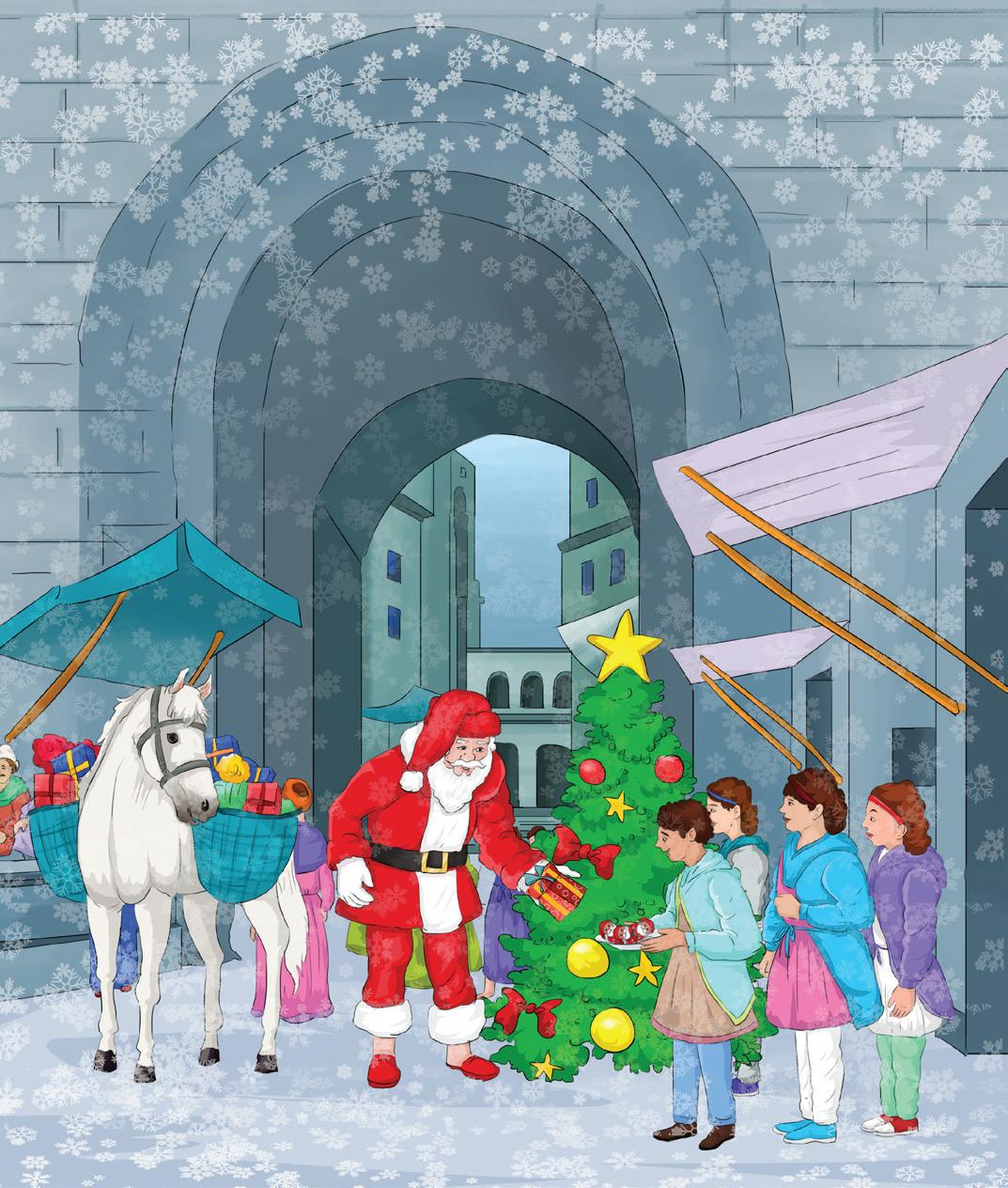
with a start: suddenly shutters: covers on windows
moulded: formed

‘You have learned to count well,’ said the woman. ‘You will surely be rewarded.’ She paid for the cookies and started out. But as the door swung shut, the baker’s eyes seemed to play a trick on him. He thought he glimpsed the tail end of a long red cloak.
As the old woman foretold, Van Amsterdam was rewarded. When people heard he counted thirteen as a dozen, he had more customers than ever.
In fact, Van Amsterdam grew so wealthy that the other bakers in town began doing the same. From there, the practice spread to other towns, and at last through all the American colonies. And this, they say, is how thirteen became a ‘baker’s dozen’—a custom common for over a century, and alive in some places to this day.
The concept of bakers giving thirteen pieces instead of twelve originated in England because of a law that one of their kings had passed.
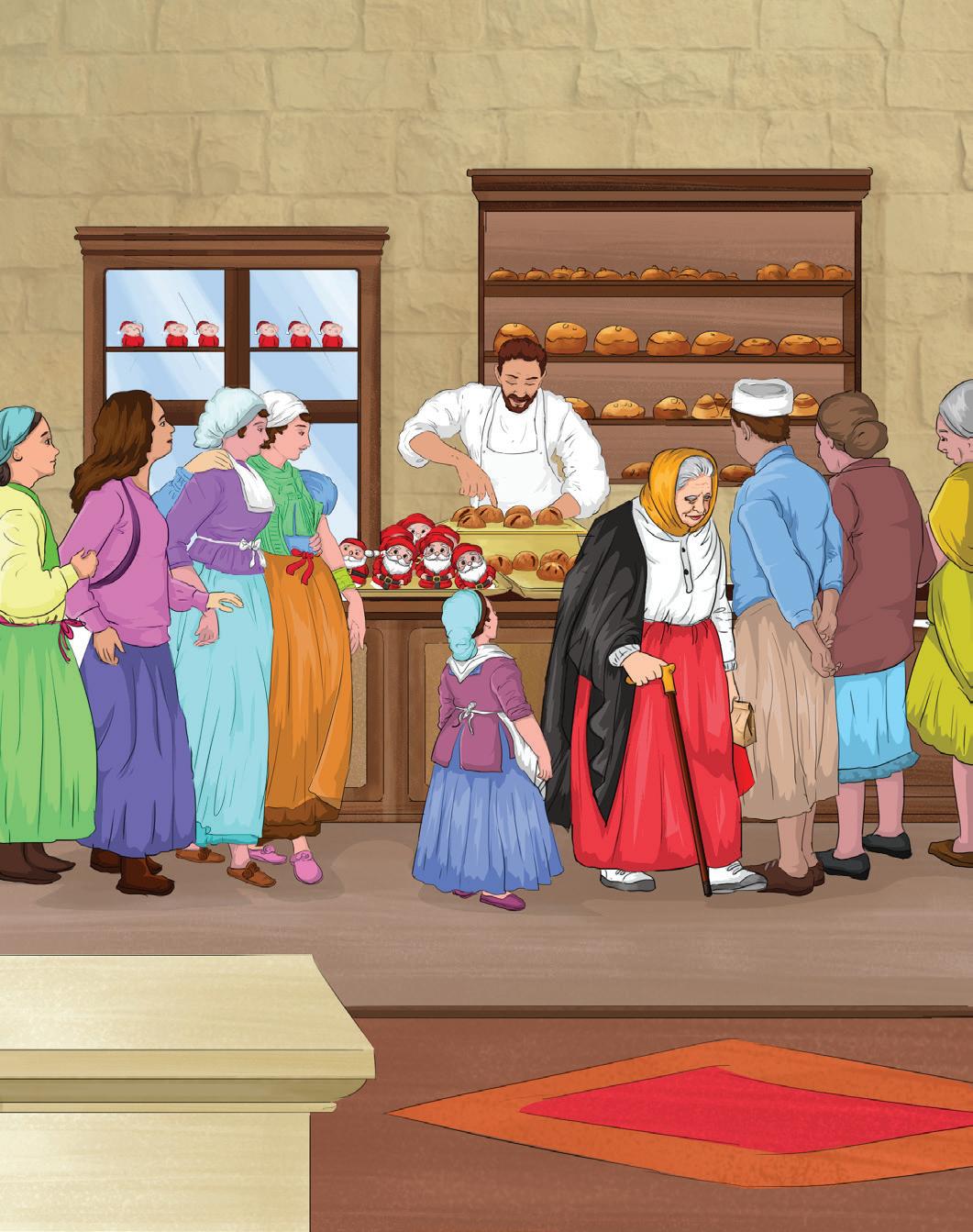
Did giving thirteen cookies for the price of twelve work for Van Amsterdam?
glimpsed: caught a quick look foretold: said something was going to happen before it happened colonies: countries or areas controlled politically by a more powerful country (in this case England, Scotland, and later Great Britain) custom: an established way of doing things century: a hundred years
Listen to all the keywords here.



1. Fill in the blanks.
a Van Amsterdam was a in the Dutch colonial town, later known as Albany, New York.
b The baker’s shop was busiest in the days leading up to Day.
c The old woman asked for a of Saint Nicholas cookies.
d After the old woman’s visit, Van Amsterdam’s bakery experienced many
e In Van Amsterdam’s dream, he saw Saint Nicholas handing children
2. Fill in the chart with information about the story.
3. Answer the questions in two to three sentences.
a How did Van Amsterdam ensure he was honest with his customers?
b Describe what the Saint Nicholas cookies looked like.


c The old woman says ‘Van Amsterdam! However honest you may be, your heart is small and your fist is tight. Fall again, mount again, learn how to count again!’ What do these lines mean?
d How did Van Amsterdam’s business change after the old woman’s visit?
e What did Van Amsterdam realise after his dream?



The theme of a story is its main idea that the a text focusses on. The message is the lesson that we learn from the story.
1. What do you think the author’s purpose was in writing this story?
a To entertain readers with a fun and magical story.
b To teach a lesson about the importance of generosity.
c To inform readers about historical practices in baking.
d To persuade readers to take up baking as profession.
2. Which of the following themes best fits the story?
a Honesty
b Generosity
c Hard work
d Friendship
3. Write the message of the story in your notebook.
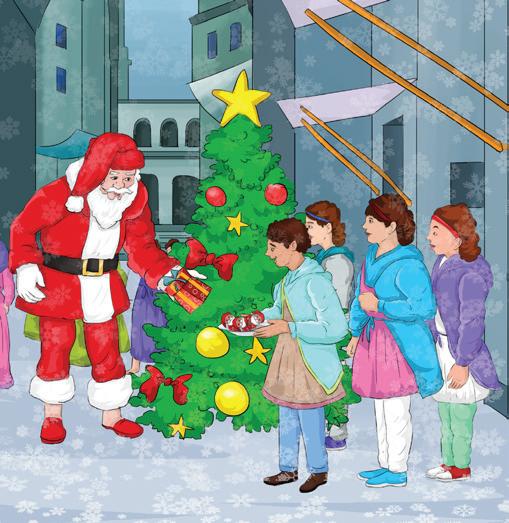
4. Explain how the events and characters in the story support the theme and the message. Provide specific examples from the story to support your answer. Write in your notebook.
Hint Box:
Think about how Van Amsterdam’s actions change after he meets the old woman and what he learns from his dream.





























Imagine you have a box of your favourite sweets and you plan to share them with your friends at school. You realise you have just enough for each friend to have one piece. One friend asks if they can have an extra piece because they really love those sweets. What would you do in this situation? Discuss your answer with a friend.






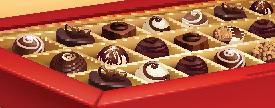






Verb










































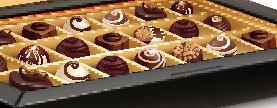

1. Use the dictionary to find the meanings of the words. Then, use the words to fill in the blanks.
Hint Box: scale shelves dough trick cloak
a The library has many filled with interesting books.
b On a cold day, she wrapped her tightly around her shoulders.
c We kneaded the to make delicious homemade bread.
d The magician performed a clever that amazed the audience.
e The scientist used a to measure the exact weight of the rock.
A phrasal verb is a combination of a verb and a preposition or an adverb. This combination creates a meaning different from the original verb.
For examples: ‘give up’ means to quit or stop trying, which is different from the meanings of ‘give’ and ‘up’ individually.

2. Match each phrasal verb in bold and its correct meaning.
The children look up to Saint Nicholas because he is kind. to enter a place
The old woman set off on her journey after buying the cookies. to admire or to respect someone Saint Nicholas’ white horse can take off its saddle. to change into something else
The baker’s dream turned into a lesson about giving. to start a journey
The old woman came in to buy the cookies. to remove
3. Fill in the blanks with phrasal verbs in the box.
Hint Box: find out went on ran out of put on looked forward to
a The baker was sad when he customers in his shop.
b Van Amsterdam with his business, even when times were tough.
c The children always Saint Nicholas Day because of the special cookies.
d The baker had to his apron before starting to bake.
e The old woman wanted to if the baker had learnt his lesson. Go Grammar


Subject-Verb Agreement
Remember!
In a sentence, the subject is who or what the sentence is about. The subject is mostly the doer or the thing about which the information is given. The verb is the action which takes place.
In a sentence, a verb should match with or agree with the subject in number (singular or plural). This is called subject-verb agreement.
If the subject is singular, the verb will also be singular, that is, the verb form will be verb + s/es.
If the subject is plural, the verb will also be plural.
Subject Type
Verb Form
One person, animal or thing singular
More than one person, animal or thing plural
An uncountable noun singular
A collective noun singular
Subjects joined with and plural
Subjects joined with or, either/or, neither/nor singular or plural depending on the noun closest to the verb
Singular pronouns like each, nobody, everyone, every singular
Plural pronouns like several, many, few, a few, both plural
When there or here is used, the subject comes after the verb singular or plural
When using ‘some’ singular or plural
Example
Van Amsterdam bakes Saint Nicholas cookies.
The bakers bake delicious cookies.
Honesty is the best policy.
The stack of cookies looks good.
The cake and pie taste delicious.
Neither the cake nor the pie tastes good. Neither the cake nor the pies taste good.
Everyone bakes in this class. Each child gets a gift on Christmas.
Nobody goes to Van Amsterdam’s bakery.
Several villages participate in the baking contest.
Many children get gifts on their birthday.
A few of the cookies were stale.
Here is a bakery.
There are a few cakes left.
Some flour is left. Some cakes are left.


1. Write the correct verbs that agree with the subjects in the sentences below.
a Generosity off. (pay/pays)
b Each of his customers the difference. (notice/notices)
c Neither the old woman nor Saint Nicholas for a year. (appear/appears)
d The baker and his wife at Saint Nicholas. (smile/smiles)
e A few bakers in the village a feast for the special day. (prepare/prepares)
2. Correct and rewrite the sentences.
a An old man and his wife is praying for a child.
b A basket of peaches are sitting on the table.
c Both gasps when a boy pop out of a peach.
d Neither the dog nor the monkey leave the boy.
e There are a castle with demons and monsters.
3. Fill in the blanks with correct verb forms.

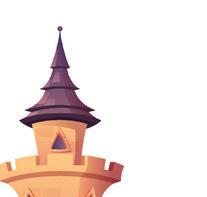
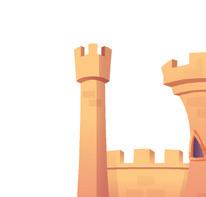
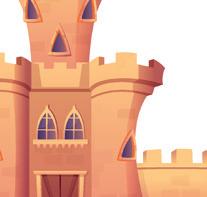


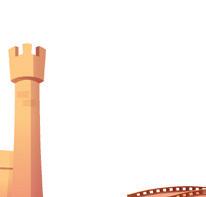

Hint Box: yield declare get look select gather
The Chinese Emperor that the boy whose plant grows best will be emperor after him. Each boy seeds from the palace. Jun waters his seeds every day. But, his hard work no result. His plant does not grow. A crowd to see the plants. All the plants except Jun’s healthy and tall. The emperor and his minister Jun as the winner. The emperor had given the boys boiled seeds to test their honesty.


Listen Well

Listen carefully to the story and choose the correct answer.
Listen to the text here.
Who is the main character?
a The king b The treasurer c The son
What did the character want?
a He wanted to be with his father.
b He wanted his father to recognise his talent.
c He wanted his father to hug him.
What was the problem?
a The father asked his son to leave the house.
b The son married the treasurer’s daughter.
c The son stole the treasure.
How did the character solve the problem?
a He organised a day on which he displayed his talent.
b The king convinced his father of the son’s talent.
c The son used his talent to help others.
What happened in the end?
a The father accepted that he had made a mistake.
b The son became the king.
c The father still did not accept his son’s talent.

As you listen, try and remember the order in which the events happen.
Recall the story in order and tick () the correct answer.



Practise speaking here.
Think of a story that you read or heard and narrate it in class. Make sure that the story has a surprise element or a problem that is solved during the story.



The events of the story should be told in order.
Use simple sentences to narrate your story.
Tell the story using your voice, gestures and facial expression.
Use pauses to arouse the curiosity of your listeners.

Write a poem based on a story that is set in a different country.
Read the story carefully.
Think about the main message or lesson of the story. Note down the emotions felt by the characters. (joy, sadness, bravery, fear). Write down important words from the story that relate to the themes and emotions. Your poem may or may not rhyme.
Model Answer
Read the story about Layla
A few years ago in Egypt, a young explorer named Layla was working near the Great Pyramids. She found a map that led to an undiscovered room filled with ancient objects. Layla worked hard over the next few months to uncover the secrets of the past.
A poem inspired by this story could look like this:
Layla found an old map, Buried in the desert sand.
To the Pyramids, she went, Every day a new event.
Ancient secrets, treasures bright, Layla’s heart filled with delight. With each step, her courage grew, Ancient stories, she brought to view.
Read the story and write a poem inspired it. Share your poem in class.
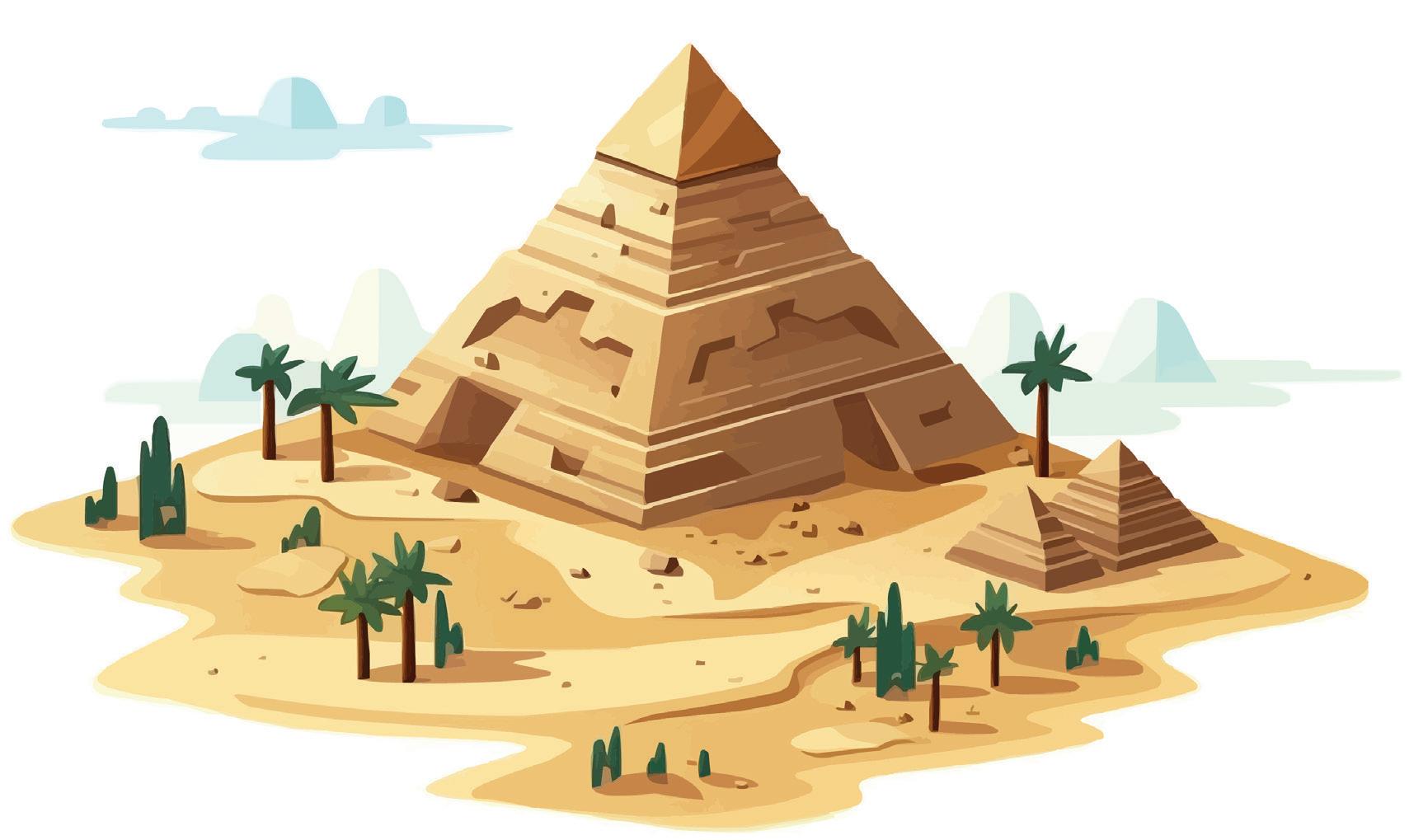
Kwame, a guide at the Great Pyramids of Giza, loved sharing Egypt’s history. One hot afternoon, while Kwame was leading a tour, an experienced historian saw what looked like a hidden door in the wall of the pyramid. With great excitement, Kwame and the group managed to open the door and found a hidden room filled with ancient treasures. The group was thrilled, and Kwame felt proud to have discovered something new.

1. Write the correct sentence type in front of the sentences.
Hint Box: Declarative Interrogative Imperative Exclamatory
a The whale is huge!
b The whale is lying on the beach.
c Why can’t the whale get back into the water?
d Get as many buckets of water as possible.
e Keep the whale wet!












2. Read the conversation and add the correct punctuation marks to these sentences.
Tom visits his Uncle Ben’s farm
Tom: May I help you uncle
Uncle: Carry the hay to the cow shed, young man
Tom feeds the cows
Tom: Wow The cows eat their feed so quickly



3. Tim and Jill find a kitten in a park. Rewrite the sentences by converting them into the type mentioned.
a Tim is searching for a kitten.
b Are we searching for it at the right place?
c The kitten was in pain.
(Interrogative) (Declarative) (Interrogative)
d Jill is pulling out a small piece of glass from her paw.
e Are the adults here to help them?
4. Look at the picture. Write the four types of sentences based on the picture.
a . (Declarative)
b . (Interrogative)
c . (Imperative)
d . (Exclamatory) (Interrogative) (Declarative)

1. Underline the correct verb form.
a I (will draw/draw) a cartoon tonight.
b Last year, he (carved/will carve) a beautiful figure from marble.
c I always (will enjoy/enjoy) watching Gayathri paint.
d They (presents/will present) a new play next month.
e The art society (conducts/will conduct) an art competition every year.
2. Rewrite the sentences with the correct form of verbs.
a Manu got up early every day because there is a lot of work.
b Tina will study art last year.
c Madhubani art will have geometric patterns.
d In the future, Harry paints portraits.
e Yesterday, I will attend a pottery class.
3. Change the verb forms in the sentences. Begin your sentences with the words given.
a Trisha makes a clay sculpture. Last week,
b He paints folktales and stories.
Tomorrow,
c Warli art will show scenes of tribal life.
Usually,
d I draw sketches of nature.
Yesterday,
e A crowd of people will gather to see his artworks. A crowd of people every day.

1. Convert these sentences to the present continuous tense.
a Colin plays football.
b They pack their kits.
c Does she bounce the ball towards the basket?
d You play at the forward position today.
e Why doesn’t she wear gloves?
2. Convert these sentences to the past continuous tense.
a They did football drills.
b Did she practise badminton?
c I swam for 2 hours.
d Why didn’t you bat well at the start?
e Everyone danced with joy after our win.
1. Strike out the wrong option in each sentence.
a Silkworms build/builds a cocoon around themselves.
b A bunch of mulberry leaves look/looks eaten.
c The queen’s curiosity result/results in the discovery of silk.
d The Queen and the Emperor rear/rears silkworms in their garden.
e The world admire/admires silk fabric.
2. Rewrite the sentences using the correct subject-verb agreement.
a Aladdin live on the streets of Agrabah.
b Many merchants sells their goods in the market.
c Either Aladdin or his monkeys steals some goods.
d Princess Jasmine visit the market in disguise.
e A troop of soldiers enter the market.
3. Look at the picture and write four sentences using correct subject-verb agreement.
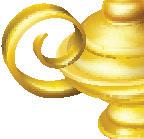













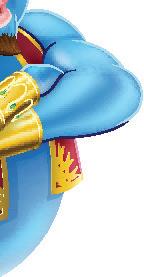













Name of the Student:
Class: 4
Roll Number:
Section:
Date:
Section – A (Reading and Vocabulary—25 marks)
Read the text and answer the questions.
In the mountains of Persia (now Iran), there is an ancient art of hand-weaving carpets that is slowly disappearing. For centuries, skilled weavers have carefully created stunning carpets using wool or silk dyed with natural pigments of plants and minerals. They use patterns that tell stories of their culture, beliefs, and history and symbols representing prosperity, happiness, or protection. These weavers often work from home and each carpet is a masterpiece, often taking months or even years to complete. Some carpets contain more than a million hand-tied knots. However, as machines take over and cheaper, mass-produced carpets flood the market, this beautiful tradition is fading away. If fewer people learn the art and if it isn’t preserved, a piece of history will be lost forever. Saving this art, means keeping a connection to the past alive. The intricate stories woven into every carpet must remain a part of the world’s cultural heritage.
1. Answer the following questions in two to three sentences. (5 marks)
a Which traditional art is mentioned in the text?
b What materials and colours are used to make this form of art?
c What do the patterns in this form of art represent?
d Why are fewer people learning this ancient art form?
e Why is it important to save the art form? Give two reasons.
2. State True or False. (5 marks)
a Machine-woven carpets have been produced in Persia for centuries
b The weavers who make hand-woven carpets often work from home
c Each hand-woven Persian carpet takes months or even years to complete.
d The patterns on Persian carpets tell stories of the culture and history of the people.
e More and more people are learning this art form.
3. Find the words from the text that mean the same as the words below. (3 marks)
a vanishing:
b designed:
c less expensive:
4. Read how the words have been used in the last paragraph. Use the words in sentences of your own. (2 marks)
a preserved:
b connection:
Read the poem and answer the questions that follow. In a world of colours, shapes, and light, Artists envision both day and night. With brushes, pencils, clay in hand, They turn their thoughts to something grand.

Da Vinci saw the stars above, And painted Mona Lisa with endless love. Van Gogh looked at the midnight sky, And swirled the stars, letting them fly.
Each artist finds a different way, To show the world what they wish to say. Through lines, through shades, through gentle care, They paint a world we all can share.
5. Fill in the blanks with suitable words. (5 marks)
a In a world of colours, shapes, and , artists dream both day and night.
b With brushes, pencils, clay in hand, they turn their thoughts to something .
c Da Vinci saw the stars above, and painted with endless love.
d Van Gogh looked at the sky, and swirled the stars, letting them fly.
e Each artist finds a different way to show the world what they wish to .
6. Answer the questions in one to two sentences. ( 6 marks)
a What materials do the artists use?
b What does ‘turn their thoughts to something grand’ mean?
c What do you understand by ‘they paint a world we all can share’?
7. Choose the correct answers. (4 marks)
a In the poem, the word ‘gentle’ means:
i rough
iii loud
b The synonym of the word ‘grand’ is:
i tiny
iii ordinary
ii tender
iv quick
ii important
iv humble
c In the poem, the word ‘envision’ means:
i make ii create
iii imagine
d The synonym of the word ‘swirled’ is:
i sent
iii twirled
iv carve
ii drew
iv took
Section – B (Grammar—10 marks)
8. Fill in the blanks with the correct form of the verb in brackets. (4 marks)
a The artist (create) a new painting last month.
b Sophie (draw) a picture of animals every day.
c Last year, the students (make) a large mural for their school.
d Tomorrow, the class (learn) how to make clay figures.
9. Use the clues to rewrite the sentences in the correct tense (time). (6 marks)
a The artist painted a beautiful picture on my wall last summer.
Next year again.
b Every day, children create colourful drawings in their art class.
Last year’s students also

c The famous sculptor will make stunning statues from marble. The famous sculptor every day.
10. Rajat and Binya are talking about an art fair they went to last week. Complete the comic strip. (5 marks)
Hello Paul, . I liked the
Hi, Jiya! Did you attend ?
Oh, I loved the . What did you ?
Oh, . I also heard the speech by ? Did you see the ?
Yes! It inspired me to .
That is wonderful! I’ve got to go. I’ll see you later. Bye.
11. Write a letter to your friend who has recently switched schools informing him about the Art and Cultural festival that was organised at your school. (10 marks)
Talk about:
• When and where it was.
• Highlights of the event.
• Purpose of the event
• The chief guest.
Name of the Student:
Class: 4
Roll Number:
Section:
Date:
Section – A (Reading and Vocabulary—25 marks)
Read the text and answer the questions.
Usain Bolt, the fastest runner in the world, didn’t have an easy journey. Even though he was fast, he faced problems like having a curved spine and a hamstring injury that almost stopped him from running. He practised every day, running up and down hills and doing exercises to get stronger. Even when things were tough, he kept trying and stayed focussed on his dream. His hard work helped him win eight Olympic gold medals and break many world records before he retired from competitive sport in 2017. Usain Bolt’s story teaches us that, no matter how many obstacles we face, staying focussed and working hard can help us achieve our goals and make our dreams come true.
1. Number the events, 1–4, in the correct order. (4 marks)
a Usain Bolt won eight Olympic gold medals.
b He retired from competitive sport in 2017.
c Usain Bolt faced problems with his spine and injuries.
d Usain Bolt practised every day to improve his strength.
2. Answer the questions in two to three sentences. (6 marks)
a Describe the challenges Usain Bolt faced.
b How did Usain Bolt overcome his problems?

c What lesson do we learn from Usain Bolt’s life?
3. Match the words and their meaning. (3 marks)
a injury a goal or ambition you want to achieve
b dream harm or damage to the body
c dedication commitment and hard work towards something
4. Look in the passage to find an antonym for these words. Use the anonym in a sentence of your own. (2 marks)
a easy:
b distracted:
Read the poem and answer the questions.
Malala dreamed of books and peace, Her goal was clear, it didn’t cease.
A voice for girls, strong and bright, She fought for learning, shining light.
Through struggles, fear, and darkest days, She stood with courage, found her ways.
Her spirit soared, a guiding flame, In every heart, she made a name.
The world still hears her steady call, For education, she stands tall. With every step and every fight, Malala leads with hope and light.
5. Fill in the blanks using words from the poem. (2 marks)
a Malala was a shining light who fought for the of girls.
b She struggled through and dark days.
6. Write True or False. (2 marks)
a Malala’s dream was only about peace.
b Malala’s spirit was described as a guiding flame.
7. Answer the questions in one to two sentences. (2 marks)
a What does the poem say Malala fought for?
b How did Malala’s spirit inspire others, according to the poem?
8. Find a word from the poem for each phrase. (2 marks)
a To stop or come to an end:
b Showing the way or leading:
9. Write a short paragraph (3–4 sentences) about how Malala’s actions, as described in the poem, can inspire others. Use details from the poem in your answer. (2 marks)
Section – B (Grammar—10 marks)
10. Choose the verbs that agree with the subjects in the sentences. (5 marks)
a Determination success. (inspire/inspires)
b Every student their goals in class. (set/sets)

c Neither the teacher nor the students distracted during the lesson. (is/are)
d The team and their coach on winning the championship. (focus/focusses)
e Several students in the group their progress regularly. (track/tracks)
11. Correct and rewrite the sentences. (5 marks)
a The team are working hard on preparing for the match.
b Each of the students have a practice programme.
c Neither the teacher nor the staff were late for the meeting.
d The group and its leader is planning a new activity.
e Many books about focus helps in concentrating well.
12. Look at the picture. Write a short story where the main character faces many obstacles. Mention the setting, problems and solutions. Use describing words. (10 marks)
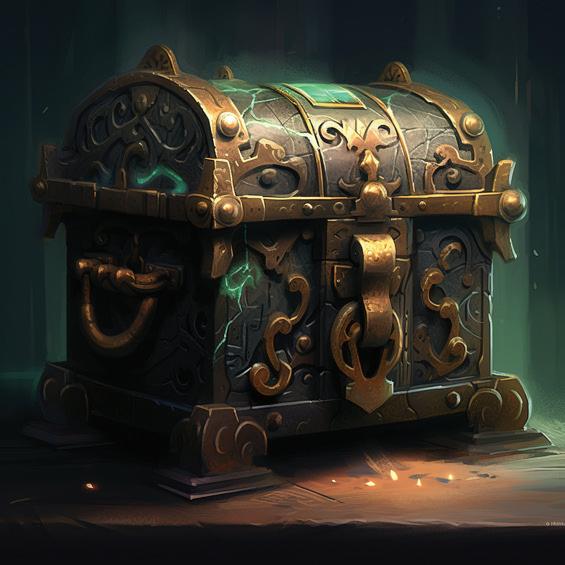
13. Write a review of the book that you like most. In your book review do not give away the ending. Also, remember to rate the book. (5 marks)






















































































It is Rita’s parents’ 15th wedding anniversary! She wants to give them a family photo, but the frame has a plain brown edge. Rita doesn’t like it and decides to paste a colourful ribbon over it. How will she know how much ribbon is needed?







Rita needs to cut a piece of ribbon that is the same length as the edge of the frame. The total length of the frame around the photograph is the perimeter of this photo frame.
The perimeter is the total distance covered along the edges of a closed figure or shape. It can be measured in millimetres (mm), centimetres (cm) and metres (m).
Some real-life examples where we need to find the perimeter include:
• Making or decorating the edges of a photo frame, a gift box or a scarf.
• Putting fencing around a house, building, park, farm or field.
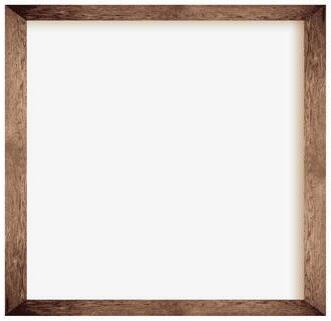

Let us see how we can measure the length of the boundary of an irregular shape.
Step 1
Place the thread along the edge of the shape, as shown in the picture.
Step 2
Mark the end point on the thread where it meets the starting point.
You may mark or cut the thread at this point.
Step 3

Use a ruler to measure the length of the piece of thread. The length of the thread is the perimeter of the shape.
We learnt to find the perimeter of irregular shapes. What if we need to find the perimeter of shapes with straight edges? We can do so by using squared paper.
Below are two polygons on squared paper. To find the perimeter, we count the number of squares around the polygons.
Both the figures have different shapes but the same perimeter of 20 units.
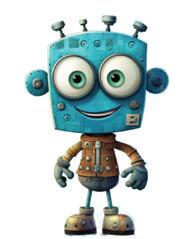
A polygon is a closed figure that is made up of only line segments.
Example 1: Find the perimeter of the following shapes.
To find the perimeter of polygons such as a triangle, square or rectangle, we can simply add the lengths of all the sides.
For example: The perimeter of figure A and figure B can be given as:
What if the perimeter of a figure is given and we need to find one of the missing sides? To do so, we add the lengths of the sides given and then subtract them from the perimeter. Let us understand this with examples.
Example 2: Find the missing length of the side if the perimeter of this shape is 23 cm.
Given, the perimeter = 23 cm
This means,
4 cm + 5 cm + 8 cm + the length of the missing side = 23 cm
17 cm + the length of the missing side = 23 cm
So, the length of the missing side = 23 cm − 17 cm = 6 cm

Example 3: Sunita took 2 rounds of the given rectangular park. How much distance did she cover in total?
Distance covered in one round = Perimeter of the park
= 150 m + 100 m + 150 m + 100 m = 500 m
Distance covered in two rounds = 2 × 500 m = 1000 m






















Use a piece of thread and a ruler to measure the perimeters of the given figures. Which figure has the longer perimeter?
Figure X
Find the perimeter of the following figures, where 1 unit = 1 cm.
Figure Y
Look at the figures. The length of the side of each shape is given. Find their perimeters.
The perimeter of each figure is given. Find the length of the missing sides in each figure. 4
= 32 cm
Find the perimeter of each of the following figures. 5
= 128 m
Seema's mother runs a tailoring shop. Seema helps her mother by sewing borders for different covers. They received an order to customise 3 pillows covers of length as shown in the figure. What length of sewing thread should Seema buy from the market?
= 46
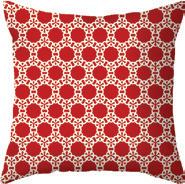
Dhanush joined 6 square tiles in two different patterns, as shown in the figures below. Find the perimeter of each pattern if the side of each tile is 25 cm. In what other way can the tiles be joined? Show by drawing the tiles.
Rita’s beautiful photo frame is ready! Now she needs to print a picture that fits perfectly in the frame.
The space within the boundaries of the frame on which the photo needs to fit is the area of the photo frame.

So, the area is the total space covered by a closed figure. We need to know the area in the following situations:
• Area of a wall that needs to be painted.
• Area of a floor to check if it can be covered with carpets or tiles of certain sizes.
• Area of land while dividing it into parts for different uses.
Area is measured in square units, that is, square centimetres (sq. cm) or square metres (sq. m).
We learnt to find the perimeter of a polygon using squared paper. We can also find the area of a polygon on a square grid.
Let us look at the figure below and find out its area, where the side of 1 unit = 1 cm.
The area of 1 square = 1 unit × 1 unit = 1 square unit.
We can find the area by counting the number of squares covered by the shape .
Honeybees use hexagons to build their hives so that their storage space (area) is maximised, and the perimeter is minimised.
Number of units covered by the shape = 9.
1 unit = 1 cm. So, the area of the shape = 9 square cm.
Like other shapes, irregular shapes are those that are not made entirely of complete squares. Some squares are partly covered. For example, look at the shapes A and B given below.
Half squares 1 cm 1 cm
More than half squares Less than half squares
Shape A Shape B
In shape A, there are half squares and complete squares, whereas in shape B, there are half squares, less than half squares and more than half squares. In such cases, we can only find the approximate area using the rules:
1 Complete squares are counted as 1.
2 All half squares are counted as 1 2 .
3 All more than half squares are counted as 1.
4 All less than half squares are ignored.
The total count of all kinds of squares gives the approximate area of irregular shapes. Now, let us find the areas (approx.) of shapes A and B using these rules.
Shape A
Shape B
Can you trace some other shape on the grid, and find its area?

Example 4: Find the area of the shapes, where the side of each square = 1 cm.






















The figures below have some fully and some partly covered squares. Find the area of these figures, where the side of each square = 1 unit.
To teach the importance of a balanced diet, Schools A and B planted a vegetable patch in their schools. They also constructed a playing field for various outdoor sports, as playing is a natural way to reduce stress and anxiety. Look at the area of the fields and answer the questions. Here, the side of each square = 1 unit.
a Find the area of the playing field in School A.
b Find the area of the vegetable patch in School B.
c Which school has the bigger playing field?
bought a chocolate and ate part of it, as shown. Each square of the bar = 1 unit.
a Find the area of the chocolate bar he ate.
b Find the area of the complete chocolate bar he had before eating. Create two figures on a square grid having the same area but different perimeters.

Setting: In groups of 2
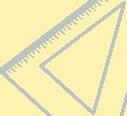
Materials Required: Square-grid paper, pencils, erasers, colours, a roll of thread, a pair of scissors
Method: Both partners will follow these steps:

Take a sheet of square-grid paper.
Trace your right or left hand on the grid paper.
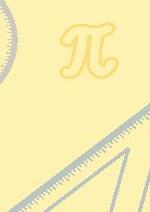
Find the perimeter of your hands using thread and a ruler.
Then, find the area by counting squares.
Now, discuss the following with your partner:
• Do both hands have the same area?

• Do both hands have the same perimeter?

Find the perimeter of each shape in units. Which shape has a smaller boundary?

Fill in the blanks.
The perimeter of figure A is cm.
The perimeter of figure B is cm.
The perimeter of figure C is cm.
Figure _____ and figure have the same perimeter.
Find the perimeter of each of the given figures.
Find the length of the missing side.
Each of the figures have 1 unit squares. Find the area and perimeter of each figure and answer the questions.
a Figure and figure have the same area but different perimeters.
b Figure and figure have the same perimeter but different areas.
c Figure and figure have the same area and perimeter.

Draw two different shapes, each with an area of 8 sq. units.
Add squares to the shape given on the right to make it into a square. What is the area of the square?
Manya drew an owl on square grid paper for her art and craft activity. What is its area if the side of each square is 1 unit?
Kanti wants to fence the boundary of his field of length 120 m and breadth 150 m He already has a fence that can cover a boundary of 150 m. How much more fencing does he need to buy?
Regular walking keeps the heart healthy and strong. Every morning, Suhani takes two rounds of a rectangular park of length 200 m and breadth 170 m, while Rishabh takes 3 rounds of a square park of length 150m. Who covers more distance and how much?
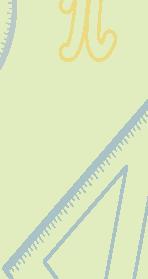
How many rectangles can you draw with a perimeter of 20 units? Draw and write the side lengths.
Divide the 5 × 5 cell into equal areas using different coloured pencils such that each area has one dot inside it.

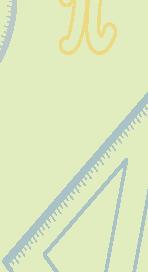

Mr Sharma has purchased a new flat. The architect gave the layout of the flat on a square grid, so that the interiors can also be finalised. Look at the layout and answer the questions, considering the length of 1 square = 1 metre.
1 Mr Sharma wants to carpet his living room. How many square metres of carpet does he need to order?

a 24 square metres b 44 square metres
c 28 square metres d 40 square metres
2 Mr Sharma plans to install an electrical wire around the roof of the kitchen for lighting. How many metres of electrical wire will he require?
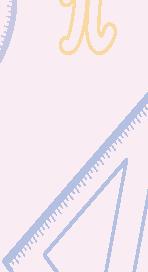
a 28 metres b 22 metres
c 30 metres d 24 metres
3 Mr Sharma wants his parentsʼ room to be the biggest in the house to ensure their comfort. Which bedroom should be given to his parents?

4 Which portions of the house have the same perimeter and area?
5 Create the layout of a flat having the same area as the above flat.

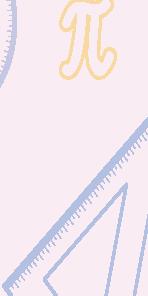
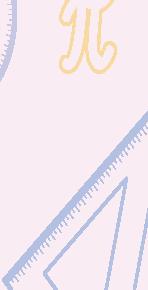



















































































Noor was very tired yesterday. When he went to bed, it was 8 o’ clock on his bedroom clock. When he woke up in the morning, the clock was still showing 8 o’ clock.
“Oh! Has my clock stopped? Why is it showing 8 o’ clock again like last night?” thought Noor.
Yesterday, the clock in Noor’s room was showing 8 o’ clock at night. Now, it is showing 8 o’ clock in the morning. Let us find out how the wall clock shows the same time twice each day. morning 08:00 08:00 night
A full day has 24 hours in total, while a clock shows only 12 hours. So, the hour hand on a clock completes two rounds. As a result, each time is shown twice a day. In the same way, a day can be divided into two equal halves to read the time.
The new day by the clock starts at 12 o’ clock at midnight
We already know how to read time on an analogue clock. There are analogue clocks and digital clocks. Let us read time to the minute on an analogue clock.
When the minute hand moves from one number to the next, 5 minutes have passed.
The time on the clock is 7:22.
Hours—Since the number just before the hour hand is 7, 7 hours have passed.
a.m. and p.m.
When the minute hand moves from one small marking to the next, 1 minute has passed.
Minutes—Skip count by 5 as 5, 10, 15, 20. Then count forward 21, 22. So, 22 minutes have passed.
a.m.—We use a.m. (Ante-Meridian) for the first 12 hours. It includes time starting from midnight 12 o’ clock to noon 12 o’ clock.
p.m.—We use p.m. (Post Meridian) for the next 12 hours of the day. It includes time starting from noon 12 o’ clock to midnight, 12 o’ clock.
The word “meridian” is from the Latin language. In Latin, ‘meridies’ means ‘midday’ or ‘noon’.

Example 1: Read the time on the given clocks.
Example 2: Write 6 o’ clock in the morning and evening as a.m and p.m.
6 o’ clock in the morning is 6 a.m.
6 o’ clock in the evening is 6 p.m.






















Write the time in a.m. and p.m. One is done for you
a Evening 5 o’ clock - 5:00 p.m. b At 10:00 in the morning -
c At 04:30 in the afternoon - d At 10:00 in the night -
Read and write the time on the given clocks.
Akhil goes for his football practice at 11:30 in the morning. How will you write the time using a.m. or p.m.?
Write the time one hour before the time given.
a 12:30 p.m. - b 03:15 a.m. -
c 12:59 a.m. -
Draw the hands of the clock for the given times.
A Gurudwara is a place of worship for the Sikhs. Isha goes to volunteer at a Gurudwara at 10:30 a.m. and comes back 2 hours later. Write the time when Isha comes back as a.m. or p.m.
Divya is on a railway platform with her father. She knows that their train leaves at 5 p.m.
“Are we on time?” Divya wants to know. She looks at the clock and feels confused.
Divya: “Dad, what kind of clock is this? It is not like our wall clock or watch! It is showing 16:00.”
Dad: “This is a digital clock, Divya. It shows time in 24 hours.”
“But how do we read time on this clock? How do we know if the time is a.m. or p.m.?” Divya is curious.
Let us learn about this different format of reading time.
A digital clock is a 24-hour clock.

It shows time in the format of 00:00. The first two digits show the hours, and the next two digits show the minutes.
A 24-hour time clock uses numbers from 1 to 23 to show 24 hours of a day. 1 to 12 represent the first 12 hours of the day and 13 to 23 show hours after 12 noon or 12 p.m.
On a digital clock, we read time in ‘hours’ units. For example, the time on this clock will be read as 14:05 hours.

Time after 23:59 is read as 00:00 and not 24:00.
24:00 00:00

Time in the 24-hour format can be read as 13:00 hours or 1300 hours. Both ways are correct and mean the same.
Example 3: A digital clock shows the time as given. How do you read this in the 24-hour format?
Railway and airline timetables use 24-hour formats or digital clocks. But our regular analogue clocks use the 12-hour format. Therefore, it is important to learn how to convert time in the 12-hour format into the 24-hour format.

Changing time in a.m. to 24-hour clock:
Let us change 9:30 a.m. into 24-hour format.
Step 1
Keep the same hour value. For 9:30 a.m., the hour value is 9 or 09.
Step 2
Write the minutes as they are. For 9:30 a.m., the minute are 30.
So, 9:30 in 24-hour time will be written as 09:30. Step 3
Changing time in p.m. to the 24-hour clock:
Now, let us learn to change 10:30 p.m. into the 24-hour format.
Now, replace a.m. with hours. Thus, time in 24-hour format is 09:30 hours.

In a 24-hour format, 12 midnight is written as 00:00, and 12 noon is written as 12:00 hours.
Step 1
Add 12 to the hour value.
Here, hour value = 10. So, the value = 10 + 12 = 22.
Step 2
Write the minutes as they are.
Herethe minutes are 30. So, in the 24-hour format 10:30 = 22:30. Step 3
Replace p.m. with hours.
Thus, the time in the 24-hour format = 22:30 hours.
Example 4: Change 3:30 a.m. to 24-hour time.
Keep the same hour value : 3
Write the minutes as they are : 3:30
Replace a.m. with hours : 03:30 hours
Example 5: Change 6:45 p.m. to 24-hour time.
Add 12 to the hour value : 6 + 12 = 18
Write the minutes as they are : 18:45
Replace p.m. with hours : 18:45 hours
Example 6: Liftoff for a school’s drama “Mission to Mars” is scheduled for 9:15 p.m. Express this time in the 24-hour format so the spaceship’s clock can be set correctly.
Add 12 to the hour value: 9 + 12 = 21
Write the minutes as they are: 21:15
Replace p.m. with hours: 21:45 hours
Thus, the time in the 24-hour format is 21:45 hours.
Let us learn how to change the 24-hour clock time to 12-hour clock time.
Step 1
Look at the first two digits of the time.
• It is a.m., if the number is less than 12.
• It is p.m., if the number is more than 12.
Example 7: Change 11:30 hours into 12-hour time.
Step 2
For a.m. time, keep the hour value as the first two digits. For p.m. time, subtract 12 from the first two digits.
Step 3
Write down the minutes as they are.
The first two digits of the time are 11. Since it is less than 12, it is a.m. time.
For a.m. time, keep the same hour value as the first two digits, which is 11.
Write down the minutes as they are. So 11:30 hours by a 12-hour clock is 11:30 a.m.
Example 8: Change 13:00 hours into 12-hour time.
The first two digits of the time are 13. Since it is more than 12, it is p.m. time.
For p.m. time, subtract 12 from the first two digits: 13 – 12 = 1.
Write down the minutes as they are:
So 13:00 hours by a 12-hour clock is 1:00 p.m.
Example 9: Astronauts on the International Space Station (ISS) follow a 24-hour clock. If dinner is served at 19:00 hours, what time is that in the 12-hour format?
24-hour clock time = 19:00 hours
Time in hours = 19 – 12 = 7.
Time in minutes = Remains the same = 00
So, 19:00 hours by a 12-hour clock is 7:00 p.m.






















Change the time into 24-hour time.
Change the time into 12-hour time. a 22:40 hours b 18:25 hours c 23:24 hours d 13:03 hours
The International Space Station completes one orbit around the Earth every 90 minutes. If it starts its orbit at 4:30 a.m. in the 12-hour clock format, what time would it finish in the 24-hour clock format?

The Rajdhani Express is a high-speed train service in India. It departs from the New Delhi Railway Station at 16:55 hours and arrives next day at the Mumbai Central Station at 8:35 hours. Write its schedule in the 12-hour clock format.
The flight from New Delhi to Goa departs at 14:45 hours. The boarding pass will be given 2 hours before departure. At what time will the boarding passes be given by a 12-hour clock?
Siya’s school is from Monday to Friday. On these days, Siya gets on the school bus at 8 a.m. The bus drops her at the school gate at 8: 40 a.m.
“How much time did the bus take to reach school today?” Siya wonders.
The start time is 8:00 a.m. and the end time is 8:40 a.m. The time that the bus takes to reach the school is 40 minutes.
Siya attends a music class from 4:30 p.m. to 6:30 p.m. every Sunday. The duration of her class can be found by calculating the time between these two points.
4:30 p.m. Start time
5:30 p.m.
6:30 p.m. End time
Duration or time taken for music class = 2 hours
We can get duration in hours or minutes.
We can also change time from minutes to hours and from hours to minutes. Hours to Minutes 1 hour = 60 minutes
2 hours = 2 × 60 = 120 minutes
minute = 1 60 hour
minutes = 120 × 1 60 = 2 hours

1 hour = 60 minutes. Division is the opposite of multiplication. To change hours to minutes, we multiply the hour by 60. To change minutes to hours, we divide the minutes by 60.
Example 10: 1 Change 4 hours to minutes.
1 hour = 60 minutes
So, 4 hours = 4 × 60 minutes = 240 minutes.
Add or subtract hours and minutes separately.

2 hours + 2 minutes = 4 hours OR = 4 minutes 2 hours + 2 minutes = 2 hours and 2 minutes
2 Change 186 minutes to hours and minutes.
60 minutes = 1 hour
So, 186 minutes = 186 ÷ 60 = 3 hours 6 minutes.
Example 11: The teacher is telling the students about an upcoming test. The test will be 2 hours long. The first 20 minutes will be for reading the questions. How many minutes will be left for writing the answers?
Total time for the test = 2 hours
2 hours in minutes = 2 × 60 = 120 minutes
Time for reading the questions = 20 minutes
Time left for writing the answers = 120 – 20 = 100 minutes





















2
Do It Yourself 12C

Change minutes to hours and minutes.
a 340 minutes b 450 minutes
c 560 minutes d 675 minutes
Change hours to minutes. Then, compare and write the appropriate symbol ( >, = or < ) in the blanks.
a 7 hours 420 minutes b 3 hours
c 6 hours 360 minutes d 10 hours 360 minutes

Find the duration between the times.
a 12:00 noon to 12:30 midnight b 05:06 p.m. to 10:55 p.m.
c 14:25 hours to 20:45 hours d 10:15 hours to 23:30 hours
When India gained independence on August 15, 1947, the oath-taking ceremony of the first Prime Minister, Jawaharlal Nehru, began at 9:40 a.m. If the ceremony lasted for 2 hours 15 minutes, at what time did it finish?
A doctor starts his patient visits at 10:15 a.m. and returns to his cabin by 1 p.m. How much time did he spend on the patient visits?
Reading helps you learn new things and improves your imagination. Nihit starts reading a book at 16:30 hours. He reads for 45 minutes. What time does he stop reading? Do you read books at home?
Every student in the class is thrilled to hear the news of an upcoming one-day trip.
“We will be going on the 15th of this month. It is two weeks from now!” the teacher informs them.
“15th of this month? 2 weeks from today? How many days later, exactly?” Divya is confused.




Let us look at the calendar to understand the different units like days, weeks, months and years to see how they are related.
7 days make a week. In the calendar above, the week starts on a Sunday and ends on a Saturday.
Have a look at the calendar for the month of May. The first full week of this month starts from Sunday, May 1 and ends on Saturday, May 7. This makes a week.
The same days of the week repeat every 7 days. So, if April 5 is a Tuesday, then the next Tuesday will be 5 + 7 = 12 April.
In the same way, if 18 July is a Monday, then the previous Monday was on 18 − 7 = 11 July.
1 day has 24 hours. How many hours are there in a week? Can you tell the total minutes in a week too?

The same day repeat after every 7 days. For example, if today is Monday, it will be Monday again after 7 days.
We know that there are 12 months in a year. These months have 28, 29, 30 or 31 days.
You can count the number of days in a month using your fist! The top of the knuckles shows months with 31 days and the hollows between the knuckles show months with 30 days and 28 or 29 days of February. We start with the top knuckle of our little finger.
There are 365 days in a year.
4 × 30 days = 120 days 7 × 31 days = 217 days 1 × 28 days = 28 days

Adding all the days of the year: 120 + 217 + 28 = 365 days
If it is a leap year, February will have 29 days. Then, the year will have 366 days instead of 365 days.
Remember!

A leap year is a year that has one extra day added to it. It occurs every fourth year. Number of days in a leap year = 365 days + 1 day = 366 days.
Each year starts with January and ends with December. So, the year 2022 ends on 31 December 2022, and the new year begins on 1 January, 2023.
A calendar is the record of all the days and months of a year. We read them as dates. We can write the date in short form using the format Date Month Year. For example, 18 July 2023 can be written as 18.07.2023.
Example 12: Gokul’s birthday is two weeks after Independence Day which is on 15 August, and happens to fall on Friday this year. When is Gokul’s birthday?
Independence Day is on 15 August.
1 week = 7 days. So 2 weeks = 14 days
Gokul’s Birthday = 15 August + 14 days = 29 August
Since 15 August is a Friday, 29 August will also be a Friday. Thus, Gokul’s birthday is on Friday, 29 August.
Example 13: How many days are there between January 18 and February 12?
Total days in January = 31 days
Days remaining in January = 31 – 18 = 13 days
Days in February = 12 days






So, total days = 13 + 12 = 25 days.















Fill in the blanks.

There are days in a leap year.
b If 03.03.23 is a Friday, then the next Sunday will be on ___________
c is a month with 28 or 29 days.
d 2 years = months
Write these dates in short form — Date.Month.Year.
a 19 November 1996 b 15 August 1947
c 29 July 2023 d 28 February 2004
Find the number of days between the given dates.
a 30 June and 23 July b 5 September and 2 November c 12.05.2020 and 10 June 2020 d 07.06.2023 and 23.07.2023
Human Rights Day is celebrated every year on December 10 to honor the United Nations General Assemblyʼs adoption of the Universal Declaration of Human Rights. If 10 December is a Friday, on which day will the New Year begin?
Jay takes 2 weeks of leave from school to attend a wedding. The leave begins on 5 March. When will he return to school?
Riya’s birthday is on the third Monday after December 25. When is her birthday if December 25 is on a Monday?
Create a question on finding duration on your own.
Setting:
Method:

Materials Required: Chart paper, ruler, pencil, coloured pencils or crayons
• Form 12 groups. Each group is to prepare a creative calendar for one month of the year.
• Draw a table on the paper with 7 columns. Add days of the week at the top, starting with Monday.

• Discuss in your groups and mark birthdays of the students of your class and other important events on this calendar.
• Paste the calendars on the class notice board.




Fill in the blanks with the correct time in a.m. or p.m.
a This morning, Emily woke up at 7
b She took 45 minutes to get ready, then it was a.m.
c She had her lunch at 12:30 in the cafeteria with her friends.
Write the correct time using either a.m. or p.m.
a 2 hours after 4:30 in the morning -
b 3 hours after 8:45 in the evening -
c 1 hour after 10:00 at night -
d 4 hours after 1:20 in the afternoon -
Change the time into 24-hour clock time.
a 06:30 a.m. b 07:55 a.m.
c 01:03 p.m. d 09:15 p.m.
Change the time into 12-hour clock times.
a 14:20 hours
c 21:12 hours
Find the duration between the times.
b 15:45 hours
d 04:30 hours
a 08:00 a.m. to 02:45 p.m. b 07:00 p.m. to 11:30 p.m.
c 02:00 p.m. to 06:45 p.m. d 09:30 a.m. to 05:15 p.m.
Change the following time between hours and minutes.
a 3 hours and 30 minutes to minutes. b 550 minutes to hours and minutes.
c 1 hour and 15 minutes to minutes. d 90 minutes to hours and minutes.
Siya began to colour at 17:30 hours. If she finished colouring after 100 minutes, at what time did she finish?
Meditation helps in feeling calm and focused. Sravan meditates for 30 minutes every day. How many hours does he spend on meditation in 4 days?
The largest multiplex in India is the 16-screen multiplex Mayajaal in Chennai. A film starts at 15:30 hours and ends at 18:15 hours. If the interval is of 20 minutes, what is the duration of the film?
A bus departs from Cochin at 08:45 p.m. and reaches Bangalore at 04:45 a.m. What is the total duration of this journey in minutes?
Today is 10 January. Anil’s birthday is in 45 days. On which date will his birthday be?
Six children took part in a puzzle solving challenge. They all started at 12:30 p.m. and finished as shown on their clocks. Read the time and answer the following questions.
Getu: 1:10 p.m.
Shyam: 1:00 p.m.

Ritu: 1:20 p.m.
Ravi: 1:35 p.m.
a Who took 30 minutes to solve the puzzle?
b Who took more than 1 hour to solve the puzzle?
c How long did Getu take to solve the puzzle?
Jia: 12:45 p.m.
Ahmed: 1:30 p.m.

d Who took the least time in the competition?
Jacob lives on Earth, and his friend Luna lives on a planet called Zaria. On Earth, a month has 30 days. On Zaria, a month has 42 days. Suppose a school year in Zaria lasts 9 Zarian months. If a school year on Earth is 11 months long, which planet’s school year is longer?
How much longer?



Emperor penguins are incredible swimmers! A recent study tracked emperor penguin chicks as they waddled from the colony to the ocean for their first swim. The average penguin chick took 52 days and 12 hours to complete this journey.
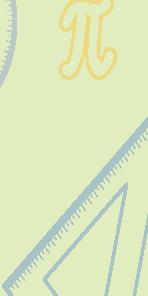
Scientists want to understand the penguin chicksʼ travel patterns better. They recorded the starting time for a group of chicks and want to predict when they might reach the ocean.

Group Start Time: November 10, 2024, at 2:30 p.m.
1 About how many weeks will it take the penguin chicks to reach the ocean?
a 9 weeks
c 10 weeks


b 7 weeks
d Impossible to determine
2 True or False: The penguin chicks will reach the ocean on December 1, 2024.
3 To find the estimated arrival date at the ocean, we need to add the number of travel days to the .
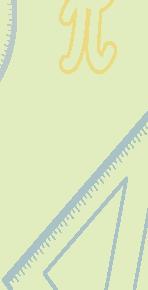
4 The penguins stopped to bask two weeks after the journey. They stopped some time around November





















































































Mother took Rohan to the nearby ATM to withdraw some money.
Rohan: Why have we come here, Mom?
Mother: We have come to withdraw some money from the ATM.
After the withdrawal, a slip came out of the machine.
Rohan: What is written on this slip?
Mother: The slip shows the money left in our bank account.
Rohan saw that the amount left in the bank account was ₹648.65.
Rohan was wondering how to read the amount. Let us learn how to read the amount.
₹648.65
The number on the left of the dot shows rupees.
The dot separates the rupees and paise.
The number on the right of the dot shows paise.
When reading the amount in words, we read the left part in rupees, and the right part in paise. So, ₹648.65 can be expressed in words as “six hundred forty-eight rupees and sixty-five paise”.
Example 1: How will you write these amounts in words?
₹255.84
₹157.06 2 1
₹255.84
Rupees Paise
₹255.84 = Two hundred fifty-five rupees and eighty-four paise.
₹157.06
Rupees Paise
₹157.06 = One hundred fifty-seven rupees and six paise.
Symbols below the date on the coin indicates where it was minted.
Mint Mint Mark Identification
Mumbai Diamond
Kolkata No Mark
Hyderabad Star
Noida Dot
in Hyderabad
Example 2: Write three hundred fifty-eight rupees and nine paise in figures.
Three hundred fifty-eight rupees = ₹358
Nine paise = 09
Three hundred fifty-eight rupees and nine paise = ₹358.09
Money can be converted from rupees to paise and vice versa. Let us convert ₹1229.54 into paise.
Step 1
Remove the dot and ₹ sign.
₹1229.54 = 122954
Step 2
Write paise with the number. Therefore, ₹1229.54 = 122954 paise.
We can also convert paise into rupees. Let us convert 151236 paise into rupees.
Step 1
Remove the word ‘paise’ and put a dot after counting 2 numbers from the right of the number.
Example 3: Convert ₹4236.25 to paise.
Step 1
Remove the dot and ₹ sign.
₹4236.25 = 423625.
Step 2
Put the sign of ₹ before the number.
Therefore, 151236 paise = ₹1512.36. 151236 1512.36 ₹1512.36
Step 2
Write paise with the number. Therefore, ₹4236.25 = 423625 paise.

Example 4: Convert 745623 paise to rupees.
Step 1
Remove the word ‘paise’ and put a dot after counting 2 numbers from the right of the given number. 745623 paise can be written as 7456.23.






Step 2
Put the sign of ₹ before the number. Therefore, 745623 paise = ₹7456.23.
















One rupee is represented by a rectangle and one paisa is represented by a circle. Represent ₹3.05 using rectangles and circles.
Express the amount in words. a
Write the amount in numerals.
a Five hundred forty-two rupees and eighty-three paise.
b Six hundred fifty-two rupees and thirty-nine paise.
c Eight hundred sixty-three rupees and seventy-seven paise.
d Nine hundred seventy-four rupees and three paise.
Convert the amount into paise. a ₹578.24
Convert the amount into rupees.
a 63512 paise
d 97456 paise
b 74624 paise
e 112564 paise
c 84761 paise
f 135489 paise
The Euro (€) is the official currency of 20 out of the 27 member states of the European Union. If 1 Euro = ₹90.78 (as of 12 July 2024) then how many paise are there in one Euro?
Sam and his family went to the restaurant for lunch. Everyone chose their favourite dish and placed the order. At the end of the lunch, Sam’s father asked the waiter for the bill. Sam’s father read the bill and made the payment.
A bill shows the details of how much we need to pay for items or services. The waiter in the above case gave Sam’s father the bill for the food that the family ate together.
Let us now learn how to read bills. Here is the bill that Sam’s father received.
Restaurant Name
Item: Shows the items bought. For example, idly, dosa, etc. were bought.
Rate: This shows the cost of each item. For example, the cost of 1 plate of idli is ₹30.
Bill No. A156 Anna’s Restaurant Bill Date: Jun 12, 2024 S. No.
1. Idli
2. Dosa
Noodles
S. No. —Serial Number. It tells about the number of items ordered. Here, 6 items were ordered.
Bill Number and Bill Date on which the items were bought.
Cost: This column shows the total cost of the quantity ordered. For example 2 plates of idly cost ₹60.00.
Total: It shows the total amount to be paid. So, ₹801 was to be paid.
We can find the cost of multiple items when the cost of 1 item is given. Similarly, we can find the cost of 1 item when the cost of multiple items is given. This is called the unit cost.
Cost of 1 apple = ₹5
Find the cost of multiple items.
Cost of 7 apples = ₹5 × 7 = ₹35
Cost of 12 pears = ₹84
Find the cost of 1 item or unit cost.
Cost of 1 pear = ₹84 ÷ 12 = ₹7

0 after the dot means 0 paise ₹256.00 = ₹256 only.
Example 5: Read the bill given above on page above and answer the questions.
1 What will be the cost of 4 water bottles?
Cost of 1 water bottles = ₹20
Cost of 4 water bottles = ₹20 × 4 = ₹80

2 If Sam’s family ordered 6 more glasses of mango juice, what would be the new bill?
Cost of 6 glasses of mango juice = 6 × ₹50 = ₹300
Total bill = ₹801 + ₹300 = ₹1101

We have learnt to read a bill. Let us now learn how to make a bill. Vivek went to the market to buy some fruit and vegetables. He purchased 2 kg of apples at ₹120.00 per kg, 1 kg of bananas at ₹40.00 per kg, 3 kg of potatoes at ₹25.00 per kg, 2 kg of tomatoes at ₹50.00 per kg, 1 kg of onions at ₹29.50 per kg and 1 2 kg of garlic at ₹200.00 per kg. Prepare a bill and find out how much he paid.
Step 1
Make a table as shown. Write the S. No., item names, quantity of each item and rate of each item.
Step 2
Find the amount of each item.
Amount = Quantity × Rate per item.
Therefore, Vivek paid ₹584.50 for all the fruit and vegetables. Bill No. 761/2
Example 6: It is Jane’s birthday! She calls an ice cream parlour and orders some ice creams for the guests:12 vanilla cones at ₹32.00 per cone, 8 chocolate cones at ₹38.00 per cone, 9 strawberry cones at ₹35.00 per cone, and 10 choco bars at ₹40.00 per bar. Prepare a bill for Jane. Bill No. 981/IZ Aby’s Ice-cream Parlour






















Suhaas purchased some items for the new-year celebration. Read the bill and answer the questions. 1
Bill No. 1242/A
Jen’s Party Shop
Bill Date: 01/11/2024
S. No. Item Quantity Rate (₹) Cost (₹)
1. Balloons 8 packets 40.00
2. Party blowers 10 ? 150.00
3. Cupcakes 25 30.00
4. Gift bags 15 100.00
5. Juice 20 bottles
a What is the cost of 1 party blower?
b What is the cost of 30 gift bags?
c What is the cost of 2 packets of balloons?
d How much did Suhaas spend on the celebration?
The pencil was invented by Nicholas Jacques Contre in 1795. Renuka orders different types of pencils. She orders 2 packs of HB pencils for ₹72.00 each, 3 packs of H pencils for ₹69.00 each, 2 packs of B pencils for ₹90.00 each and 1 pack of dustless chalk for ₹180.00 each. Prepare a bill for Renuka.
Ravi has ₹1000. He purchases 1 2 kg of chillies for ₹40.00 per kg, 1 kg of potatoes for ₹31.50 per kg, 2 kg of oranges for ₹50.00 per kg and 1 4 kg of cherries for ₹120.00 per kg. Prepare a bill for Ravi and find the amount he has left after the purchase. Do you help your parents in buying vegetables and fruits?
Sam has ₹750.00 with him. He goes to a toy shop and buys 1 teddy bear for ₹125, 2 building blocks for ₹175 per block, 3 toy cars for ₹45.00 per car and 1 jigsaw puzzle for ₹215.50. Prepare a bill for Sam. Will he be able to purchase all the items? If not, how much money does he require to purchase all the items?
Sam’s father notes down his daily expenses in a diary. An expense is money spent on different items. Shown below is the expense list made by Sam’s father for one day!

An expense list can be made on a weekly, monthly or yearly basis as well!
Expense lists can also be used to find the savings. Savings = Total earning – Total expenditure.

Example 7: Shown below is Shikha’s weekly expense list. Find the total amount she spent in a week.

The total amount spent by Shikha = ₹680.25 + ₹1250.00 + ₹742.00 + ₹175.50 = ₹2847.75.




















Read the expense list given below and write True or False.

S. No. Detail
1. Education 4000.00
2. House rent 1500.00
3.
4.
a The total expenditure is more than ₹10,000.
b The expenditure on education is more than the expenditure on food.
c The expenditure on transportation is less than the expenditure on clothing.
d The total expenditure is less than ₹12,000.
Create an expense list for the expenses given.
Groceries - `325.25, Milk - `50.50, Transportation - `48.00, Recharge - `125.00, Medicine - `223.15
Kapil earns ₹18,000 per month. Given below is his monthly expenditure. How much money did he save at the end of the month?
Allahabad Museum and Rani Durgavati Museum are famous art museums in India. Below are the biweekly expenses of the two museums. Draw the expense list for the museums. Whose expense is bigger?
Allahabad Museum’s Expense List Utilities—₹5500, Housekeeping—₹7000, Maintenance—₹4000, Wages—₹9000
Rani Durgavati Museum’s Expense List Utilities—₹7500, Housekeeping—₹6500, Maintenance—₹5000, Wages—₹9500
5 S. No.
Kunal prepared his monthly expense list as shown. He saved ₹2765 at the end of the month. How much money did he have at the start of the month?
Collect information on the monthly expenses at your home and create an expense list.
We can solve word problems on money by using 1 or more operations.
Sam and his family spent ₹680 on lunch. On the way back home, they purchased vegetables for ₹512 and groceries for ₹436. Sam’s father had ₹2000 with him. How much money did he have left?
As we need to find the money Sam's father has left, we first need to find out how much money he spent.
Amount spent on lunch = ₹680
Amount spent on vegetables = ₹512
Amount spent on groceries = ₹436
Total money spent = ₹680 + ₹512 + ₹436 = ₹1628
Amount Sam's father has left = Total amount – Amount spent = ₹2000 – ₹1628 = ₹372
Example 8: Each student of a class contributed ₹115 for flood victims. If there are 37 students in the class, what is the total amount of money collected?
Money contributed by each student = ₹115
Total number of students in the class = 37
Total amount of money collected = ₹115 × 37 = ₹4255
Example 9: Suhani bought 3 dresses for ₹999. Megha bought 2 dresses of the same type and gave ₹1000 to the shopkeeper. How much change will Megha get back from the shopkeeper?
Suhani bought 3 dresses for ₹999.
Cost of 3 dresses = ₹999
Cost of 1 dress = ₹999 ÷ 3 = ₹333
Megha bought 2 dresses of the same type.
Prasanta Chandra Mahalanobis, an Indian expert in data analysis, is called the father of statistics. He was awarded the Padma Vibushan in 1968.

Cost of 2 dresses = 2 × cost of 1 dress = 2 × ₹333 = ₹666
Megha gave ₹1000 to the shopkeeper, therefore change received = ₹1000 – ₹666 = ₹334.






















A man pays a rent of ₹99 a day. How much will he pay in the month of January?
Madhavi wanted to give birthday treat to her friend. She bought 12 vanilla pastries and 15 plum pastries. A vanilla pastry costs ₹25, and a plum pastry costs ₹35. How much did she pay?
Mysore Zoo is one of the oldest zoos. A ticket for an adult costs ₹60, and a ticket for a child costs ₹30. What would be the cost of tickets for 5 adults and 3 children?
Aryan paid ₹186 for two chocolate bars and 1 ice cream. If the cost of 1 ice cream is ₹60, find the cost of 1 chocolate bar.
Mahi gets ₹385 pocket money per week. How much pocket money does she get per day?
Aarav buys four toys that cost ₹225 each. How much change will he get back if he gives the shopkeeper ₹1000?
Rashmi’s school decided to take the students out for a trip. The school collected a total of ₹5000 from 25 students for the trip. If each student received ₹20 back after the trip, how much money was spent on the trip?
a word problem based on the addition of costs.

Setting: Groups of 4
Materials Required:
Experiential Learning & Collaboration
Pen and paper, Price tags for various items and their costs in rupees and paise, Play money
Method:

Set up a market with various items with their price tags in class. Each group gets a fixed amount of money for the purchase.

The groups need to purchase the items with the amount they have in hand. Each group prepares an expense list for their purchase.
The group that purchases the greatest number of items with the given amount wins!


Fill in the blanks. In Figures In Words
₹235.45
₹ Three hundred fifty-six rupees and seventy-two paise
₹ Five hundred eighty-two rupees and thirty paise
₹648.47
₹978.65 1
₹ Seven hundred ninety rupees and fifty-two paise
2
3
4
Convert the given amount to paise. a ₹236.45 b ₹345.78 c ₹598.14 d ₹894.69 e ₹1054.54 f ₹1568.17 g ₹1864.58 h ₹2045.65
Fill in the blanks.
a 3651 paise = ₹ b 4865 paise = ₹ c 5631 paise = ₹ d 7856 paise = ₹ e 12567 paise = ₹ f 36574 paise = ₹
Sunita purchased the following items from the stationery shop. Read the bill and answer the questions.
Rima’s Stationery
a What is the cost of 1 packet of pencils?
c What is the cost of 2 notebooks?
b What is the cost of 10 erasers?
d What is the total bill amount?
e If Sunita had ₹800 with her, what amount does she have left?

Rohan wanted to learn how to ride a bicycle. His father rents bicycle for ₹55 a day. How much money will he pay for 2 weeks?
India is the largest manufacturer of cotton clothes. Mahi purchased a famous Bengali Tant saree for ₹895 and a Khadi for ₹1263. She still has an amount of ₹1526 left. How much money did she have initially?
Kunal had ₹5000 with him. He gave ₹1550 to Suhani and divided the rest of the amount equally among his 3 cousins. How much did each cousin get?
Naina is trying to save money for a dress. She saves ₹75 per week. If the dress costs ₹900, how many weeks will it take to save enough to buy the dress? Do you also save your pocket money to buy your favourite things?
A family has monthly earnings of ₹22,000. Given below is their monthly expense list. Read the list and answer the questions.
a How much does the family spend on medicine?
b How much does the family spend on groceries and milk?
c What is the total expenditure of the family?
d What is their monthly saving?
Shown below are the expense lists of Rohan and Mohit. If Rohan earns ₹22,000 whereas Mohit earns ₹23,000 a month, who saves more at the end of the year and by how much?
Rohit went to the market to purchase groceries. After his purchase he received the following bill. Is the bill correct? If not, make the correct bill.
Priya earns ₹15,000 per month and saves ₹18,000 per year. What is her monthly expenditure?
The ink of a printer in a shop adds black spots to a few places in a bill. Look at the bill given below.
a Find the numbers in the blackened spots.
b Change the quantity and draw the bill to bring the total bill amount to ₹2235.50.
Create a word problem on subtracting two amounts.
Raju bought some junk from the junk collector. He paid ₹943 and six 50 paise coins.
Statement 1: Raju paid ₹946 in total to the junk collector.

Statement 2: Raju paid for the junk using 6 notes of ₹100, 6 notes of ₹50, 1 note of ₹20, 4 coins of ₹5 and three ₹1 coins.
a Only Statement 1 is true
b Only Statement 2 is true.
c Both statements 1 and 2 are true.
d Both statements 1 and 2 are false.




Five friends went on a trip and paid ₹98 each. Rahul joined them on the trip and paid some money. The total money paid by the 5 friends and Rahul was ₹600. How much money did Rahul pay?


The science teacher conducts an experiment to demonstrate a closed circuit to the students. She uses a small wooden board that costs ₹385.00, a switch costing ₹40.00, 3 small cut wires each costing ₹15.00, a battery that costs ₹196.50, a bulb costing 14200 paise.
1 The cost of the bulb in rupees is

2 The cost of 2 batteries is
a ₹293.00
c ₹393.50
3 Make a bill for the given items.


b ₹199.00
d ₹393.00
4 There are 30 students in a class. The class is divided in groups of 5. How much money is required to buy all the items for the experiment if each group gets one set of equipment?
5 How do you save electricity at home?




























































































Rahul has a habit of saving money by collecting coins in his money bank.
Today he opened his money bank to count the coins he had saved.
He started piling the coins, one upon the other, in the following order:
₹1, ₹2, ₹5, ₹10, ₹1, ₹10, ₹2, ₹5, ₹1, ₹10, ₹1, ₹1, ₹1, ₹2, ₹10, ₹5, ₹5, ₹2, ₹1, ₹1, ₹2, ₹10, ₹1, ₹1, ₹2, ₹5, ₹2.
If we have to count each type of coin from this list, it will be hard. Is there an easier way? Let us learn that.
We can organise the types of coins that Rahul had in a tally marks table. Let's do it step by step.
Step 1
Write each unique type of coin in a table.
Step 2
Each time you take a coin put a mark next to its type, as shown in the table.
The table below shows the first four entries: ₹1, ₹2, ₹5, ₹10.
Coins Tally Marks
₹1 | ₹2 | ₹5 | ₹10 |
These marks are called tally marks
Step 3
Put in the tally marks one by one for each coin.
Coins Tally Marks
₹1 |||| |||| ₹2 |||| ||
₹5 |||| ₹10 ||||
Note that when the number of tally marks exceeds 4, we use |||| and not |||||. So, bunches of |||| form 5s. This makes it easier to count and find totals in tables.

Step 4
Finally, put the totals in a new column.
Similarly, any kinds of data can also be organised with the help of pictures, graphs, tables, etc. This way of organising data is called data handling.
Data handling is the process by which data is arranged in a systematic way.
Example 1: Rahul visited a zoo on Sunday with his parents. He used tally marks to count and record the number of different types of animals he saw there. Look at the table and answer the following questions.
1 Which animal did he see the greatest number of in the zoo?
Rahul saw the greatest number of elephants.
2 How many tigers and deer were there in the zoo?
In the zoo, there were 3 tigers and 4 deer.
3 What is the difference in the number of leopards and zebras that he saw?
Number of leopards = 12
Number of zebras = 6
The difference in the number of leopards and zebras = 12 – 6 = 6.






















Tick () the tally marks count which shows the number 25. 1
A health drink has vitamins, minerals, and other good ingredients that help you stay energised. The tally chart shows the data collected on the types of health drinks people take. Which is the most popular health drink?
a Lemon water b Green tea
Lemon water |||| |||| Coconut water |||| a b
2 Cross Curricular Health Drink Number of People
Green tea |||| |||| |||| Beetroot juice |||| ||
c Coconut water d Beetroot juice
The image shown below shows different kitchen appliances. Count the number of each kind of appliance and draw the tally chart.
Nitin has some vegetables at home. Create a tally chart and answer the following questions.
a How many carrots are there?
c How many potatoes are there?
b How many pumpkins and capsicums are there?
d What is the total number of vegetables at home?
The data table shows the number of households that segregate different types of waste. Read the data and answer the following questions.
a Create tally marks to represent the number of households segregating each type of waste.
b How many more households segregate wet waste compared to e-waste?
c If 3 more households start segregating sanitary waste, how many will there be in total?
d Which type of waste has the least number of households segregating it?
e Do you or your family do waste segregation at home? If so, how do you do it? If not, why not?
It was Rahul's birthday. He wanted to treat his 10 friends to a pizza party. He told them about the three types pizza toppings that they could choose for their pizza: cheese, vegetable, and paneer. He then conducted a survey to see how many of his friends liked each topping. After that, he wanted to represent this data as pictures. How do you think he would do that? Let us find out.

Rahul created a pictograph based on the above data. Study the pictograph below.
Toppings Number of Friends
Cheese
Paneer
Vegetable
= 1 friend
Error Alert!
The symbols that are drawn in a pictograph should be of the same size.

Rahul thought of conducting the same kind of survey in his class that has 32 students. The type of pizza liked by each student was recorded as follows.
Cheese, Paneer, Chicken, Mushroom, Vegetable, Paneer, Vegetable, Cheese, Paneer, Chicken, Vegetable, Mushroom, Chicken, Paneer, Cheese, Chicken, Vegetable, Paneer, Cheese, Chicken, Paneer, Vegetable, Cheese, Mushroom, Vegetable, Paneer, Chicken, Chicken, Paneer, Cheese, Mushroom, Chicken.
Let us draw a pictograph for the data.
The key for this pictograph could be:
= 2 students
We use a key to denote the value of the symbol.
The key helps us to represent large values of data easily on a pictograph.
Toppings Number of Students Who Like Pizza
Cheese
Paneer
Vegetable
Mushroom
Chicken
= 2 students
Pictographs are often used as road signs as people who speak different languages understand them better.
Example 2: The number of students in a class using different soap brands is shown in this table. Represent the data in the form of a pictograph.
Key = 1 student
Number of students using different soap brands:
Do you remember that Rahul had to order pizzas on his birthday for 10 friends? He wanted to identify the different types of pizzas and how many pizzas of which type he had to order.
How do you think he would have done that?
= 1 friend
Number of cheese pizzas = 3
Number of paneer pizzas = 3
Number of vegetable pizzas = 4

Example 3: The following picture shows how many cars are washed at the washing centre of a service station in four days of a week. Study the pictograph and answer the given questions.
Day
Monday Tuesday
Number of Cars Washed
Key: = 5 cars
1 On which day are the most cars washed? How many?
The most cars are washed on Tuesday. Number of cars washed on Tuesday = 8 × 5 = 40.
2 On which day are the least number of cars washed? How many?
The least number of cars are washed on Monday. Number of cars washed on Monday = 4 × 5 = 20.






















Write if each statement is True or False.
c Pictographs cannot be used to compare two quantities. 1
a A pictograph is a way to represent data using images and symbols.
b A pictograph makes the data representation visually interesting and easy to understand.
2 Grades Number of Students
Look at the pictograph and answer the questions.
How many students scored a higher grade than the number of students who scored a C grade?
a 13
b 4
c 26
d 14
Key: = 2 students
3
Here is a pictograph showing the rainfall levels in different cities (named A, B, C, D, E and F) in a year. Look at the pictograph and answer the following questions.
a How much rainfall was recorded in city A and city D?
b Compare the rainfall levels of city B and city E.
Key: = 25 cm rainfall
The total numbers of tigers in the sanctuaries in four states in India are as follows:
Bihar: 30 Andhra Pradesh: 70
Prepare a pictograph for the animals using the symbol which represents 10 animals. 4
Chhattisgarh: 50 Rajasthan: 60
The pictographs show the number of apples and oranges consumed by students of three government schools in a city. Read the pictographs and answer the questions.
Key: = 35 students
a In which school is the total number of students that consumed oranges more than those who consumed apples?
b What is the difference in the number of students who consumed apples at schools 1 and 3?
c How many children consumed each kind of fruit at school 2?
Write a new question for the pictographs given in Q5.
Rahul went to watch a cricket match. He noticed that different runs are made in different overs. He wants to compare the runs scored in each over. He wondered if there was any way by which he could compare the runs quickly and effectively.
The chart below shows the runs made in the first 6 overs.

Rahul realised that data representation by pictograph is not only time-consuming but at times difficult as well.
He wanted to find an easier and better visual form of representation of the data. What could be an easier way to do this? Bar graphs!
We know that bar graphs are one of the simplest ways to represent data by using numbers and rectangular bars.
Steps to make the bar graph for the runs scored:
1 Draw horizontal and vertical axes.
2 On the horizontal axis, put the overs.
3 On the vertical axis, put the runs in intervals of 1.
4 Draw the rectangular bars.
The title explains what the graph is about (Example: runs per over).
The scale is the number that shows the units used (Example: 1 division = 1 run).
Labels show what kind of data is shown (Example: runs, overs).

Example 4: The table below shows information about the marks (out of 50) obtained by five students in a recent test.
To create a bar graph for this data, we need to:
• firstly, draw horizontal and vertical lines;
• then, on the horizontal axis, we put the names of the students and on the vertical axis, we put the marks obtained by the students;
• and finally, we take 1 unit length to represent 5 marks.
Remember, Rahul wanted to identify the most and least runs scored in an over!
From the graph,
Most runs in an over = the tallest bar = 9 runs
Over in which the most runs are scored = 6th over
Least runs in an over = the shortest bar = 4
Over in which the least runs are scored = 1st over
Example 5: The following bar graph shows the monthly expenditure of a family on vegetables (in ₹). Read the graph and answer the questions below.
Expenditure of a Family
1 Which month has the least expenditure?
From the graph, the height of the bar is the lowest in the month of September.
Thus, in September, the family’s expenditure is the least.
2 What is the expenditure in the month of March?
The expenditure in the month of March = ₹1800.























Fuel is a substance that is burned to produce energy. We use this energy to make things work, like cars, buses and airplanes. Read the bar graph and answer the questions.
a Which fuel is used in the greatest number of houses?
b How many houses are using coal as fuel?
The table represents the sale of refrigerators in the first six months of the year.
Draw a bar graph for the given information.
The number of people in various age groups in a village is given in the following table. Draw a bar graph to represent the information (1 unit = 1000).
A person records his family’s monthly expenditure (in ₹) on various things as shown below.
a bar graph to represent the given information.
Children of Grade 1 to Grade 5 participate in the school’s Annual Day Function. The bar graph shows the number of children from each grade who participated. Study the graph and answer the questions.
a From which grade did the lowest number of children participate?
b From which grade did only 60 children participate?
c How many fewer children participated from Grade 3 than Grade 1?
d How many more children participated from Grade 5 than Grade 2?
Create two questions based on the bar graph created in Q4.
The teacher assigns a recycling project to the class that promotes a clean environment.
As part of a recycling project, Aarti and her two friends collect plastic holders.
The three friends collect 40 holders altogether. Aarti wonders how many holders each of them collected.
The number of holders collected is shown using a pie chart or circle graph.
Aarti has collected 1 4 of the total holders while Mohan has collected 1 2 of the total holders.
Number of holders collected by Aarti = 1 4 of 40 = 40 ÷ 4 = 10
Number of holders collected by Rahul = 1 4 of 40 = 40 ÷ 4 = 10
Number of holders collected by Mohan = 1 2 of 40 = 40 ÷ 2 = 20
10 + 10 + 20 = 40 holders
A pie chart is a pictorial representation of data in the form of a circular chart or pie where the slices of the pie show the fraction of each data category out of the total.

Example 6: The teacher does a survey among students to find their favourite ice-cream flavours. She makes a pie chart with the gathered information. Study the pie chart and answer the questions.
1 Which ice cream is the most popular among the students? − Vanilla
2 What fraction of the students chose chocolate? − 1 4
3 Which flavour(s) is/are preferred by fewer students compared to chocolate? − Blueberry and strawberry
Example 7: Look at the pie chart, Jay and his classmates were asked about their favourite outdoor games. If 72 students were surveyed, how many students voted for running?
Fraction of students who voted for running = 1 3 .
Now, find 1 3 of 72.
1 3 of 72 = 72 3 = 24.
Thus, 24 students voted for running.






















1 Which list is arranged from the smallest to the biggest category of donors?
A charitable company kept track of the amount of funding (money) it received from three categories of donors over a year. The pie chart shows this data.
a Category B, Category C, Category A
b Category B, Category A, Category C
c Category A, Category C, Category B
d Category A, Category B, Category C
2
Look at the circle chart of the seasons liked by students of class 4 and write True or False for each statement.
a A greater number of children in class 4 like summer than autumn.
b The most preferred season is summer.
c Spring is liked by more students than autumn.
d Winter is liked by more students than spring.
The circle chart shows the games school children like to play. Observe the pie chart and select the correct options.
a The fraction of the children who like to play hockey is:
i One-half
iii One-fourth
ii One-third
iv Three-fourths
b The fraction of the children who do not like to play hockey is:
i One-half
iii One-fourth
ii One-third
iv Three-fourth
c If there are 60 children, write the number of children who:
i Like to play lawn tennis
ii Do not like to play lawn tennis
The pie chart shows the land area occupied by different continents of the world. Look at the pie chart and answer the questions that follow.
a Which continent is the second-largest in terms of area?
b What fraction of the total area is covered by Europe?
c What fraction of the total area is covered by Australia and South America?
d Which continent has an area less than that of South America but more than that of Europe?
Create a question based on the pie chart in Q4.
Math Lab Communication & Art Integration
Setting: In groups of 4

Materials Required: Paper, squared paper, pencil, pen, ruler, origami sheets
Method:
Count the number of people in the family of any five of your friends or classmates and record the data in a table.

Cut strips from the origami sheets of appropriate heights and paste them on the squared paper to represent the number of members in each friend’s family. 1 2 3 4
Now, take a sheet of squared paper and draw horizontal and vertical lines on it.
Mark all your friends' names on the horizontal axis and the number of family members on the vertical axis.




How many paintings did the painter sell in March?
a 20
b 40
c 10
d 25
The tally chart shows the distribution of elephants across zoos in different states in India.
a How many elephants are there in the zoo of Assam?
b Which two states have an equal number of elephants?
The given pictograph shows the number of pumpkins harvested by three friends.
a Who harvested 200 pumpkins?
b How many pumpkins did Hari harvest?
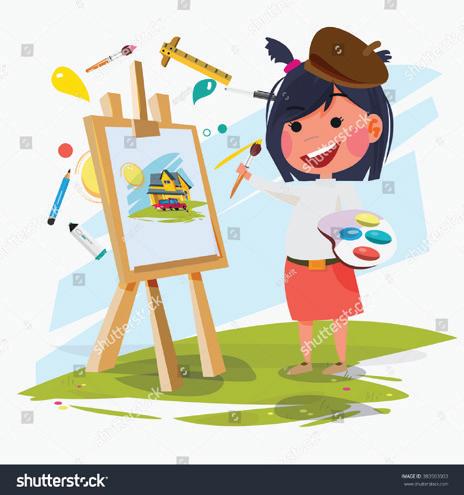






















































































































































































































































How many more students in Grade 4 prefer dancing than the students in Grade 3?






















In a school, a survey was conducted about the favourite activities of the students in Grades 3 and 4 as shown below.
The following tally chart shows the number of bicycles sold during a period of five weeks. Study the tally chart and answer the questions that follow.
a How many bicycles were sold in the first week?
b How many bicycles were sold in the first and fourth week?
c How many bicycles were sold in the 5 weeks altogether?
This bar graph is prepared by the teacher to find out how many children are interested in going to the Zoo, the National Museum, the Rail Museum, or Adventure Island. Look at the bar graph and answer the questions.
a How many children would like to go to the National Museum?
b How many children would like to go to Adventure Island?
c How many more children would like to go to the Zoo than the Rail Museum?
d How many students were surveyed in total?
Maya asked 40 friends to vote for their favourite board game. Complete the circle graph showing the fraction of students who voted for each game.
Board Game Chess Ludo Carrom Checkers No. of Votes 10
5 5
Create a question based on the pie chart in Q7.

500 students were asked how they travel to school every day. The collected data is shown in the circle graph.
Find the fractions of the students who do not travel to school by car.
Aditya has a bakery. He made the bar graph showing the number of cakes sold over four days last week.

On day 5, he sold twice as many cakes as he sold on day 1. On day 6, he sold half as many cakes as he sold on day 3. Find out how many cakes Aditya sold in total over these 6 days.





Value Development & Cross Curricular
Plastic pollution is a big problem for our environment. Every year, millions of plastic bottles end up in landfills and oceans, causing harm to wildlife and our planet. Read the bar graph showing the number of plastic bottles that were used at different events last year and answer the questions.

1 How many plastic bottles were used in total at the School Fair and Sports Day combined? a 6000 b 750 c 800 d 650
2 Which event used the most plastic bottles? a School Fair b Sports Day c Town Festival d Community Picnic
3 True or False: The Community Picnic used fewer plastic bottles than the Sports Day.

4 The event that used 350 plastic bottles was the .
5 The total number of plastic bottles used at all four events was
6 Why should we avoid using single-use plastics? Give one alternative to using plastic bags.




Name of the Student:
Time: 1 Hour
Total Marks: 50
1 Find the area and perimeter of the given shape. Side of each square = 1 unit. (6 marks)
2 Convert. (4 marks)
A ₹545.78 = ____________ paise
B 36542 paise = ₹ ____________
3 Fill in the passage. Write a.m. or p.m. (5 marks)
Sarah wakes up at 7:00 ______. She has breakfast at 8:00 ______. After school, she goes to the park at 4:30 ______ and plays with her friends. She has dinner at 6:30 ______ and goes to bed at 9:00 ______.
4 Era’s salary is ₹25,000. How much money does she save if she spends ₹8000 on rent and electricity, ₹2500 on food and ₹4,500 on miscellaneous expenses? (5 marks)
5 A survey was conducted to find the favourite activity of students in Grade 4. Read the pie chart showing the data and answer the questions. (4 marks)
A Which activity is the favourite among most students?
B Which activity is the favourite of a fewer number of students as compared to Art and Craft?
C How many students like music more than cycling?
D What is the total number of students surveyed?

6 Jiya bought 4 pastries, each costing ₹65, a box of chocolates for ₹565 and 2 juice bottles, each costing ₹25.50. Make a bill for Jiya. (6 marks)
7 Anu goes for her dance class and her art class at different times of the day. Find the duration for the two classes. (6 marks)
8 Find the perimeter of the given figure. (4 marks)
9 Ali bought three books by different authors. How much money did he spend on the books? (4 marks)
Enid
10 The table given below shows the data on the animals in Sara’s farmhouse. Draw and label a bar graph to show the data. (6 marks)
Do It Yourself 11A
1. Figure Y 2. a. 16 cm b. 18 cm
c. 24 cm d. 36 cm e. 34 cm f. 18 cm 3. a. 16 cm
b. 20 cm c. 50 m d. 23 cm e. 135 m f. 36 cm
4. a. 8 cm b. 32 m c. 5 cm
5. a. 30 cm b. 70 mm 6. 450 cm 7. a. 600 cm
b. 350 cm; Arrangement may vary.
Do It Yourself 11B
1. a. 33 sq. units b. 43 sq. units c. 40 sq. units
2. a. 48 sq. units b. 27.5 sq. units c. 26 sq. units
d. 30 sq. units e. 25 sq. units f. 6 sq. units
3. a. 21 sq. units b. 6 sq. units c. School A
4. a. 7 sq. units b. 20 sq. units
5. Answers may vary. Sample answer:
1. a. 16 units b. 18 units; Shape a has smaller boundary.
2. 10; 14; 14; B, C 3. a. 12 cm b. 34 m c. 24 m d. 30 cm e. 25 cm f. 39 m 4. a. 8 cm b. 3 cm
5. a. Figure Q and S b. Figure R and S c. Figure P and T
6. a. 56 sq. units b. 46 sq. units c. 22 sq. units d. 17 sq. units e. 10 sq. units f. 15.5 sq. units
7. 8. 9 sq. units
9. 27 sq. units 10. 390 m
11. Rishabh covers more distance by 320 m.
Challenge 1. 5 rectangles Rectangle 1: Length = 1, Width = 9; Rectangle 2: Length = 2, Width = 8; Rectangle 3: Length = 3, Width = 7; Rectangle 4: Length = 4, Width = 6; Rectangle 5: Length = 5, Width = 5
2.
Case Study
1. d 2. b 3. Bedroom 1
4. Garden, Bedroom 2 and Kitchen 5. Answer may vary.
Chapter 12
Do It Yourself 12A
1. a. 5:00 p.m. b. 10 a.m. c. 4:30 p.m. d. 10:00 p.m.
2. a. 8:20 b. 11:47 c. 1:28 d. 4:44 3. 11:30 a.m.
4. a. 11:30 a.m. b. 02:15 a.m. c. 11:59 p.m. d. 6:44 p.m.
5. a. b.
c. d.
6. 12:30 p.m.
Do It Yourself 12B
1. a. 15:28 hours b. 23:56 hours c. 00:00 hours
d. 23:59 hours 2. a. 10:40 p.m. b. 6:25 p.m. c. 11:24 p.m.
d. 1:03 p.m. 3. 06:00 hours 4. 4:55 p.m./8:35 a.m.
5. 12:45 p.m.
Do It Yourself 12C
1. a. 5 hours 40 minutes b. 7 hours 30 minutes
c. 9 hours 20 minutes d. 11 hours 15 minutes
2. a. = b. > c. = d. > 3. a. 12 hours 30 minutes
b. 5 hours 49 minutes c. 6 hours 20 minutes
d. 13 hours 15 minutes 4. 11:55 a.m. 5. 2 hours 45 minutes
6. 17:15 hours
7. Answers may vary. Sample answer: There are 2 shows that run in a theatre. The timings are 10:15 a.m. and 3:30 p.m. Write the timings in the 24-hour format.
Do It Yourself 12D
1. a. 366 b. 12.03.23 c. February d. 24
2. a. 19.11.96 b. 15.08.47 c. 29.07.23 d. 28.02.04
3. a. 23 days b. 58 days c. 29 days d. 46 days 4. Saturday
5. 19 March 6. 15 January
7. Answers may vary. Sample answer: Anaʼs mother left to go shopping at 4:15 p.m. and was back at 6:15 p.m. How much time was Anaʼs mother out of the house?
Chapter Checkup
1. a. 6:42 b. 7:29 c. 10:21 d. 5:14 2. a. a.m. b. 7:45
c. p.m. 3. a. 6:30 a.m. b. 11:45 p.m. c. 11:00 p.m.
d. 5:20 p.m. 4. a. 06:30 hours b. 07:55 hours
c. 13:03 hours d. 21:15 hours 5. a. 2:20 p.m. b. 3:45 p.m.
c. 9:12 p.m. d. 4:30 a.m. 6. a. 6 hours 45 minutes. b. 4 hours
30 minutes c. 4 hours 45 minutes. d. 7 hours 45 minutes.
7. a. 210 minutes b. 9 hours 10 minutes c. 75 minutes. d. 1 hour
30 minutes 8. 19:10 hours 9. 2 hours
10. 2 hours 25 minutes 11. 480 minutes 12. 24 February
Challenge 1. a. Shyam b. Ravi c. 40 mins d. Jia
2. Zaria; 48 days
Case Study
1. b. 7 weeks 2. False 3. start date 4. 24th

Chapter 13
Do It Yourself 13A
1. ₹3.05
2. a. One hundred fifty-four rupees and fifty-six paise
b. Two hundred seventeen rupees and eighty-five paise.
c. Three hundred ninety six rupees and forty-eight paise
d. Four hundred sixty-nine rupees and five paise.
e. Six hundred seventy-nine rupees and twenty-one paise.
f. Seven hundred forty-eight rupees and forty-nine paise.
3. a. ₹ 542.83 b. ₹652.39 c. ₹ 863.77 d. ₹974.03
4. a. 57,824 paise b. 64,712 paise c. 84,625 paise
d. 94,537 paise e. 1,01,548 paise f. 1,24,769 paise
5. a. ₹635.12 b. ₹746.24 c. ₹847.61 d. ₹974.56
e. ₹1125.64 f. ₹1354.89 6. 9078 paise
Do It Yourself 13B
1. a. ₹15 b. ₹3000 c. ₹80 d. ₹3320
2.
1.
It Yourself 13C
Durgavati
The total expenditure of Rani Durgavati Museum is bigger.
5. ₹12,995 6. Answers may vary
Do It Yourself 13D
1. ₹3069 2. ₹825 3. ₹390 4. ₹63 5. ₹55
6. ₹100 7. ₹4500
8. Answers may vary. Sample answer. The cost of a plastic chair is ₹459.00. The cost of small plastic table is ₹972.00. What is the total spent on chair a and table together?
Chapter Checkup
1. Two hundred thirty-five rupees and forty-five paise; 356.72; 582.30; Six hundred forty-eight rupees and forty-seven paise; 790.52; Nine hundred seventy-eight rupees and sixty-five paise. 2. a. 23,645 paise b. 34,578 paise c. 59,814 paise d. 89,469 paise e. 1,05,454 paise f. 1,56,817 paise g. 1,86,458 paise h. 2,04,565 paise 3. a. ₹36.51 b. ₹48.65 c. ₹56.31 d. ₹78.56 e. ₹125.67 f. ₹365.74 4. a. ₹40 b. ₹100 c. ₹100 d. ₹730 e. ₹70
5. ₹770 6. ₹3684 7. ₹1150
8. 12 weeks 9. a. ₹1500 b. ₹8500 c. ₹18,400 d. ₹3600
10. Rohan, ₹500
11. Food Store Bill No. 3581/D Bill Date: 28/11/2023
Total `1405.00
12. ₹13,500
13. a. 1; ₹283.00; ₹75.00; ₹3543.25
b. Answer may vary. Sample answer.
1.
2.
3.
4.
5.
6.
14. Answer may vary. Sample answer.
Rishi had spent ₹585 on a toy car and Ria had spent ₹751 on a barbie doll. How much more did Ria spend than Rishi?
Challenge 1. Option a 2. ₹110 Case Study
1. ₹142.00 2. Option d
3. S.No.
1.
2.
4.
5. Bulb ₹142.00 1 ₹142.00
4. ₹4851.00 will be required to buy experiment materials for all the groups.
5. Answers may vary.
14
Do It Yourself 14A 1. b 2. b
3.
4. a. 8 b. 19 c. 6 d. 33
5.
6. Answer may vary Sample answer. How many more tea pots are there than mixer grinders?
Do It Yourself 14B
1. a. True b. True c. False 2. Option c
4. Key: 1 = 10 Tigers States Number of Tigers
Andhra Pradesh
Chhattisgarh
Rajasthan
5. a. School 2 and school 3 b. 245 students c. 160 students
6. Answer may vary. Sample answer. How many students consumed oranges in school 3?
Do It Yourself 14C
1. a. LPG b. 10 houses 2.

5. a. Grade 3 b. Grade 4 c. 10 students d. 30 students
6. Answer may vary. Sample answer.
a. How much did the family spent on education?
b. What is the total expenditure of the family? Do It Yourself 14D
1. Option b 2. a. False b. False c. False d. True
3. a. Three-fourths b. One-fourth c. i. 15 children ii. 45 children
4. a. Africa b. 7 100 c. 17 100 d. Antarctica
5. Answer may vary. Sample answer. Which continent is the smallest in terms of area?
Chapter Checkup
1. Option a 2. a. 9 b. Andra Pradesh and Maharashtra
3. a. Madhav b. 275 pumpkins
4. 5 students 5. a. 22 bicycles b. 37 bicycles c. 107 bicycles 6. a. 10 children b. 15 children
c. 15 children d. 50 children
7. Favourite Board Game Chess Ludo Carrom Checkers 1 2 1 4 1 8 1 8
8. Answer may vary. Sample answer. How many friends vote for ludo?
Challenge 1. 3 4 2. 51 cakes Case Study
1. b. 750 2. c. Town Festival 3. True 4. Community Picnic 5. 1700 6. Answer may vary.




Matter and Its States
Get Set What is Matter?
Different States of Matter Soluble and Insoluble Substances
Change of States


Find out the following words from the given word search.
1. Matter
2. Mass 3. Solid 4. Liquid 5. Gas
Matter is all around us. Everything you can see, touch, or feel is made of matter, including the air we breathe, the water we drink and the food we eat. Thus, matter is anything that has mass and occupies some space. The mass of an object tells us about the amount of matter present in it. We can feel the mass of an object as its weight when we carry it.
For example, tables, chairs, your school bag, water bottle, and air flowing in your classroom are all examples of matter. They all occupy space and have mass.
Physical properties are the characteristics of matter that we can observe or measure without changing the substance itself. Some physical properties are mentioned below.
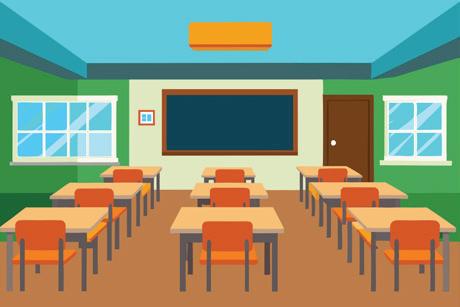
The tables and chairs have mass and take up space.
• Colour: It is a property of matter that can be seen. For example, the red colour of apples and the blue colour of the sky.
• Size: It tells us how big or small an object is. For example, a basketball is big while a tennis ball is small.
• Shape: It tells us about the form of an object. For example, a round ball or a rectangular sheet of paper.
• Texture: It tells us how an object appears on touching. For example, silk is smooth while sand paper is rough.
• Volume: It tells us about the space that an object takes up. For example, a full cup of water and a half cup of milk.
• State: It tells us the form in which matter is. For example, a table is solid, milk is liquid, and oxygen is gas.
Matter is made of tiny particles called molecules. On the basis of the arrangement of molecules, matter can be classified into three different states: solid, liquid and gas. Let us learn about these states, one by one.
Try to press the chair you are sitting on. Can you change its shape? No, you cannot. That means the chair has a fixed shape. This state of matter is called a solid.
Some properties of solids are:
• The molecules in solids are tightly packed. Due to this, they cannot move. Therefore, solids have a definite shape that cannot be changed unless we cut or break them.
All living and non-living things are made of matter. characteristics: qualities that help identify and describe something observe: look at carefully definite: fixed
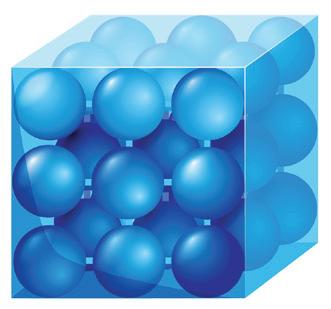
Molecules in Solids

• They have a fixed volume.
• They cannot flow.
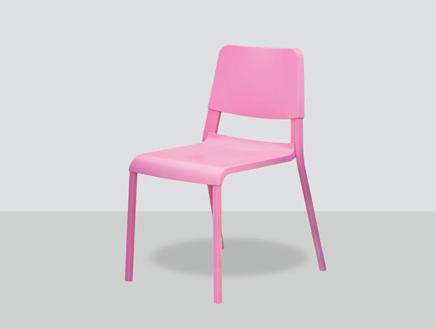
• Most solids are hard and cannot be pressed. Some, like clay and dough, can be pressed easily and moulded into different shapes. This is because their molecules are less tightly packed as compared to other solids.
• Some examples of solids are table, chair, door, book and jar.
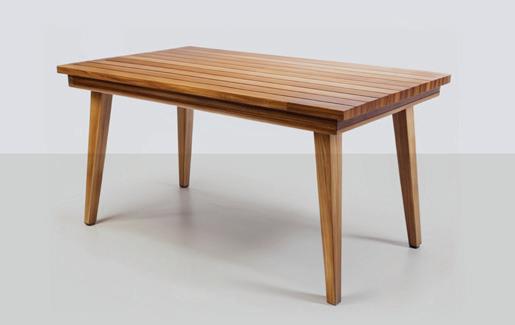
Try pouring some water from a bottle into a glass. What do you notice? The water will take the shape of the glass. Now, pour the same water into a bowl. It will take the shape of the bowl. This means that water does not have a fixed shape. Instead, it takes the shape of the container in which it is placed. But, the volume of water in the glass and in the bowl will remain the same. This state of matter, that does not have a fixed shape but has a fixed volume, is called a liquid.
Some properties of liquids are:
• The molecules in liquids are not as tightly packed as they are in solids. Due to this, the molecules can move. Therefore, liquids do not have a fixed shape.
• They have a fixed volume.
• They can flow and hence are also called fluids.
• Some examples of liquids are juice, milk, water and oil.

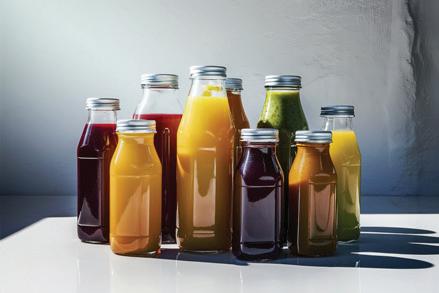
Let us take a balloon and fill it up with air. What happens? The air fills up as much space as it can inside the balloon. If you let the air out, it spreads out into the room. This shows that gases spread out to fill any space available to them. Thus, the state of matter that does not have a fixed shape or volume is called a gas.
Some of the properties of gases are:
• The molecules in gases are very loosely packed. Due to this, they can move freely. Therefore, gases do not have a fixed shape.
• They also do not have a fixed volume.
• They can flow, like liquids, and hence are also called fluids.
• Some examples of gases are air, gas filled in hot air balloons and footballs, and water vapour (steam) rising from boiling water.
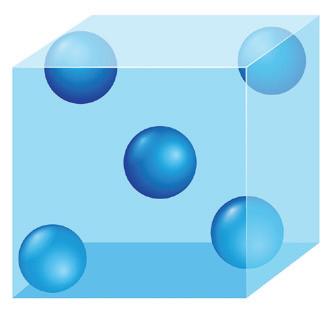

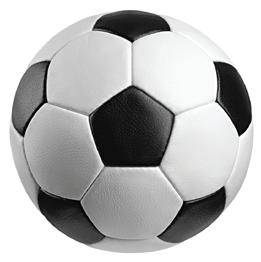

Pair with your partner. Move your body to represent the states of matter. For instance, act like a solid (still), a liquid (flowing) and a gas (moving quickly).
Observe different things in your surroundings. Classify them as solid, liquid and gas. Record your observation in the form of a table as shown below.
Write one word for the following.
1. This state of matter has a fixed shape and volume.
2. The particles in this state of matter are very loosely packed.
3. This state of matter takes up the shape of the container in which it is placed.
4. A term used for substances that can flow.
Certain things, when heated or cooled, can change their forms from one state to another. Let us learn about the different ways in which these changes of state can occur.

Mohit was making lemonade for himself. He took out the ice tray from the freezer and added some ice cubes to his lemonade. Then, he sat down to enjoy his lemonade. Meanwhile, he forgot to put the ice tray back in the freezer. After some time, he returned to the kitchen and observed that the ice cubes in the ice tray had turned into water. Do you know why that happened? It happened due to melting.
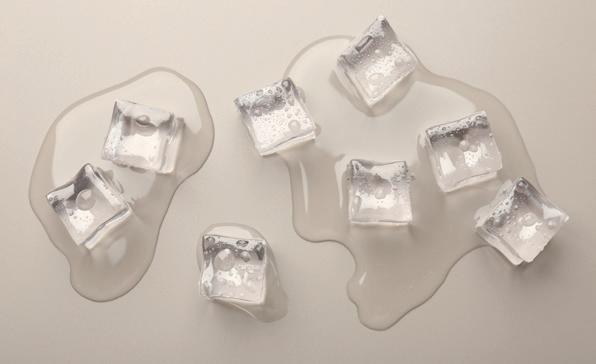
Melting of Ice
When a solid is heated, its temperature rises. The molecules inside absorb heat and begin to move more freely. This causes the solid to change into a liquid. This process is called melting. Here, ice turned into water by absorbing the heat from the surroundings.

What would happen if you fill an empty ice tray with water and keep it in the freezer for some time? The water will change to ice. This happens due to freezing. When liquid (like water) is cooled, its temperature drops. The molecules lose heat and come closer together. This process, of a liquid becoming a solid when cooled, is called freezing.
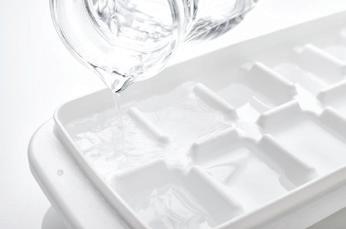
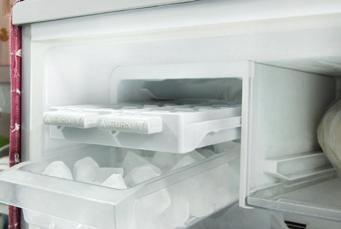
Rehaan was helping his mother hang wet clothes to dry in the sun. He asked her, “Why do clothes dry when we hang them in the sun, after washing?” She explained that due to the sun’s heat, the water from the wet clothes evaporate. That is why they dry. When a liquid is heated, its temperature rises, and the molecules move farther apart. This allows the liquid to change into gas. This process of liquid becoming gas when heated is called evaporation.
Roshni put some water to boil in a pot and covered it with a glass lid. After some time, she removed the lid and saw tiny water droplets on the inner surface of the lid. This happened because when water vapour from the boiling water touched the cold surface of the lid, it condensed to form water droplets. Thus, when a gas is cooled, its temperature decreases and its molecules come closer together, turning the gas back to liquid. This process of a gas becoming a liquid when cooled is called condensation.
When a solid converts directly into gas on heating, without turning into liquid first, it is called sublimation. For example, when naphthalene balls are left in the open, they become smaller and smaller. This is because the solid naphthalene balls are evaporating directly instead of melting.
Do you know why we use naphthalene balls?
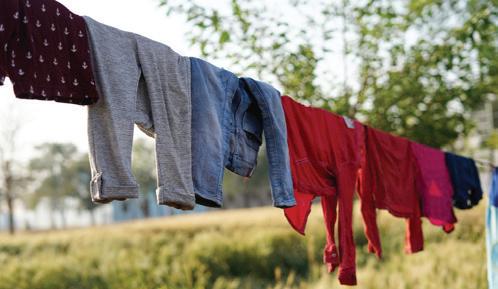
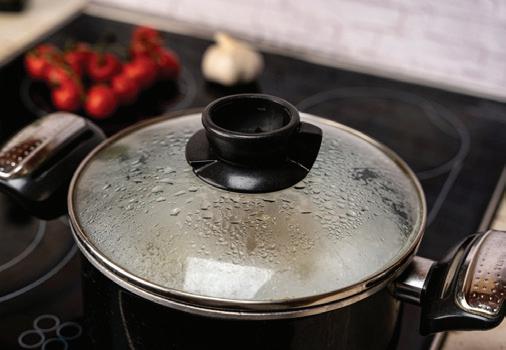
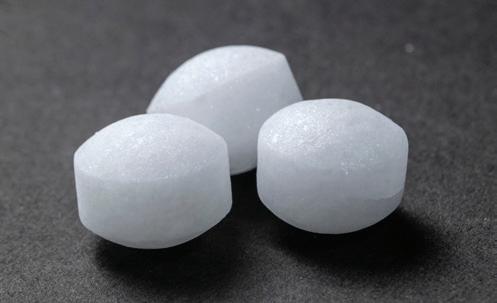
Deposition is the reverse of sublimation. In deposition, the gas directly converts directly into solid without turning into liquid first. For example, when it is very cold outside, frost (a thin layer of ice) begins to form on the glass windows or grass, especially during the night. This happens because water vapour in the air turns directly into ice, without turning into water first.
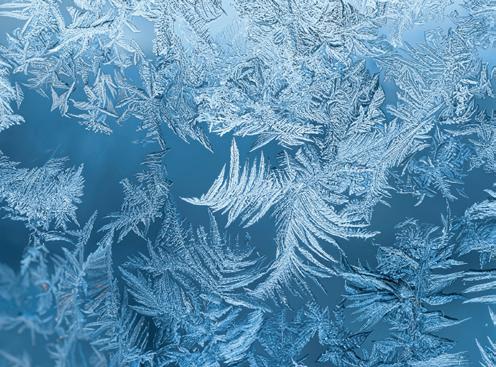
Not all materials change states at the same temperature. Different things change their state at different temperatures. For example, water boils at a higher temperature than some other liquids, like alcohol.
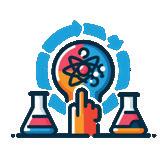
Interconversion of States of Matter
Aim: To demonstrate the process of melting and freezing.
Materials Needed: Two ice cubes, a candle, small bowls and an ice tray
Method:
Step 1: Place two ice cubes in a small bowl.
Step 2: Light a candle and carefully heat the bottom of the bowl with ice cubes. You can take the help of an adult for this step.
Step 3: Observe what happens to the ice.
Step 4: Now, remove the candle and pour the water in an ice tray. Place it in the freezer for some hours.
Step 5: Take out the ice tray and observe what has happened to the water.
Findings: Ice melts to form water upon heating. Water becomes ice on cooling.
Conclusion: The process of melting and freezing can be easily observed in a liquid like water. Water freezes to form ice and ice melts to form water.

Match the following.
1. Melting
2. Freezing
3. Evaporation
4. Condensation
5. Sublimation
6. Deposition
i. Solid to gas
ii. Gas to Liquid
iii. Liquid to gas
iv. Solid to liquid
v. Liquid to solid
vi. Gas to solid
What happens when you add a teaspoon of salt to a glass of water? Can you see the salt and water separately? Or do they both mix together completely? When we add salt to the glass of water, at first we can see them separately. Gradually, it dissolves completely and we cannot see the salt separately anymore.
But what happens when we add sand to water? Even after a lot of mixing, the sand and the water can be seen as different layers. Gradually, the sand settles at the bottom of the glass but still does not dissolve in it. This means that the sand does not dissolve in water.
Based on their ability to dissolve, substances can be classified as soluble or insoluble. Let us learn about them.
is soluble in water.
Soluble substances are things that can dissolve in a liquid, especially water. Salt and sugar are soluble substances.
Insoluble substances are things that do not dissolve in a liquid. No matter how much you stir, these substances will not mix with the liquid. Sand and chalk powder are insoluble substances.
When we dissolve a soluble substance in a liquid, we form a solution. The substance that is dissolved is called a solute. The substance in which the solute is dissolved is called a solvent. In a solution, the solute is evenly distributed in the solvent.
Water is a universal solvent as most substances dissolve in water.




When we mix a spoon of salt in a glass of water, we get a salt solution. Here, salt is the solute and water is the solvent. But have you ever wondered where the salt goes when mixed with water? We have already learnt that liquid molecules are loosely packed. They have spaces between them. So, the salt molecules fit into these spaces.
Chilika Lake in Odisha, India, is Asia’s largest brackish water lagoon. The lake’s high salt content and the unique climatic conditions allow for natural salt production through evaporation.
condensation: the change of state from gas to liquid on cooling deposition: the change of state from solid directly to gas on cooling evaporation: the change of state from liquid to gas on heating freezing: the change of state from liquid to solid on cooling liquid: the state of matter with no fixed shape but has a fixed volume and can flow matter: anything that has mass and occupies space melting: the change of state from a solid to liquid on heating solid: the state of matter with fixed shape and volume solute: the substance that dissolves in another substance solution: when two substances are mixed together and they get evenly distributed, it forms a solution brackish water: water that is a mix of fresh water and salt water sublimation: the change of state from gas directly to solid
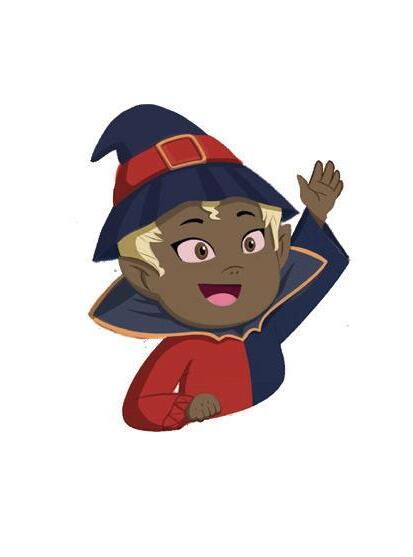
Explore More!
Scan the QR code to know more about the different states of matter.

• Matter is anything that takes up space and has mass.
• Matter exists in three states: solid, liquid and gas.
• The states of matter can be changed from one form into another.
• Solutions are formed by adding a solute to the solvent.
1. Tick ( ) the correct option.
A. What happens when naphthalene balls are left in the open?
They change to a liquid. They don’t change. They change to a gas. They become powdery.
B. What happens when a liquid is poured into a container? It keeps its shape. It takes the shape of the container. It turns into a solid. It turns into gas.
C. Which of the following is soluble in water?
D. Which of the following is insoluble in water?
2. Fill in the Blanks.
A. Molecules are very tightly packed in .
B. Liquids and gases are also called .
C. In , the particles are very loosely packed.
D. take the shape of the container in which they are placed.
3. Write True or False.
A. Solids have a definite shape and volume.
B. In deposition, a liquid changes into a solid.
C. Gases have no definite shape or volume.
D. Sublimation changes a solid directly into a gas.

4. Short-answer questions.
A. What are the three states of matter?
B. How is sublimation different from deposition?
C. What are soluble and insoluble substances?
D. Define condensation and evaporation.
5. Long-answer questions.
A. Explain the different states of matter with an example of each. Also, draw diagrams to show the arrangement of molecules in the different states of matter.
B. Define the following:
Solute
6. Picture-based questions.
Solution
A. Label the processes 1, 2, 3 and 4.
B. Give one example each of all the four processes.

1. Why do you think water changes into ice in the freezer, but not in the fridge?
2. If you had two different liquids as solvents, how would you test which one dissolves more solute?
Our lives are full of examples of changes in states of matter. For instance, evaporation (liquid to gas) takes place while drying clothes in the sunlight. Find out three other examples from your daily life where changes in states of matter take place. Share them with your friends and family.






Look at the picture. Write PUSH or PULL according to the force applied.
Force is a push or a pull applied on an object. We use force to do many things. Here are some effects of force:
• Force can move objects: When you kick a football, it moves.
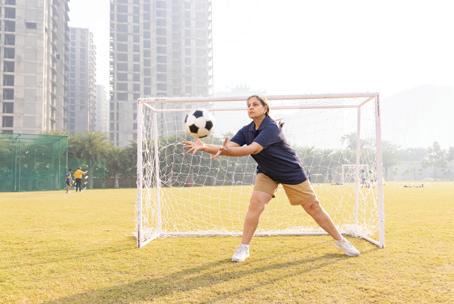
• Force can stop moving objects: A fielder uses force to catch and stop a moving ball.
• Force can change the direction of moving objects: A batsman changes the ball’s direction by hitting it with his bat.

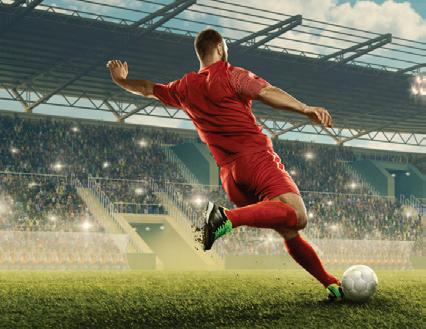
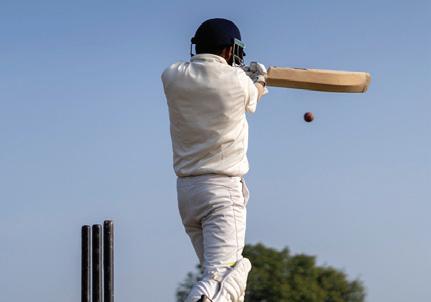
• Force can change the shape of objects: Pressing dough changes its shape. Similarly, when we squeeze a toothpaste tube, its shape changes.
Discuss with your classmates two effects of force that you experience in your daily life.
Forces are of many types, such as muscular force, gravitational force, magnetic force and frictional force. Let us now learn about them.
Muscular force is the force applied by the muscles of our body. Whenever we move our body parts, like our arms or legs, we use muscular force. For example, a rickshaw puller uses muscular force to pedal and move the rickshaw forward. We walk, run, jump, bend and lift using our muscular force. Animals like bulls and horses also use muscular force to pull carts.
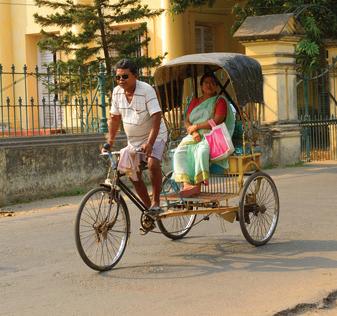
Rickshaw puller uses muscular force to pull the rickshaw.
Have you ever wondered why a ball thrown upwards comes back to us? It is because of gravity. Gravitational force, or gravity, is the force that pulls everything towards the

Earth. Every object on Earth experiences this force. It is for the same reason that fruits fall to the ground instead of floating away when falling from a tree. Gravitational force also attracts all objects in space towards each other.
Gravitational force does not act only on falling objects. It acts on everything present on Earth, including you and everything around you, keeping them grounded. Error Alert!
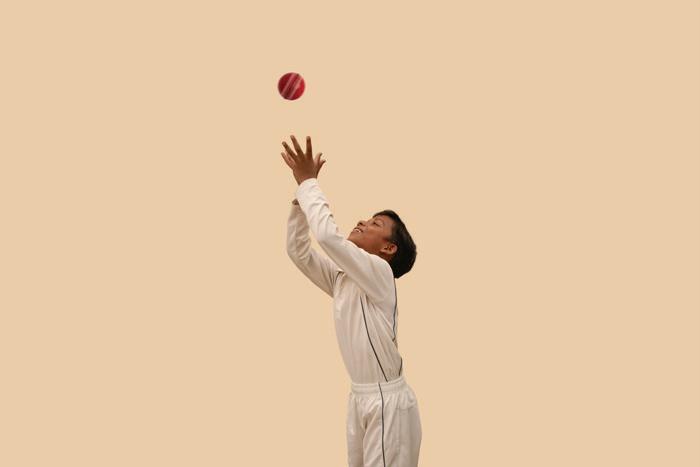
ball falls to the ground due to gravity.
What would happen if there was no gravity on Earth?
Magnetic force is the force exerted by a magnet on another magnet or on magnetic materials like iron. For example, when you bring a magnet close to iron nails, the nails stick to the magnet because of magnetic force.
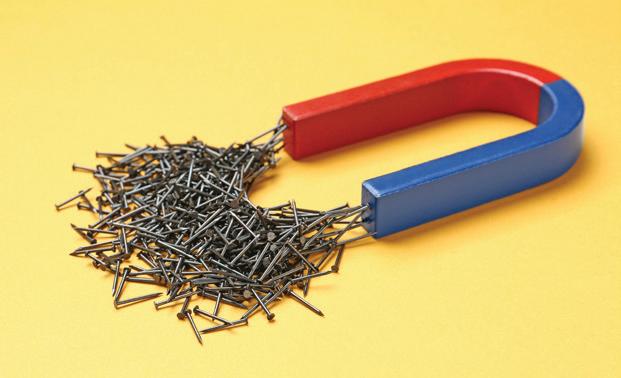
Friction is the force that opposes movement between two surfaces in contact. It slows down moving objects and finally stops them. For example, when you slide a toy car on the floor, it gradually slows down and then stops because of the friction between the car’s wheels and the floor.
Frictional force is important in our daily lives. It helps us to walk and run. We can hold things due to friction. If there were no friction, a moving object would never stop by itself.

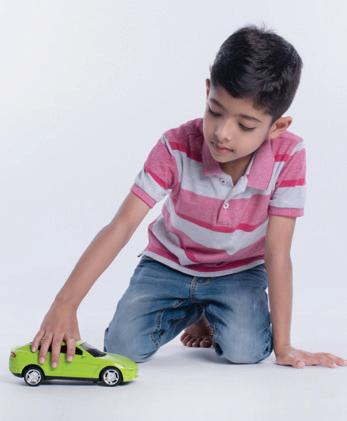
Choose any sport like football, cricket or basketball and note how force helps you play them. For example, kicking a ball moves it (muscular force), and gravity pulls the ball down when it is in the air (gravitational force).
Try this: kick a ball and watch how it moves, changes direction or stops when someone catches it. Then, discuss with your classmates how forces like friction, gravity and muscular force are at play during the game. You’ll discover that sports are a fun way to see forces in action.
opposes: to act against gradually: slowly over a period of time

Aim: To prove that rough surfaces cause more friction than smooth surfaces. Materials Needed: One ball, chalk / marker, a measuring tape or a ruler
Method:
Step 1: Mark a starting line on your classroom floor. Roll the ball on the floor by lightly pushing it forward. Use the measuring tape to note the distance it covers on the floor before it stops.
Step 2: Now, roll the ball again but this time on the grass in your school field, using equal amount of force. Compare the distance covered by the ball on the floor and on the grass.
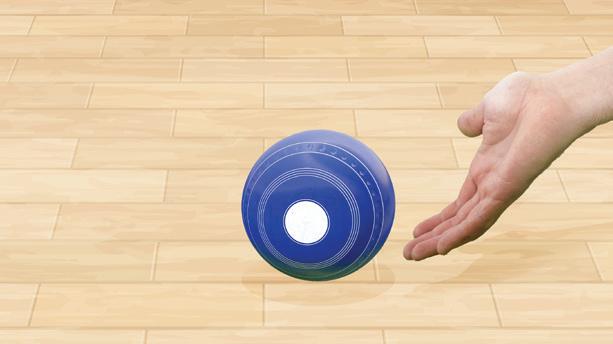
Findings: The ball rolls farther on the classroom floor than on the grassy field.
Conclusion: Smooth surfaces have less friction, making it easier for objects to move over them. Rough surfaces like grass cause more friction, making it harder for objects to move over them.
Name the forces.
1. The force applied by the muscles of our body.
2. The force that pulls everything down towards the Earth.
3. The force exerted by magnets.
4. The force that opposes movement of objects.
Energy is the ability to do work. There are different forms of energy. We also use fuels such as coal, petrol, diesel, natural gas, kerosene and wood to get energy.
Energy is exists in many forms. Let us learn more about them.

Solar energy comes from the Sun, which is the ultimate source of energy on Earth. It gives us heat and light. Plants use sunlight to make food, which we eat to get energy. We also use the Sun’s energy directly in solar cookers and solar heaters. Solar panels are used to generate electricity from solar energy.

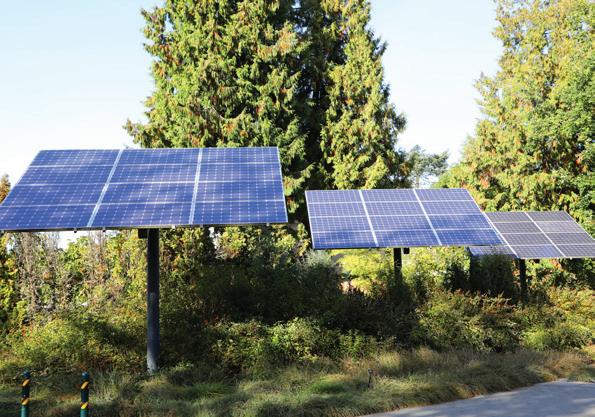
Many villages in India use electric stoves that run on electricity generated by solar energy, thereby reducing the need for firewood and promoting the use of clean energy.
Fast-moving winds can be used to generate energy in the form of electricity. They are used to spins the blades of a windmill, which then turns machines called turbines to produce electricity.
Hydro Energy
Fast-moving water in rivers contains a lot of energy. To use this energy, dams are built across rivers. These dams store water, which is then released from a height, directing it into turbines. The turbines spin due to the water's force, generating electricity. This type of energy, gained from the flow of water or from water falling from a height, is known as water energy or hydro energy.
Electric Energy
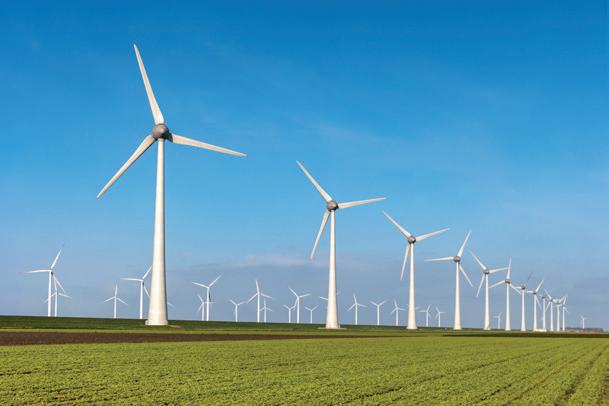
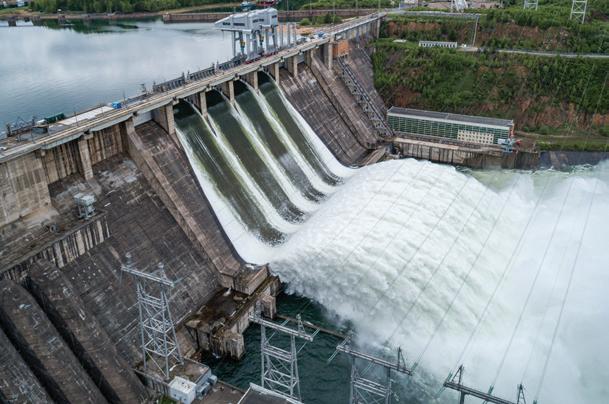
Electric energy is either produced in power plants by burning coal and natural gas, or through solar, wind and hydro energy. It is used to run electrical appliances and devices such as fans, lights, TVs and computers.
Heat Energy
We get heat energy by burning fuels. Coal, petroleum and wood are examples of fuels. This energy is then used to run vehicles, cook food, and to generate electricity.
Energy can neither be created nor destroyed. It can only be changed from one form to another. For example, in electric bulbs, electric energy is converted into light energy. In electric irons, electric energy is converted into heat energy.
turbines: a machine that has a wheel with blades




India is the third largest producer of solar energy, globally.
force: a push or a pull on an object energy: the ability to do work

Scan the QR code to know more about force.
• A force can move objects, stop objects, change their direction and shape.
• There are four main types of forces—muscular force, gravitational force, magnetic force and frictional force.
• The Sun is the ultimate source of energy on Earth.
• Solar energy, wind energy, hydro energy, electrical energy and heat energy are some common forms of energy.
1. Tick ( ) the correct option.
A. Which of these actions uses muscular force?
Riding a bicycle Apple falling down
Boiling water in a pan Dreaming in one’s sleep
B. What does gravitational force do?
Pushes objects away Keeps objects in the air
Pulls objects towards itself Throws objects to the sky
C. Which of these materials gets attracted to magnetic force?
Iron nail Plastic cup
Clay ball Rubber tyre

D. Which force makes a ball stop rolling on the ground by itself?
Magnetic force
Gravitational force
Frictional force
Muscular force
E. Which of these is the ultimate source of energy on Earth?
Sun Moon Mars Stars
2. Fill in the blanks.
A. slows moving objects.
B. is the ability to do work.
C. Flowing water’s energy is used to produce .
D. Solar energy comes from the .
E. energy is released by burning fuels.
3. Write True or False.
A. Force is a push or pull.
B. Gravity pushes everything away from the Earth.
C. Magnetic force can pull iron objects.
D. Hydro energy comes from flowing water.
4. Short-answer questions.
A. How does gravity affect objects on Earth?
B. What effect of force is observed when you press dough with your hands?
C. What is the effect of friction on moving objects?
D. Mention any one use of solar energy.
E. Write two uses of fuels in our daily life.
5. Long-answer questions.
A. Explain the effects of force with examples.
B. Define force. Name and explain any two types of forces.
C. Energy can be converted from one form to another. Justify this statement with the help of examples.
D. List the various forms of energy and write one use of each.

6. Picture-based questions.
A. Name the type of force applied by the man.
B. Name the type of force that opposes the movement of the box on the floor.
C. How is the direction of both forces related to each other?

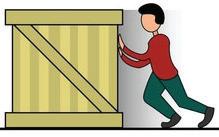
1. How do frictional forces benefit us and cause problems in our everyday activities? Give one example for each.
2. You are using a magnet to pick up metal paper clips from a table. What do you think will happen if you place a thick book between the magnet and the paper clips? Why?
Energy is very important for our daily lives. So, we need to be careful while using it so that it is not wasted. Saving energy helps the environment and can also lower the costs of electricity. Let us think of five easy ways to save energy at home. For example, you can turn off the lights when you leave a room, or use appliances that are energyefficient.
Write down these points on a chart paper and display them at school, in your neighbourhood or at home. Make your chart or poster attractive by decorating it. Encourage the people around you to follow these suggestions to save energy.
Small changes can make a big difference.



What is a Machine?
Making Machines Efficient Types of Machines


Look at the images given below. In the space provided, write the names of different things that are being used. Get Set
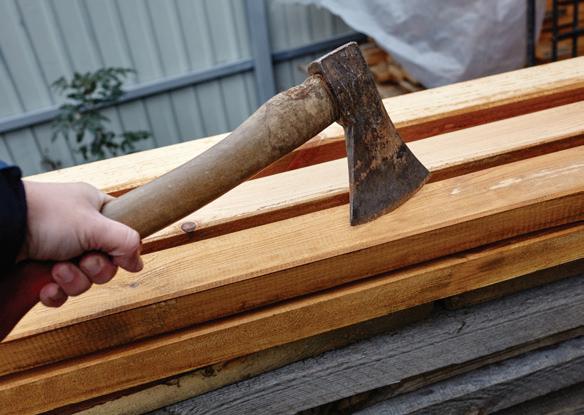

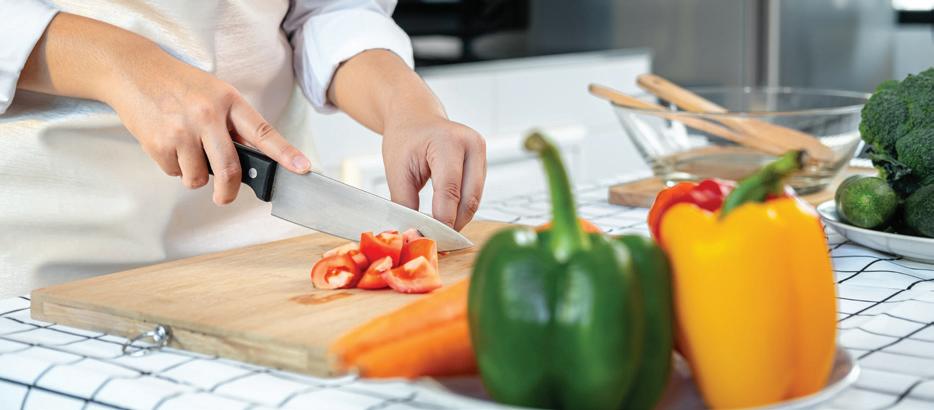
Do these things make our work easier?
Can you cut a piece of wood with your hands? Can you open the sealed lid of a glass bottle without a bottle opener? The answer to these questions is no. We need different machines to do these tasks. We need a saw to cut wood and a bottle opener to open a bottle.
A simple machine is a device that makes our work simple, easier and faster.
Have you ever observed an adult chop vegetables? They may use a knife or a chopper. These are machines. They chop the vegetables more easily by using force.
Simple machines can be used to change the direction of the force or make the force stronger. They also make our work easier in the following ways.
• Machines reduce the amount of force we need to apply to complete a task.
• Machines help us perform tasks more quickly.
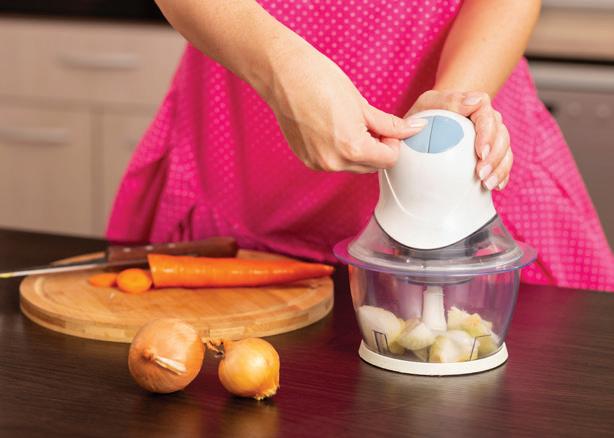
A force is a pull or push applied on an object.
• Machines allow us to complete tasks more efficiently, saving our time and energy.
There are six types of simple machines. Let us learn about them, one by one.
1. Inclined plane 2. Wedge 3. Wheel and axle
4. Screw 5. Pulley 6. Levers
Inclined Plane
An inclined plane is a surface whose one end is raised to some angle while the other end stays on the ground. It requires a lot of effort to lift something straight. But it is easier to push or roll it up an inclined plane. This makes tasks like loading or unloading heavy goods from trucks much easier. Some examples of inclined planes are ramps, slides and sloped roads.
Can you think of two places where an inclined plane helps?

This simple machine has a circular part called the wheel attached to a smaller rod called an axle. The axle is attached to the centre of the wheel. When the axle moves, the wheel turns around it. We can easily move heavy objects using this arrangement. Some examples of wheel and axle are the steering wheel of a car, bicycle pedals and roller skates.
A pulley is a simple machine made up of a grooved wheel with a rope around it. The heavy objects are attached at one end of the rope, while we pull the other end of the rope. It is used to lift or lower heavy objects like drawing water from wells, hoisting flags, and pulling window blinds up.
A wedge is a simple machine made up of two inclined planes joined back-to-back, forming a sharp edge. It is used to cut or split objects. Some common examples of wedges are knives, axes and nails.
A screw is an inclined plane wrapped around a cylinder. It is used to hold objects tightly together. Some examples of screws are bottle caps, jackscrews, nuts and bolts.
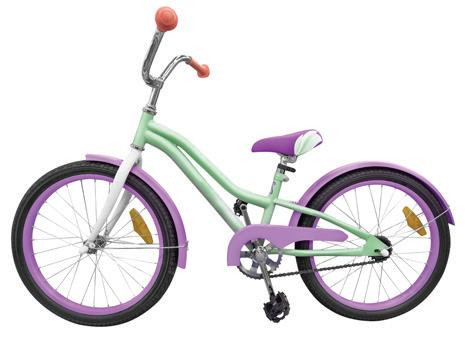



















































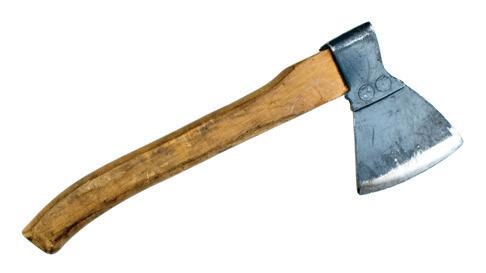

A clock contains many simple machines like wheels and axles, levers, pulleys and wedges.
grooved: with narrow cuts on the surface split: to divide into parts

Aim: To show that a screw has an inclined plane wrapped around a cylinder.
Materials Needed: A sheet of paper, a pencil and a pair of scissors
Method:
Step 1: Take a sheet of paper and cut out a right-angled triangle.
Step 2: Colour the edge opposite to the right angle.
Step 3: Wrap the edge around a pencil. Observe what happens.
Findings: The coloured edge forms a spiral, resembling the threads of a screw.
Conclusion: The above experiment proves that a screw is an inclined plane wrapped around a wedge.
A lever is a straight rod that rests on a fixed point and can be turned around that point. That fixed point is called the fulcrum. The force applied on a lever is called effort. The object that is moved by a lever is called the load. For example, a metal spoon used to open a tin lid acts as a lever. Some other examples of levers are scissors, bottle openers, pliers, tongs and a see-saw.
Look around and observe what devices and tools are being used in your daily life. For example, your mother using a knife to cut vegetables is an example of a lever being used. Write the type of simple machines for each of the devices.


Give two examples for each of the following.
1. Lever
2. Inclined plane
3. Wheel and axle
4. Pulley
5. Wedge
6. Screw
Machines help us do work more easily and quickly. But, to get the best results, it is important to keep them working efficiently. Here are some simple ways to make machines more efficient:
• Cleaning: Remove dust and dirt from machines to keep them running smoothly.
• Lubricating: Apply oil or grease to moving parts to reduce friction and wear-and-tear.
• Tightening: Check and tighten any loose bolts or screws to keep the parts of a machine in place.
• Follow Instructions: Always read and follow the instructions for using a machine.
• Avoid Overloading: do not use a machine to do more work than it is designed for. For example, do not carry too much weight in a wheelbarrow.
• Use the Right Tool: Make sure to use the correct machine or tool for the job. For example, use a knife to cut vegetables and not a screwdriver. By taking care of machines and using them properly, we can ensure they help us do our work efficiently and last longer. This not only saves time and effort but also helps in conserving resources.
Imagine if we didn’t have any simple machines to help us with our daily tasks. Discuss with your friends how our lives would be different without these simple machines.
wheelbarrow: a small vehicle with a single wheel in front, used to carry small loads
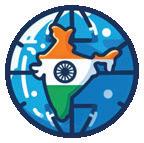
India has one of the biggest train networks in the world. The Chittaranjan Locomotive Works in West Bengal is one of the oldest places in India that makes electric train engines. These engines help move lots of trains all over the country every day.
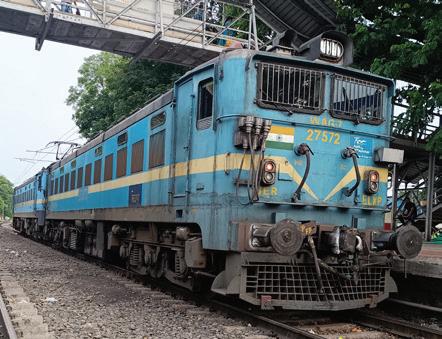
effort: the force applied on the lever fulcrum: a fixed point around which a lever can be turned inclined plane: a surface whose one end is raised at an angle while the other end stays on the ground lever: a straight rod that rests on a fixed point and can be turned around that point load: the object that is moved by a lever machine: a device that makes our work simple and faster pulley: a grooved wheel with a rope around it wedge: it is made up of two inclined planes joined back-to-back, forming a sharp edge screw: an inclined plane wrapped around a cylinder wheel and axle: it consists of a circular part called the wheel which is attached to a rod called an axle

Scan the QR code to know more about machines.
• A machine is a device that simplifies our work and makes it faster.
• Simple machines are simple tools that we use in our daily lives to make our work easier.
• There are six types of simple machines: inclined planes, wheel and axle, pulleys, wedges, screws and levers.
• Proper maintenance and usage of machines make them last longer and work efficiently.

1. Tick ( ) the correct option.
A. Which of these is an example of an inclined plane? Hammer Ladder Wedge Ramp
B. A lever rests on a: Fulcrum Pulley Load Effort
C. Pulleys are used to:
Cut objects Lift objects Hold things together Increase size
D. A wedge is used to:
Cut objects Lift objects Move objects Rotate objects
2. Fill in the blanks.
A. A is a device that simplifies our work.
B. A is made up of two inclined planes joined back-to-back to form a sharp edge.
C. A screw is an inclined plane wrapped around a .
D. A is a grooved wheel with a rope around it.
3. Write True or False.
A. Roller skates are an example of wheel and axle.
B. An inclined plane helps move heavy objects with less effort.
C. Using the wrong tool for a job can damage the machine.
D. Overloading machines makes them more efficient.
4. Name the following.
A. A device that simplifies our work and makes it faster. M H I
B. A fixed point on which a lever rests. L U
C. An object moved by the lever. O
D. The force applied on a lever. E O T
5. Short-answer questions.
A. Why do we need machines?
B. Give an example of an inclined plane.
C. What is the function of a pulley?

D. How is a wedge formed?
E. Why is regular maintenance of machines important?
6. Long-answer questions.
A. Name the six types of simple machines. Give examples of each.
B. How do inclined planes help in reducing effort?
C. List any three ways by which we can make machines more efficient.
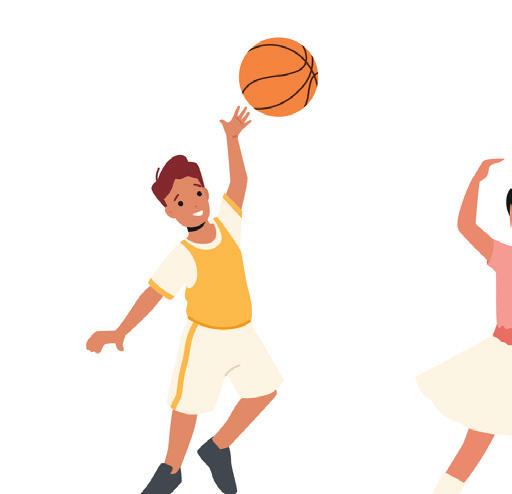
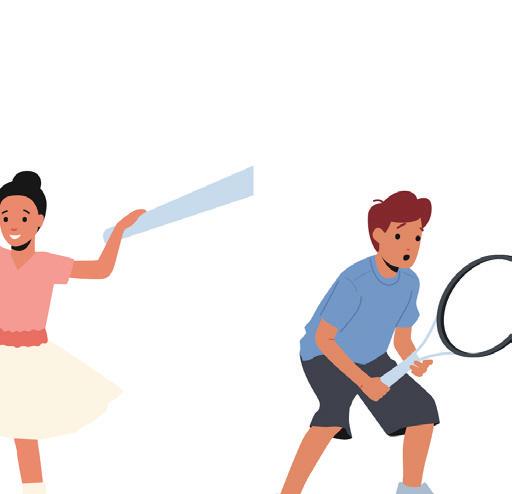
Picture-based questions.


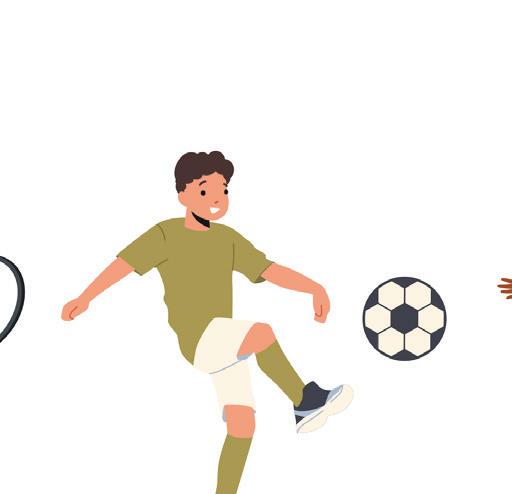
Name the devices and machines used in each image.
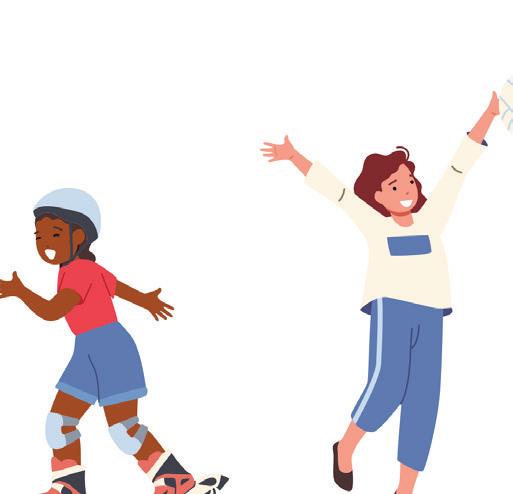

You need to move a heavy box from the ground to the top of a platform. You have a pulley, an inclined plane and a lever. Which machine would you use and why?
How often do you clean your bicycle? It is very important to take care of your bicycle. Cleaning it helps it last longer, and looks nice and shiny. You should clean/wash your bicycle after each ride, check the tyres and make sure the chain is working well. By doing these simple things, you can make your bicycle safe to ride and also use it for many years.
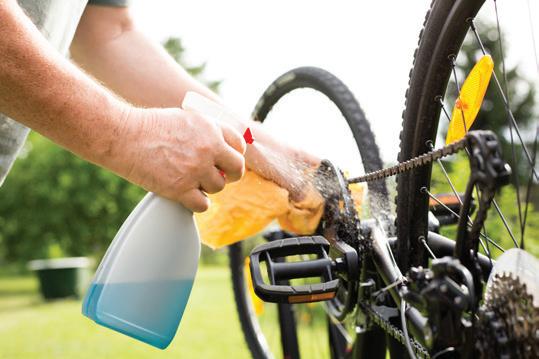






Importance of Measurement
Measurement
Measurement and Estimation
Measuring Time


One Sunday, Aisha decided to bake a cake.
“I want to make the tastiest cake ever!” Aisha exclaimed. She mixed one cup each of flour, sugar, baking powder and butter. Her mom smiled and said, “Aisha, we need to measure our ingredients correctly. Let me help you.”

Aisha was puzzled—why did it matter? Mom explained that measuring the ingredients carefully helps the cake rise and be fluffy. With a measuring cup in hand, Aisha learned that the secret to a great cake is all about the right measurements.
Have you ever noticed what a fruit seller does when you go to buy some fruits? They measure the weight of fruits using a weighing balance. Similarly, the milkman measures the quantity of milk before selling it. You wake up at a fixed time to reach the school on time. We measure so many things in our daily life. Measurement plays an important part in our everyday lives.
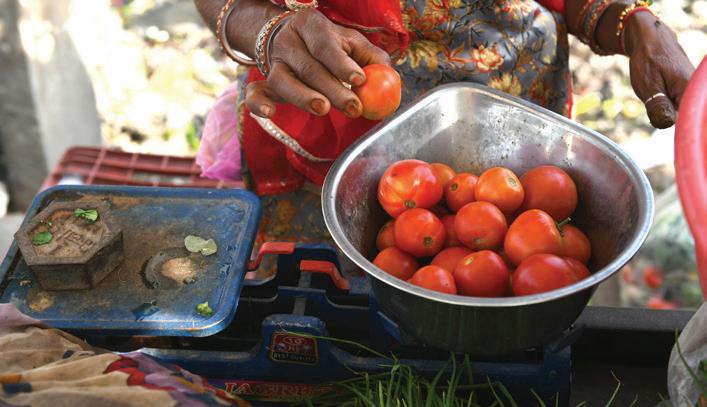
In ancient times, different body parts were used to measure different things. We know different persons have different sizes of the same body parts. Therefore, the older units gave different measurements for the same things and could not be used reliably.
To avoid the difference in the measurements, standard units were introduced. These units give the same results for all the measurements. The value of the standard unit is fixed and does not vary from person to person.
The standard unit for measuring length is metre (m), for measuring weight is kilogram (kg) and for measuring volume or capacity is litre (L).
The metric system is a system of measurement that measures length in metres, weight in grams and volume in litres.
A unit is a fixed quantity that is used as a standard of measurement.
Measurement refers to the action of measuring the amount, duration and size of something. But sometimes, we just guess the value of a measurement, without actually measuring it. This thoughtful guess about the value of something is called estimation. By estimating, we only get a rough idea about a measurement.
Estimation is useful in many ways in our daily lives. Have you ever seen your mother cooking food in the kitchen? Does she use any measuring instrument while adding salt to the food? No, right! She adds salt by estimation only. On the other hand, if you were experimenting in the science lab and added a chemical with estimation only, do you think you will get the correct results? No. While experimenting, we need to have exact measurements of the materials used. Otherwise, we will get incorrect results.
Can you give any two examples where you estimate measurement in your daily life?
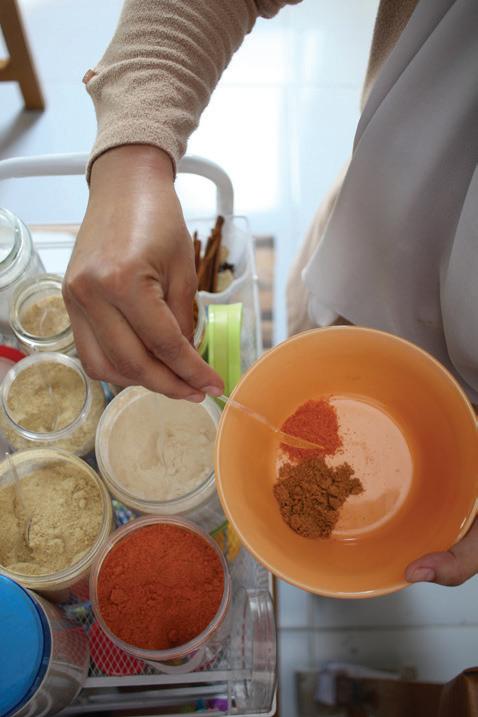
Estimating the amount of spices required
reliably: doing something in a way that can be trusted to work well every time thoughtful guess: a guess made on a topic after having studied it very well

Time is a measure of the duration of an event. It is used to determine the beginning and ending of something. It also tells us for how long an event occurs.
The basic unit of measuring time is seconds. Some other units of time are minutes, hours, days, weeks, months and years. The unit of time changes with the type of activity involved. For example, if you are going out for a film, you will measure time in hours. If you are participating in a 100-metre race with your friends, you will measure time in minutes.
Can you think of some more examples where you measure time in your daily life?
We use clocks to measure time. A clock has two major hands—an hour hand and a minute hand. Some clocks have a second hand as well. The hour hand is shorter than the minute hand.
It takes the second hand 1 minute to complete one round of the clock. Similarly, it takes the minute hand 1 hour to complete one round of the clock. Lastly, it takes the hour hand half a day to complete one round of the clock.
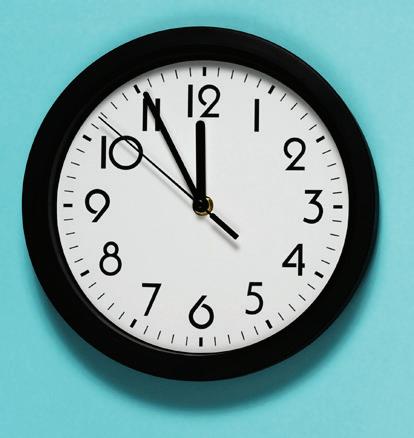
A clock has the numbers 1 to 12 on it. These numbers tell us the hours of the day. When an hour is complete, the hour hand moves from one number to the next. The clock shows a total of 12 hours at a time. The hour hands needs to go around the clock twice to show one day.
A clock also has five little dashes (') between every two numbers. These dashes represent minutes or seconds, depending on which hand is on them. There are 60 dashes in total to show that there are 60 seconds in a minute, and 60 minutes in an hour.
However, just by looking at the clock we cannot say if it is morning or evening. To determine that, we use a.m. and p.m. along with the time value. The period from midnight till noon is indicated by adding a.m. with the time. The period from noon till midnight is represented by adding p.m. with the time. For example, 11 a.m. (in the morning) and 11 p.m. (at night).

Make a list of some activities that you do daily like having breakfast, lunch and dinner, going to school, doing your homework, playing and sleeping. Now, mention the time of each activity. Make sure to write a.m. or p.m. with the time value.
There are two major types of clocks—analog and digital. A digital clock shows numbers to indicate the time. It does not have hour and minute hands. Sometimes, we use a stopwatch to measure very short time intervals. It is a hand-held watch with a start and a stop button.
In earlier times, a sundial was used to measure time. A sundial had two parts, a circular dial with 12 marks, and a stick in the centre.
Complete the following.
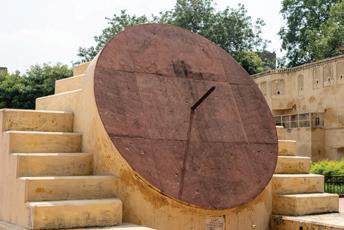
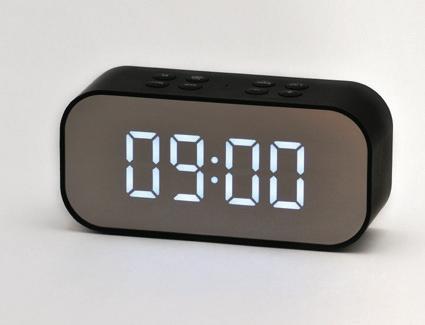
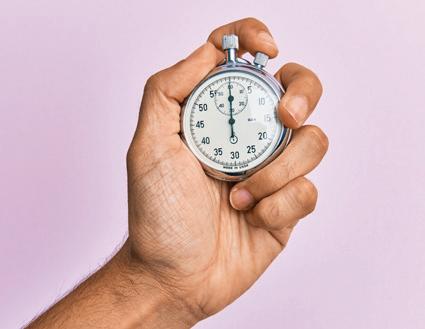
1. The instrument with an hour and a minute hand.
2. The instrument that shows only numbers to depict time. D
3. The instrument is used to measure very short intervals of time.
Have you ever touched something cold, like ice or a glass of cold water? When you touch it, you feel the cold on your skin. Now, think about touching something hot, like a hot pan on the stove. The moment you touch it, your skin feels the heat, and you quickly pull away. These experiences help us understand temperature, which measures how hot or cold something is.
A thermometer is a device that is used to measure temperature. A thermometer has three main parts: a glass outer tube, a thin inner tube, and a small bulb filled with a liquid. There are markings on the inside to measure how hot or cold something is.


When we use a thermometer, the liquid in the bulb moves up the tube to a specific marking, which tells us the temperature of the particular thing.

Thermometer
We measure the temperature in different units like degrees Celsius (˚C) and degrees Fahrenheit (˚F). Usually, we use degrees Celsius to measure the temperature of objects. We usually measure the temperature of animals and humans in degree Fahrenheit.

Aim: To prove that a thermometer can measure different temperatures accurately
Materials Needed: Thermometer (digital or mercury), a glass of hot water, a glass of cold water, a glass of water in room temperature, a notepad and a pencil
Method:
Step 1: Measure the temperature of hot water with the thermometer and record it.
Step 2: Measure the temperature of cold water with the thermometer and record it.
Step 3: Measure the temperature of water that is in room temperature with the thermometer and record it.
Findings: The recorded temperatures will show that hot water has the highest temperature, cold water has the lowest, and water in room temperature is in between.
Conclusion: A thermometer can measure different temperatures accurately, demonstrating its usefulness for determining the temperatures of various things.
The Jantar Mantar in Delhi is made of several structures, or jantars, used to calculate time. These structures estimate time using the movements of different celestial bodies like planets, the Moon and the Sun.
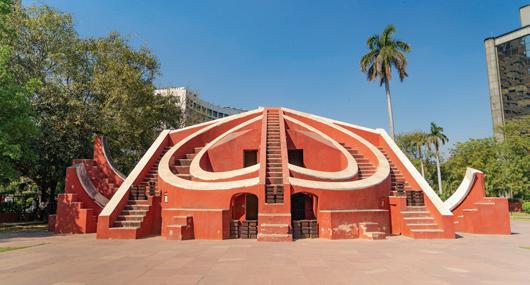
standard units: units that give the same results for all measurements estimation: a thoughtful guess about the value of something time: the measure of the duration of an event
temperature: the measurement of the hotness and coldness of a particular thing

Scan the QR code to know more about temperature and its measurements.
• The value of standard unit is fixed and does not vary from person to person.
• Time is a measure of the duration of an event.
• Time can be measured in seconds, minutes, hours, days, weeks, months and years.
• Temperature measures the hotness and coldness of a substance.
• Temperature can be measured in degrees Celsius (˚C) and degrees Fahrenheit (˚F).
1. Tick ( ) the correct option.
A. Which instrument is used to measure time?
Ruler
Thermometer Weighing balance Clock
B. Which of the following instruments shows only numbers to represent time?
Thermometer Stopwatch Analog clock Digital clock
C. Which of the following instruments is used to measure very short intervals of time?
Stopwatch Thermometer Analog clock Digital clock
D. Which of the following instruments is used to measure temperature?
Stopwatch Analog clock Thermometer Digital clock

2. Fill in the blanks.
A. is a guess about the value of something.
B. The basic unit of time is .
C. An clock has numbers from 1 to 12.
D. A thermometer is used to measure the of a thing.
3. Write True or False.
A. The standard units have a fixed value.
B. The exact value of something is called estimation.
C. The hour hand of a clock is longer than the minute hand.
D. A digital watch measures very short intervals of time.
4. Match the following.
A. An analog clock i. very short time intervals
B. A digital clock ii. two major hands
C. Evening time iii. shows only numbers
D. A stopwatch iv. adding a.m. with time
E. Morning time v. adding p.m. with time
5. Short-answer questions.
A. Why do we need standard units of measurement?
B. Give any two examples of estimation from daily life.
C. Name the standard units used for measuring weight and volume of a substance.
D. Name three instruments used to measure time.
E. How do we determine morning and evening using time?
6. Long-answer questions.
A. What is the difference between measurement and estimation?
B. What do we use to measure time? Describe that device and its types.
C. What does a thermometer do? Describe how it functions.
7. Picture-based questions.
A. Label the minute, second and hour hands in the image shown below.
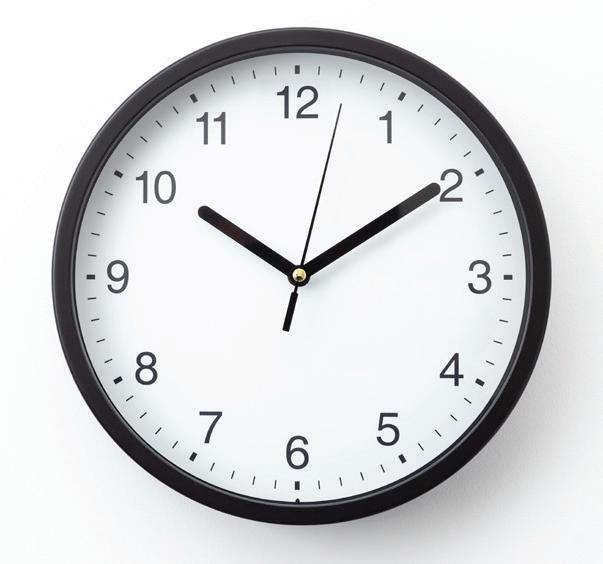
B. Name the type of the clock.
C. Name another instrument to measure time.


You are planning a party and need to set up tables for 30 guests. Each table seats 6 people.
A. How many tables do you need?
B. Why is it important to measure and calculate correctly in this situation?




The Earth and the Solar System
The Solar System
The Earth Satellites


Let us recite the poem together!
The Sun shines bright with golden rays, Warming Earth throughout the days. Earth spins round, both night and day, Bringing light in a wondrous way. Life on Earth, the Sun sustains, Together they, in harmony, remain.
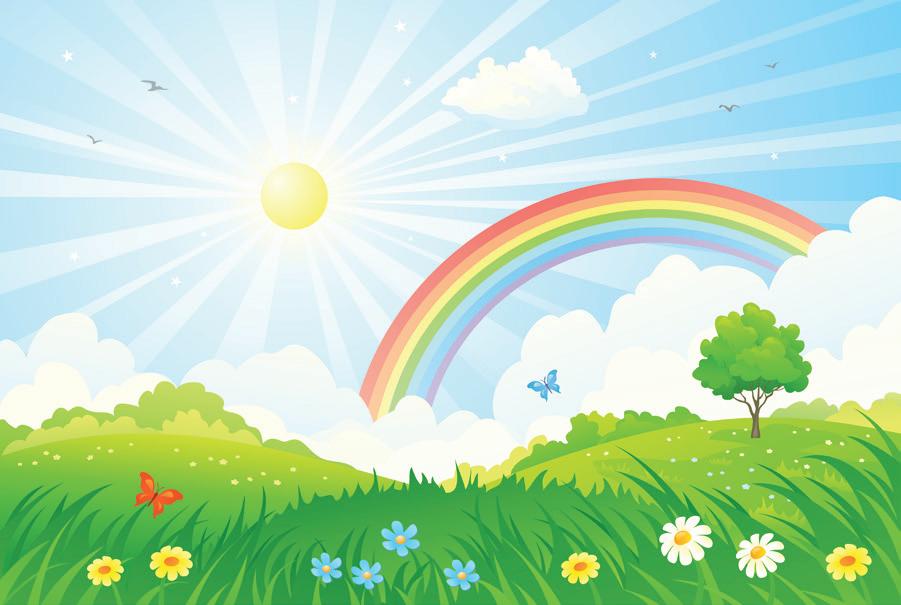
We all live on the planet Earth. The Earth revolves around the Sun. Likewise, there are seven more planets that move around the Sun. Do you think people live on these planets as well? What is the position of planets around the Sun? Let us find out. The natural objects that appear in the sky are called celestial or heavenly bodies. Some examples of celestial bodies are the Sun, the stars and the Moon. Earth
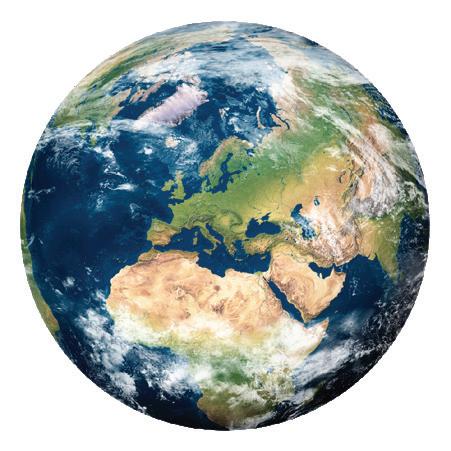
The Sun and the planets, and other heavenly bodies that revolve around them, are together called the solar system. The Sun is at the centre of the solar system. All the planets and the other celestial bodies revolve around it in an elliptical path called an orbit.
Sun
The Sun is a star. Stars are celestial bodies that are huge balls of gases and have their own heat and light. So, the Sun also releases heat and light. The Sun is the nearest star to the Earth. This is why it looks bigger than other stars.
The Sun is the ultimate source of energy on the Earth.
Planets
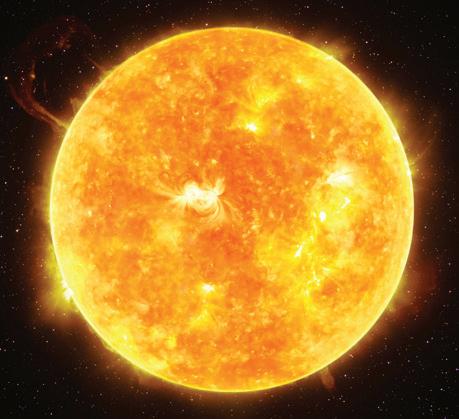
Planets are the celestial bodies that move around the Sun. All planets move in their respective orbits around the Sun. The gravitational force of the Sun keeps the planets in their place in the solar system. They do not have their own light; instead, they reflect the Sun’s light.
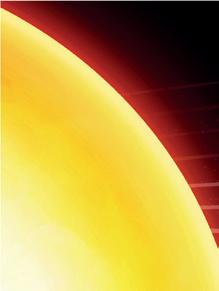
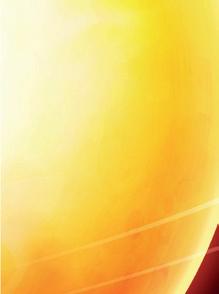


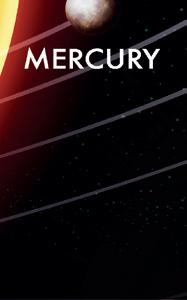

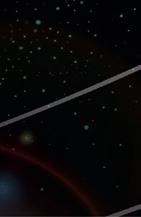
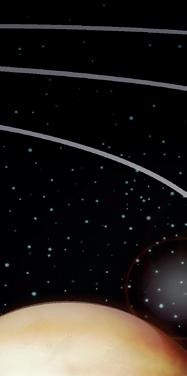
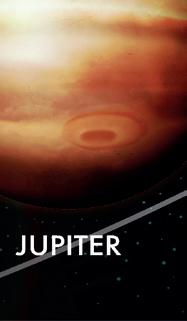


























“Many Very Elderly Men Just Snooze Under Newspapers”
Many—Mercury
Very—Venus
Elderly—Earth
Men—Mars
Just- Jupiter
Snooze- Saturn
Under- Uranus


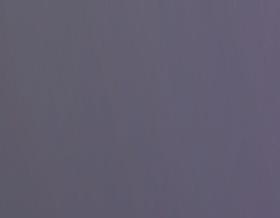











Let us recall the names of eight planets with the help of a mnemonic.




Newspapers- Neptune
elliptical: a shape that is oval or an elongated circle mnemonic: a special trick or rhyme that helps you remember something more easily










The planets in our solar system are divided into two groups.
Inner Planets: These planets are nearest to the Sun. These are rocky planets. The names of the inner planets are Mercury, Venus, Earth and Mars.
What other name would you like to give to planet Earth? Why?
Outer Planets: These planets are also called gas giants. They are made of gases and ice. The names of the outer planets are Jupiter, Saturn, Uranus and Neptune.
Some unique features of the planets of our solar system are as follows:
Mercury
Features
It is the smallest planet. It is the planet closest to the Sun. It does not have any atmosphere or moon. It becomes very hot during the day and very cold during the night.
Venus It is the brightest planet. It is also called the Morning and the Evening Star as it is visible just before sunrise or just after sunset. It is the hottest planet.
Earth It is also called the ‘Blue Planet’. It has air and water. It is known to be the only planet that supports life. It has one moon.
Mars It is also called the ‘Red Planet’ since the red soil and rocks on its surface makes it appear reddish in colour when seen from the Earth. It is the only planet with a surface similar to that of the Earth. It has two moons.
Jupiter It is the fifth and the largest planet. It has more than 80 moons.
Saturn It is the second largest planet. It has the maximum number of moons (>140). It also has giant rings around it.
Uranus It is as an ice giant. It appears light blue. It has 27 moons. Its poles are tilted on its side.
Neptune
It is also an ice giant. It is the farthest and the windiest planet. It has 14 moons.
Images


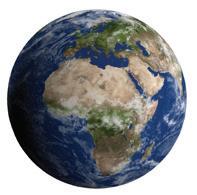
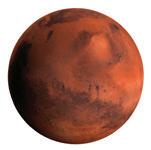
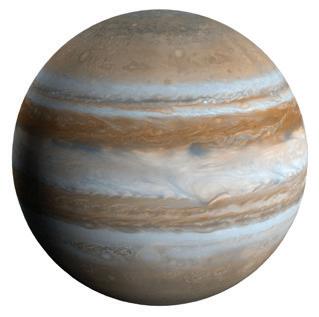
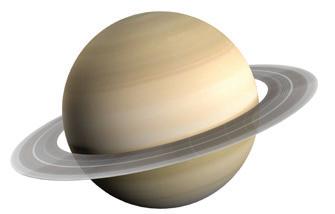
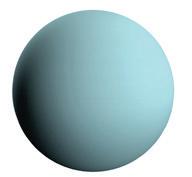
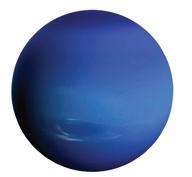
Match the following.
1. The nearest planet to the Sun
2. Blue Planet
3. A planet with the maximum number of moons
4. The largest planet
i. Earth
ii. Jupiter
iii. Mercury
iv. Saturn
We all live on the surface of the Earth. But have you ever wondered what is the Earth made up of? Let us learn about this in detail.
The Earth is made up of three main layers—crust, mantle and core.
Crust/Surface: It is the outermost layer of the Earth. It forms the surface on which we live. It is hard and cool.
Mantle: It is present between the crust and the core. It is made up of rocks, minerals and metals. This is a solid layer of the Earth.
Core: It is the innermost layer of the Earth. It is very hot. It is made of metals, minerals and gases. The core is further divided into two parts—the outer core and the inner core. The outer core is liquid. The inner core is solid.
Imagine you are riding on a merry-go-round at the playground. As it turns around, you see different parts of the playground because it moves in a circle. This is how a merry-go-round moves around a central point.
The Earth is also like a huge merry-go-round. It has an imaginary line that passes through its centre between the North and South poles. This imaginary line is called an axis. The axis is not a straight
imaginary: unreal

line. It is slightly tilted. The North Pole is the point at the top of the axis. The South Pole is the point at the bottom of the axis.
The equator is an imaginary line that divides the Earth into two halves. The upper half is the Northern Hemisphere. The lower half is the Southern Hemisphere.
The Earth performs two types of movements, rotation and revolution. Let us learn about them.


















































of the Earth
Have you ever seen a top spinning on the ground? It spins on its axis. Similarly, the Earth also moves around its axis. This movement is called rotation. The Earth takes 24 hours to complete one rotation.
The rotation of the Earth on its axis causes the formation of day and night. During rotation, the part of the Earth that faces the Sun experiences day. The other part of the Earth that does not receive sunlight experiences night. Equator
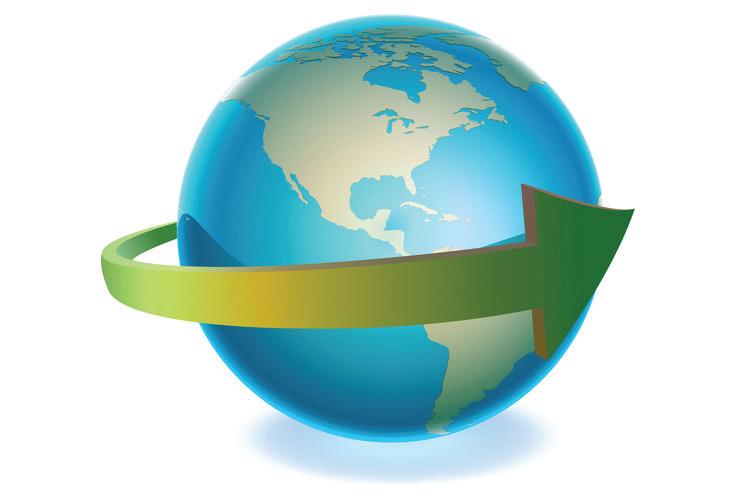
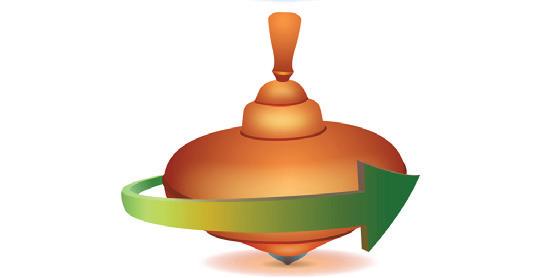
Revolution
It is the movement of the Earth in its orbit around the Sun. When the Earth completes one round along its orbit, it is called a revolution. The time taken to complete one revolution is one year.
The Earth’s revolution causes different seasons. You know that the Earth’s axis is tilted. This
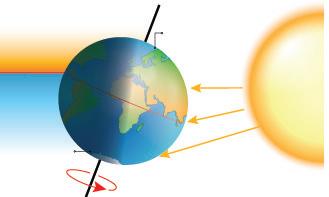




makes one pole of the Earth closer to the Sun at a particular time of the year. Thus, that hemisphere receives more sunlight and experiences summer. At the same time, the other hemisphere that is tilted away from the Sun experiences the winter season.
Revolution changes the position of the poles tilted towards the Sun. For about six months in a year, the North Pole is tilted towards the Sun while for the rest of the year, the South Pole is tilted towards the Sun. This cycle of tilt and revolution causes the seasons to change throughout the year.

Here, it is important to note that the equator always receives direct sunrays. So, it always remains hot. On the other hand, the North and South poles always remain cold.

Aim: To study the formation of day and night.
Materials Needed: A clay ball (representing the Earth), a wooden stick and a torch
Method:
Step 1: Take the clay ball and insert a wooden stick in it. Make sure the stick is slightly tilted. This will represent the Earth’s axis.
Step 2: Throw light on the clay ball using a torch. Observe what happens.
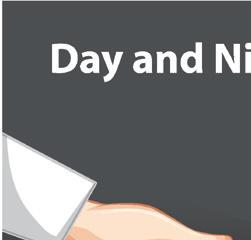
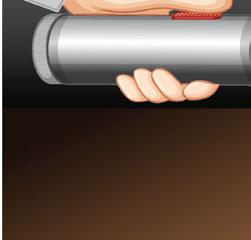

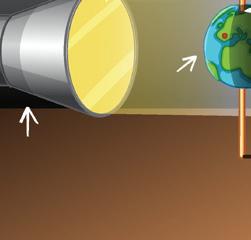
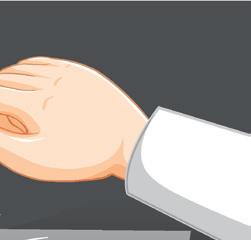

Findings: The part of the ball that receives direct torchlight indicates day. On the other hand, the opposite dark part represents night.
Conclusion: The Earth’s rotation is responsible for the formation of days and nights.





Cross ( ) out the statement that is not true about the rotation of the Earth.
1. It is the Earth’s movement on its own.
2. It causes the formation of seasons.
3. One rotation is completed in 24 hours.
4. It takes place around an imaginary line.
Do you know that the Moon revolves around the Earth? A heavenly body that revolves around a planet is called a satellite.
Therefore, the Moon is the natural satellite of the Earth. The Moon does not have air or water to support life. The surface of the Moon that we see from the Earth is called its face. The surface of the Moon is not smooth. Instead, has craters on it.
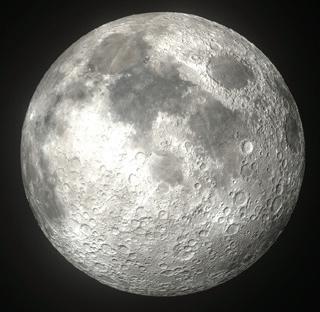
The Earth is also surrounded by several man-made objects known as artificial satellites, which orbit the planet. These satellites are launched into space using rockets. The first artificial satellite sent into space by humans was Sputnik 1. Artificial satellites play important roles, such as weather forecasting, providing communication services, and studying the solar system and the universe.
Did You Know?
The Moon appears as a beautiful shiny object from the Earth. However, it does not have its own light. The Moon shines when it reflects the Sun’s light.
The Birla Planetarium in Kolkata is the largest planetarium in Asia. This planetarium uses advanced projection systems to represent the solar system and different celestial bodies. It also conducts educational shows about space exploration.
India’s first artificial satellite, Aryabhata, was launched into space in the year 1975.
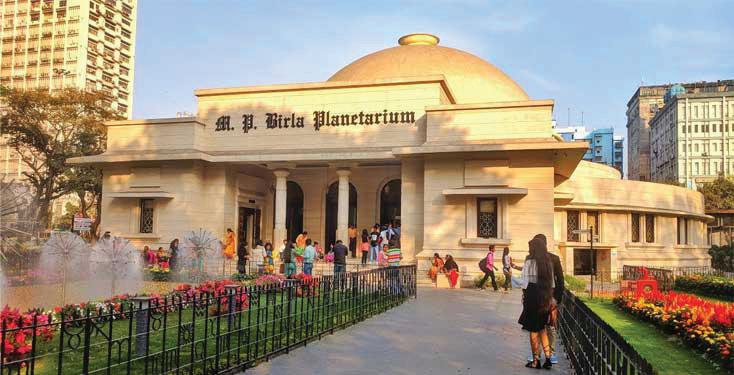
craters: large holes
celestial bodies: the objects present in the space planets: the celestial bodies that revolve around the Sun
revolution: the movement of the Earth around the Sun in an orbit rotation: the movement of the Earth around its own axis satellites: the objects that revolve around a planet

Scan the QR code to know more about the solar system.
• The Sun is at the center of the solar system.
• There are eight planets in the solar system—Mercury, Venus, Earth, Mars, Jupiter, Saturn, Uranus and Neptune.
• There are three main layers of the Earth—crust, mantle and core.
• Satellites are the heavenly bodies that revolve around the planets.
• The rotation of the Earth causes the formation of days and nights.
• The revolution of the Earth causes different seasons.
1. Tick ( ) the correct option.
A. The celestial objects that have their own heat and light are called . Stars Planets Satellites Moon
B. The number of planets in our solar system is

C. The path in which the planets move around the Sun is called Satellite Orbit Crust Space
D. The revolution of the Earth is responsible for
The change of seasons
Formation of solar system
2. Fill in the blanks.
The formation of days and nights
Change in the order of planets
A. is the innermost layer of the Earth.
B. is present between the crust and core.
C. The of the Earth causes different seasons.
D. of the Earth causes and night.
3. Write True or False.
A. Earth is the only planet with a natural satellite.
B. The equator always receives direct sunrays.
C. All the planets of our solar system have air and water.
D. The Moon is the nearest star to the Earth.
4. Circle the correct option in each of the following.
A. Inner / Outer planets are also called gas giants.
B. Neptune / Jupiter is the windiest planet in our solar system.
C. Uranus / Mars is also an ice giant.
D. Venus / Mars is called the morning star as well as the evening star.
5. Short-answer questions.
A. Name the planets that form the solar system.
B. How are the inner planets different from the outer planets? Give examples of each.
C. What features of the Earth make it suitable to support life?
D. Define axis and equator.
E. How many layers does the Earth have? Name them.
6. Long-answer questions.


A. Explain the different layers of the Earth with the help of a well-labelled diagram.
B. Why do seasons change on Earth? Explain with the help of a diagram.
C. Explain the formation of day and night.
7. Picture-based questions.
A. What does the given image represent?
B. Label the 1, 2, 3 and 4 marked in the image.
C. Write one sentence about each of them.


1. Stars have their own light and heat. Yet, we do not feel the heat of the stars visible at night. Why?
2. What might happen if the planets in our solar system do not revolve in their orbits around the Sun?
The world’s population is increasing at an alarming rate. Do you think humans can live on other planets? With the help of your friends, find out the following:
• What are the conditions required for the presence of life on a planet? Is there any other planet, that has all these conditions?

• Mention any one habit that you would change to protect our planet Earth.

Objective: Students will explore how the slope of an inclined plane affects the speed of an object that is moving down the inclined plane.
Materials Needed:
Wooden plank or piece of cardboard (2–3 feet long), stack of books (to create different slopes), toy car or small rolling object, ruler or measuring tape, stopwatch, notebook and pencil (to record results)
Step 1: Learn about Simple Machines
Revise about the different types of simple machines given in the textbook. Focus on how an inclined plane makes our work easier.
Step 2: Create the Inclined Plane
Place one end of the wooden plank or cardboard on a stack of 2–3 books to create a low slope. Measure the height of the slope from the ground using the ruler or measuring tape. Record this height in your notebook.
Step 3: Measure Speed Down the Inclined Plane
Place the toy car at the top of the slope and let it roll down. Use the stopwatch to measure the time it takes for the car to reach the bottom of the slope. Record the time in seconds. Repeat this step three times to get an average time for the low slope. Record all results.
Step 4: Repeat for Different Slopes
Increase the height of the inclined plane by adding more books (4–5 books for a medium slope, 6–7 books for a high slope). Repeat Step 3 for each new slope, measuring the time taken for the car to reach the bottom three times and calculating the average time.
Step 5: Compare the Results
Create a table to compare the height of the slope and the average time taken for the car to reach the bottom.
Project Output: You have learnt that the time taken for the car to reach the bottom, changes with different slopes. The higher slopes result in shorter times, meaning the car moves faster. Present your findings to your class.
Final Outcome: This hands-on project will help you understand how an inclined plane works and how it reduces human effort to make tasks easier by allowing objects to move smoothly and quickly.
To be read aloud and explained in the mother tongue by the teacher, as needed.
In India, solar energy has made a big difference by providing many real-life benefits. For example, in small villages, solar panels on rooftops provide enough energy to light up homes, run fans and charge mobile phones. Large solar parks in Gujarat and Rajasthan produce a lot of electricity for the country. Solar energy works by capturing sunlight with panels and turning it into electricity. This helps reduce pollution and cuts down on electricity bills. The Indian government’s National Solar Mission also supports putting solar panels on government buildings and schools, encouraging more people to use this clean energy source. By using solar energy, we can help protect the environment and make sure there is enough power for everyone.
1. Which energy comes from the sun?
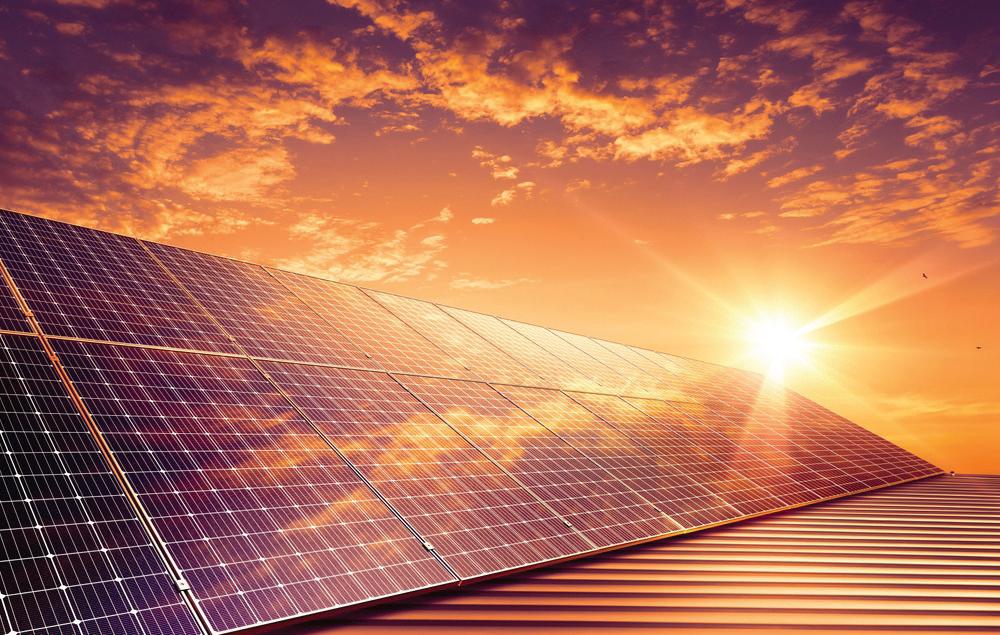
A. Solar energy B. Hydro energy
2. Why is solar energy good for the environment?
A. Electricity made from solar energy has no cost.
B. It helps reduce pollution and keeps the air clean.
C. It makes the sun shine brighter.
C. Electric energy
3. Apart from solar energy, name any three other forms of energy.
4. Which kind of energy sources should we use to help fight climate change? Why?
To be read aloud and explained in the mother tongue by the teacher, as needed.

Name of the Student:
Time: 1 Hour
Total Marks: 40
1 Tick () the correct answer. (1 × 5 marks)
A Which of the following is soluble in water?
a Salt
b Oil
c Sand d Chalk
B How many planets are present in our solar system?
a 5
b 9
C Which of these actions use muscular force?
a Apple falling down
c Dreaming in one’s sleep
c 8 d 1
b Boiling water in a pan
d Riding a bicycle
D Which of these is an example of an inclined plane?
a Hammer
b See-saw
c Wedge d Ramp
E Which of the following instruments is used to measure very short intervals of time?
a Thermometer
c Analog clock
b Stopwatch
d Digital clock
2 Fill in the blanks. (1 × 5 marks)
A is the ability to do work.
B An clock has numbers from 1 to 12.
C is present between the crust and core.
D A is made up of two inclined planes joined back-to-back to form a sharp edge.
E Molecules are very tightly packed in .
3 Write ONE word for the following.
A The change of state from gas to liquid on cooling.
B The measurement of the hotness and coldness of a particular thing.
C A push or pull on an object.
D The objects that revolve around a planet.
E A fixed point around which a lever can be turned.
(1 × 5 marks)
4 Write True or False. (1 × 5 marks)
A The standard units have a fixed value.
B An inclined plane helps move heavy objects with less effort.
C Gravity pushes everything away from the Earth.
D The equator always receives direct sunrays.
E In deposition, a liquid changes into a solid.
5 Picture-based questions. (1 + 1 + 2 marks)
A Name the type of force applied by the man.
B Name the type of force that opposes the movement of the box on the floor.
C How is the direction of both forces related to each other?
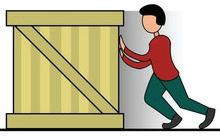
6 Answer the following questions in short. (2 × 4 marks)
A What is the function of a pulley?
B Which features of the Earth make it suitable to support life?
C Why do we need standard units of measurement?
D What are soluble and insoluble substances?
7 Answer the following questions in detail. (4 × 2 marks)
A List any three ways through which we can make machines more efficient.
B Explain the formation of day and night.

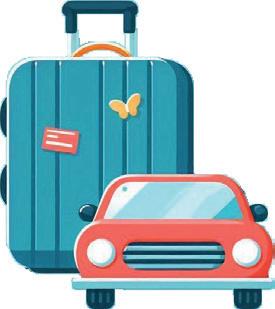

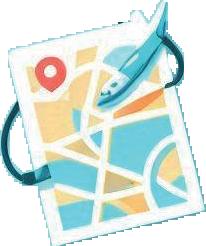




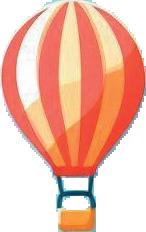
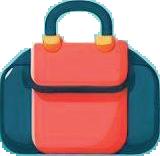







Solve the riddle given below.
I soar high up in the sky, With wings so wide, I love to fly.
I take you places far and near, Through clouds, I glide without fear. What am I? Can you guess?
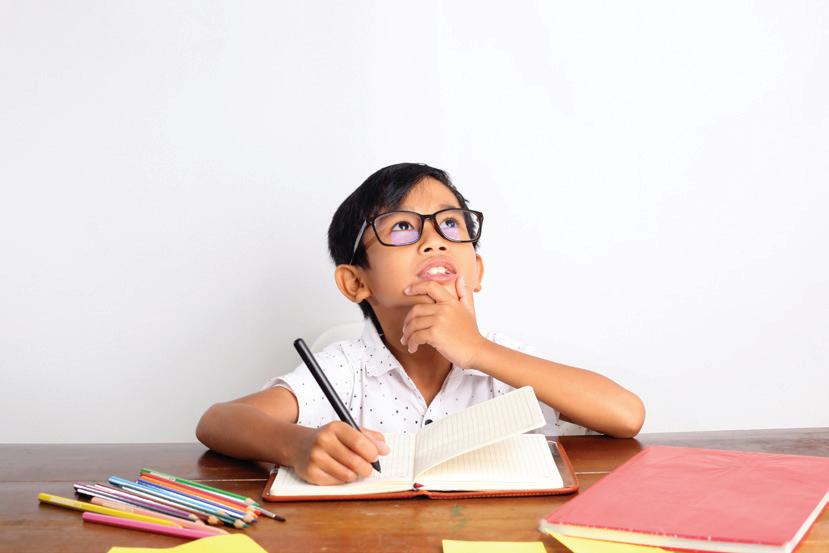
In ancient times, it was very difficult to travel or transport goods. People had to walk long distances to do so. With the invention of the wheel, transport became easier, and people began using carts pulled by animals like horses and oxen. It made travel easier for
The different types of vehicles that are used for carrying goods and people from one place to another are called means of transport.


them, but it still took several days to travel over long distances. Today, we have many options to travel or transport goods, such as cycles, tongas, cars, buses, trains, aeroplanes, ships and metro.
There are three kinds of transportation: land transport, water transport and air transport. Let us learn about them in detail.
Land transport is the most commonly used means of transport.
There are two types of land transport: roadways and railways.
India has a wide network of roads that connects cities, towns and villages. It is also easier to build roads compared to laying railway tracks or building airports or ports. Roads are useful because they connect our homes directly to markets and other places.
Nowadays, electric cars and buses are also used on Indian roads. They have rechargeable electric motors and do not use petrol or diesel to run. Thus, they are also good for the environment and do not cause air pollution.
There are many types of roads in India. Two main types are national highways and state highways.
National highways connect states with each other across India. State highways link important cities, towns and districts within the state. They also connect National Highways or state highways of the neighbouring states.
The national highways are constructed and maintained by the National Highways Authority of India (NHAI) and the state highways are constructed and managed by the Public Works Department of each state.
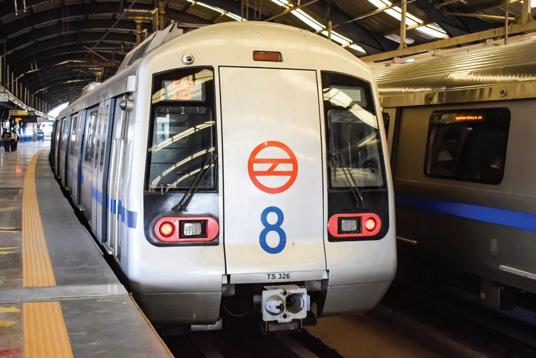
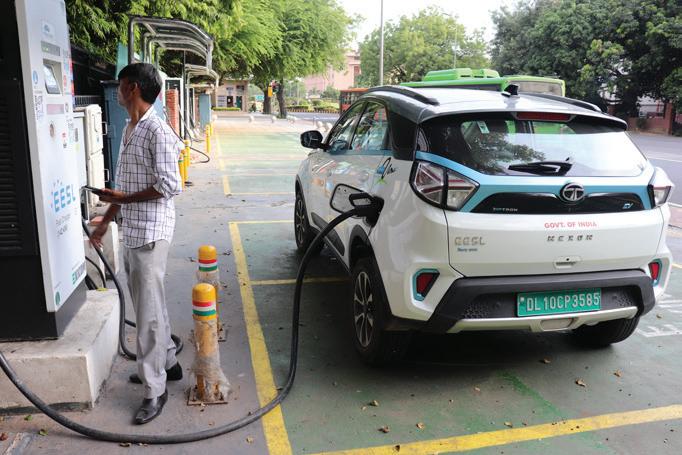

The Golden Quadrilateral is a national highway that connects four major metro cities: Delhi, Kolkata, Mumbai and Chennai. Along the route it connects many major industrial, agricultural and cultural cities of India. It is 5846 kms long.
Make a list of the national highways and state highways that you have in your city or state.
The first railway line in India began in 1853 between Mumbai and Thane.
Railways in India transport thousands of passengers to work, vacation and business every day. They also transport several tonnes of goods from places where industries are located to the markets across India, thus helping in economic activities and development. Since Indian railways are connected to our lives in so many ways, they are referred to as ‘the lifelines of the nation’.
Compared to roadways, railways are faster and more comfortable when travelling over long distances.
India has different types of trains that serve different purposes. They are passenger trains, superfast trains and goods trains. Passenger trains focus on the comfort and basic facilities for the passengers. Superfast and express trains have limited halts on the route, so passengers can reach their destination faster. Today, the Vande Bharat Express is one of the fastest passenger trains in India. Goods trains transport only goods over long distances.
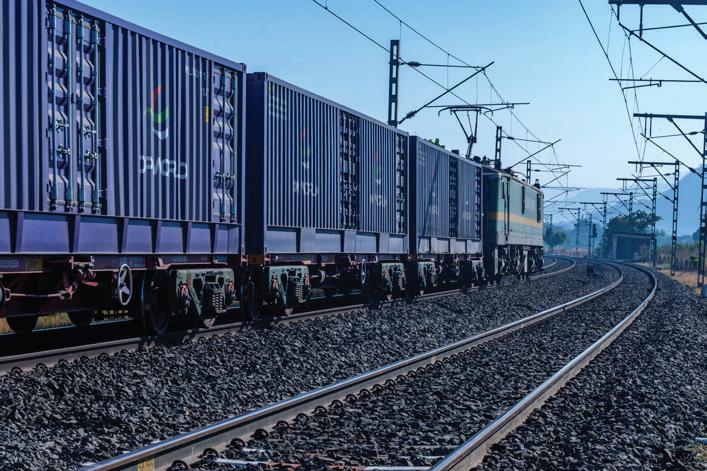
Some trains connect different places within the city and some neighbouring areas. They are local trains and metros. For example, local trains in Mumbai connect several locations within the city, and metro trains do the same in Kolkata, Delhi and Chennai. Metro trains work underground and underwater as well. For example, a part of the Kolkata metro runs underwater and a part of the Delhi metro runs underground.
What is the name of the railway station in your city or town?
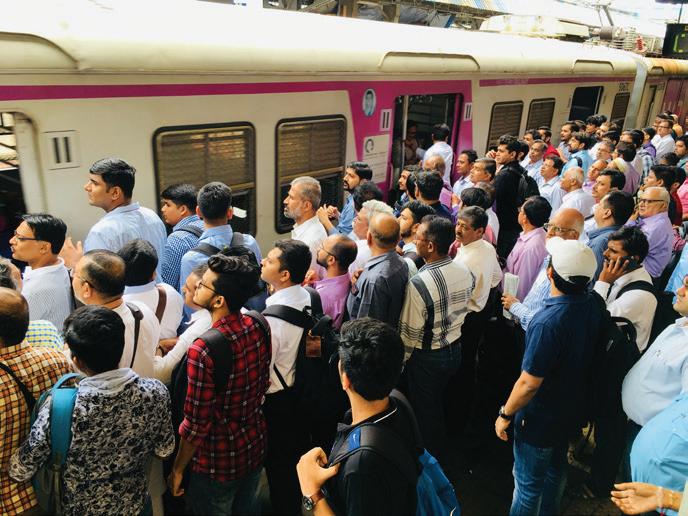
People waiting to board a local train in Mumbai
economic activities: activities related to production, buying and selling of goods

Tick ( ) the correct statement.
1. Metro trains run within the city.
2. Local trains run between two states.
3. National Highways are maintained by the Public Works Department.
4. State highways link important cities, towns and districts within the state.
Water transport helps to move large amounts of goods over long distances, and it is often cheaper than other types of transport.
In modern times, we have container ships that carry cargo, oil tanker ships that carry petroleum and cruise ships that carry people. Cruise ships are large ships that carry passengers and have many modern facilities like cinema halls, lifts, rooms, restaurants, etc.
India has ports on the west and the east coast. Some major ports on the west coast are Kandla Port, Jawaharlal Nehru Port, Kochi Port and Mormugao Port.

Inland waterway in India

Some major ports on the east coast are Chennai Port, Paradip Port, Haldia Port and Visakhapatnam Port.
In India, there are many rivers, canals and lakes that are navigable. They are called inland waterways. For example, the Ganga and the Brahmaputra river are two main inland waterways in India.
Air transport is the fastest means of transport. It is often more expensive than other means. It makes it convenient to reach mountains and hilly regions that are otherwise difficult to reach using roadways or railways. During natural disasters such as floods
navigable: deep and wide enough for boats or ships to sail safely
or landslides, helicopters can quickly come to the rescue. Aeroplanes also carry goods and mail between states and countries.
India has several domestic and international airports located across all major cities, such as the Indira Gandhi International Airport in Delhi and the Chaudhary Charan Singh International Airport in Lucknow. Some of the most common airlines in India are Air India, IndiGo and SpiceJet.

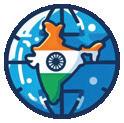

Team up with your partner and find out the names of Indian states in which each of the ports mentioned above are located. You can use library books or the internet.
India has some luxury tourist trains like the Deccan Odyssey and the Palace on Wheels. They run on special routes covering many famous tourist destinations.
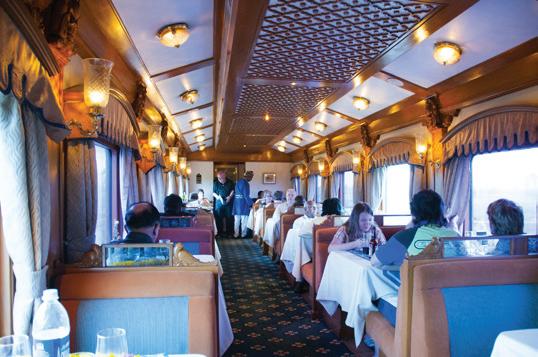
national highways: roads that connect states with each other across India
state highways: roads that link important cities, towns and districts within the state and surrounding areas
passenger trains: they focus on the comfort and basic facilities for passengers
goods trains: trains that transport only goods over long distances
local trains: trains that connect different places within the city and some neighbouring areas
cruise ships: large ships that carry passengers and have many modern facilities
inland waterways: rivers, canals and lakes that are navigable

Scan the QR code to learn more about the Indira Gandhi International Airport, Delhi.

• The Golden Quadrilateral connects four major metro cities: Delhi, Kolkata, Mumbai and Chennai.
• The Ganga and the Brahmaputra River are two main inland waterways in India.
• India has several domestic and international airports located across all major cities.
1. Tick ( ) the correct answer.
A. Which of the following is the cheapest way to move large amounts of goods over long distances?
a. Water transport
b. Air transport c. Land transport
B. Which of the following is the more expensive mode of transport?
a. Water transport
b. Air transport c. Land transport
C. Which of the following will be most useful for rescuing people during floods?
a. Ships
2. Fill in the blanks.
b. Helicopters c. Cars
electric cars national highways Mumbai state highways
A. The first railway line in India began in 1853 between and Thane.
B. are good for the environment.
C. NHAI maintains the in India.
D. The Public Works Department maintains the in India.
3. Write True or False.
A. Metro trains only run underground.
B. Railways are easier to build than roads.
C. Road transport is the most expensive means of transport.
D. Haldia Port is on the west coast of India.

4. Short answer questions.
A. Name two inland waterways of India.
B. Name the four major metro cities that are connected by the Golden Quadrilateral.
C. Which invention made travelling easier?
5. Long answer questions.
A. Explain any two types of trains in India.
B. Why is it important to have different types of transportation like cars, metros, buses, trains and aeroplanes in a country?
6. Picture-based questions.
Look at the pictures and answer the following questions.

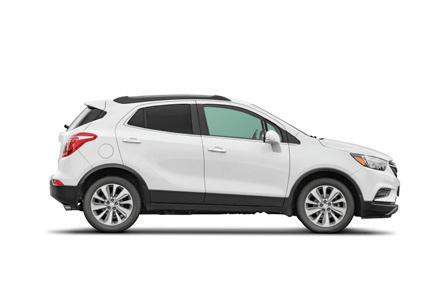
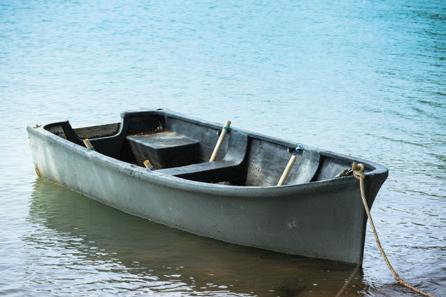
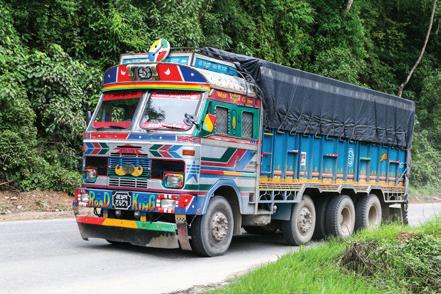
If you had to travel across a large river and then continue your journey by land to reach a faraway city:
A. Which two modes of transportation from the picture would you choose?
B. Explain your choices based on their abilities and limitations.

During a major storm, several flights at an airport were delayed due to bad weather conditions. The passengers waited for hours, and many were worried about safety. However, some passengers were angry and wanted the flights to leave immediately to reach their destination on time.
1. Why do you think flights are delayed during bad weather?
2. Give two ways in which you would explain the importance of safety over time in air travel to angry passengers.

Make a poster of the different means of land transport available in your city. You can use magazine or newspaper cuttings, take printouts from the internet or draw pictures on your own. Write how we can use these vehicles in a sustainable manner. Share it with the class.



Means of Communication
Meaning and Types of Communication
Methods of Personal Communication Methods of Mass Communication
Social Media


Tick (✓) the things that you have used. Then, share one reason for using each item.



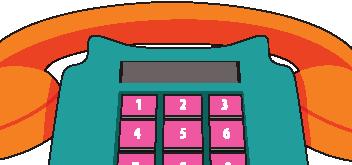




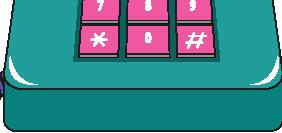

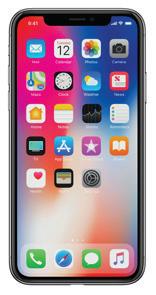
Communication is the way in which we share or exchange our ideas, thoughts, feelings and information with others. There are different methods through which people communicate with each other, for example, they may call each other on the phone or write letters. There are many types of communication, but in this chapter, we will learn about the two main types—personal communication and mass communication.
Communication between two individuals is called personal communication. The means of personal communication include letters, telephones, mobile phones, etc.
Communication between a large number of people is called mass communication. The means of mass communication are television, radio, etc.
Let us learn about them in detail.
The Indian Postal Service is the largest in the world and is known as India Post. We can send postcards, letters and parcels anywhere using postal services. We can use their services to send letters and parcels to different places in India and outside India. Money orders are also sent through postal services.

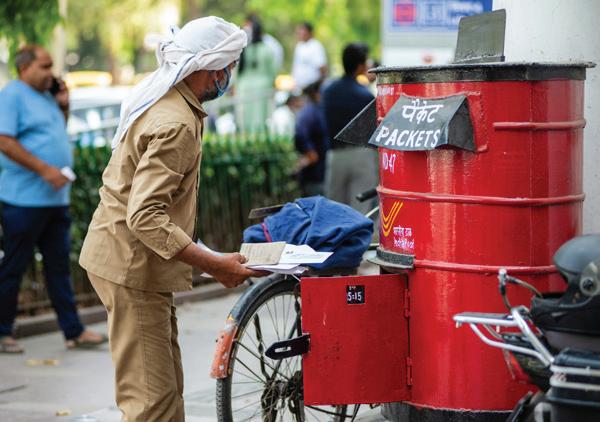
A postman collecting letters from a postbox.
Write a letter to your cousin or friend who lives in a different city. In the letter, you can write about a film you watched, any recent holiday or anything else that you would like to tell them. With the help of your parents, post this letter to your cousin/friend. Remember to write their full address and pin code before posting it.
The telephone is an important means of communication. We can talk to anyone living in India or anywhere in the world using a telephone. The STD (Subscriber Trunk Dialling) facility helps us connect across different cities within our country. On the other hand, the ISD (International Subscriber Dialling) facility helps us to connect with people living in other countries.
Communication became easy and quick with the introduction of cell phones. They are one of the most convenient way of communication, as they can easily be carried with us wherever we go. They also provide us with the Short Messaging Service (SMS)
money order: a special document which we can send to someone through post and they can get money in exchange for it convenient: easy to use

to send text messages. The modern version of cell phones or mobile phones are the smartphones. Smartphones are more advanced than cell phones and we can use them to access the internet, watch films, listen to songs, send emails, etc.
Email or electronic mail is a fast way of sending electronic messages. Internet services are used to send emails with the help of computers and smartphones. Another way of sending written messages or images instantly is through the fax system. Here, the telephones are connected to fax machines. Thus, a document sent over the telephone is called a fax.
Think and
Share any two ways in which smartphones can be used for education.
When messages or information need to be spread to a large number of people, then methods like newspapers, radio and television are used. Let us learn more about them.
These are some of the most common forms of communication used to spread information to the masses. They help us know about events around the world. Newspapers and magazines are printed in different languages.
Radio
We can listen to global and national news along with different entertainment programmes on the radio. It is specially helpful for people who cannot read, as well as those who have difficulty seeing. We can also listen to educational programmes on the radio.
Television
We can watch and listen to major events, natural disasters, films, songs, etc., on a television.
masses: a large number of people global: related to the whole world
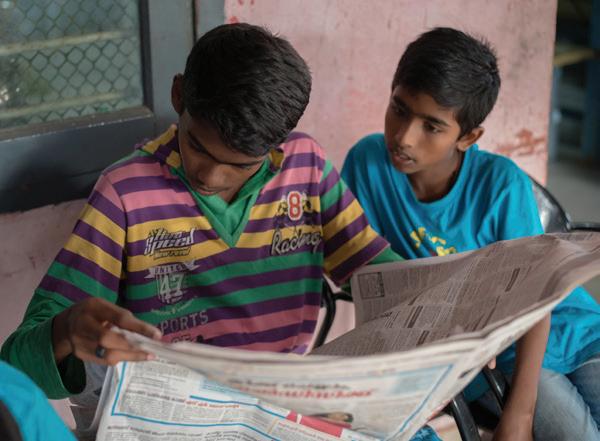
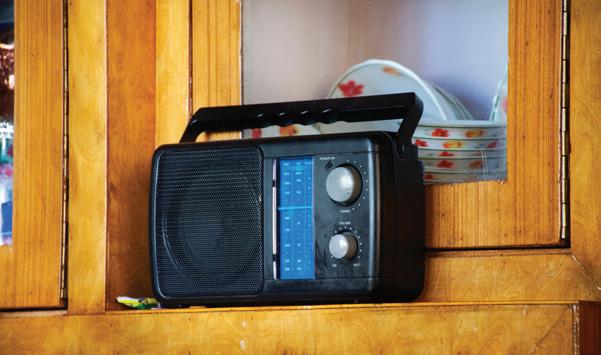



Different cultural events such as the Republic Day celebration and important sports events, such as football and cricket World Cup matches can all be seen live on television. This is possible due to satellites.
Why do you think radio became an important means of communication for people before the invention of the television?
Satellites are objects launched into space that revolve around the Earth. They help with communication, weather updates, etc. Satellites send and receive signals from mobile phones, smartphones, TVs and computers over long distances. This helps in connecting people worldwide.
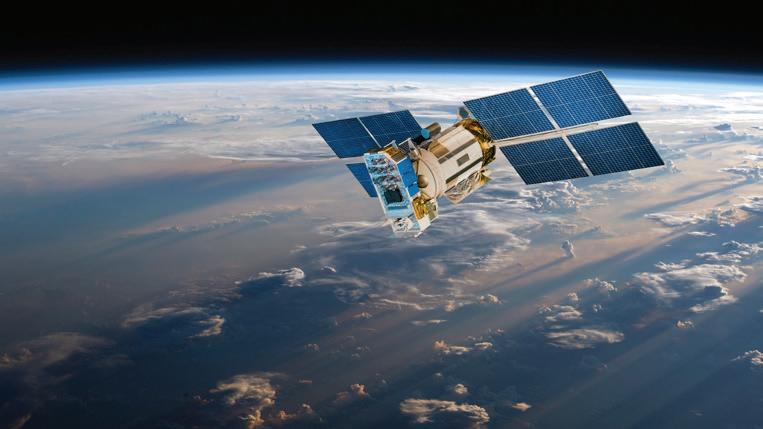
Satellite in space
Social media is a way to connect and share ideas with others using the internet. Some examples of social media platforms are Instagram, Meta and YouTube. They allow people to post pictures, videos and messages. Friends and family can comment on, like, and share things with each other on these platforms.
One must be careful and responsible when using social media. We should never share our personal information and pictures with strangers who try to talk to us online.
India’s first satellite was launched in 1975. It was named Aryabhata. The satellite was designed and built entirely in India.

communication: the way in which we share or exchange our ideas, thoughts, feelings and information with others
personal communication: communication between two people
mass communication: communication between a large number of people

Scan the QR code to learn more about how satellites are launched into space.

• Communication is the way in which we share or exchange our ideas, thoughts, feelings and information with others.
• Letters, telephones, emails, mobile phones, etc. are means of personal communication.
• Televisions, radios, newspapers and magazines are means of mass communication.
• We should use social media responsibly.
1. Tick ( ) the correct answer.
A. Which of these is a means of mass communication?
a. Newspaper
b. Letter
B. Which of these is an example of social media?
a. Radio
b. Meta
c. Telephone
c. Letter
C. Which of the following means of communication will help information reach the fastest?
a. Letter
2. Fill in the blanks.
b. Newspaper c. Email
A. helps us send messages quickly to our friends and family using the internet.
B. A is a type of communication device that lets us talk to people far away.
C. are used to share information and news with a large number of people at once.
3. Write True or False.
A. Newspapers help us to know only about the national news.
B. The STD stands for Subscriber Test Dialling.
C. A fax machine needs a telephone to work properly.
D. Satellites are an example of social media.

4. Match the following.
A. Email i. Modern version of cell phones
B. Newspaper ii. Sends television signals to Earth
C. Smartphone
D. Satellite
5. Short answer questions.
iii. Spreads news to many people at once
iv. Sends messages quickly over the internet
A. What is meant by satellite communication?
B. What is the purpose of an email?
C. Define social media.
6. Long answer questions.
A. Distinguish between personal and mass communication.
B. Explain the role of social media as a form of mass communication.
7. Picture-based questions.
Look at the given image and answer the following questions.
A. What is shown here?
B. How has it improved television as a means of mass communication?


Social media platforms are popular for staying in touch with friends and family. Explain two ways in which social media has changed the way we communicate with people.
We use the internet for many things these days, but it is important to stay safe online. With the help of your parents, make a list of any five ways in which we can stay safe online. Share your list with your classmates.





Look at the images given below. Can you identify what is shown in them?
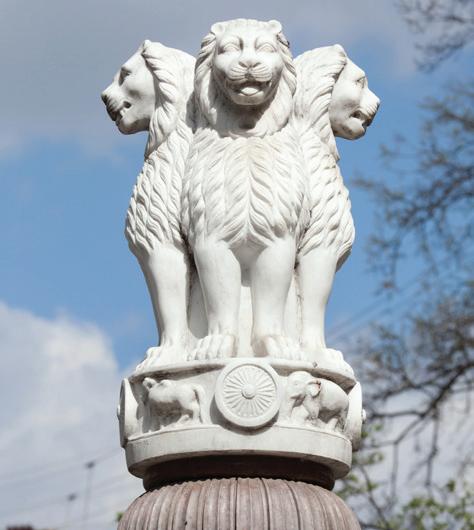
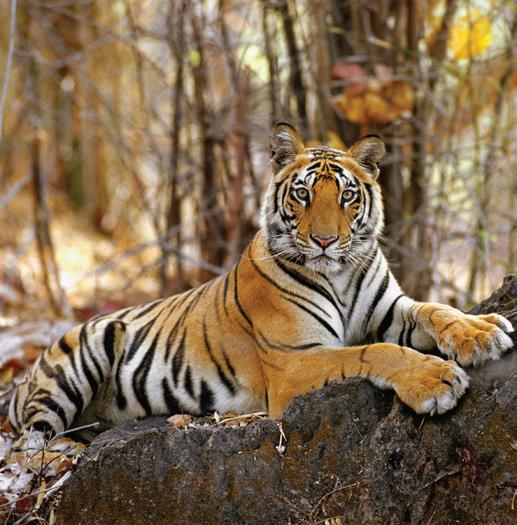
Teacher: Just as we have teachers and a principal to make rules and keep everything running smoothly at school, there are people who do the same for our country. They are part of the government.
Maya: So, does the government help to manage the country?
Teacher: Exactly! The government makes rules, solves problems and takes care of the people. Local Government
The government is a group of people who runs the country, makes laws and ensures everyone follows them to keep things organised. The people of India choose their government through elections. All Indian citizens who are 18 years of age or above can vote in these elections.
In India, there are three levels of government—the central government, state government and local governments. In this chapter, we will learn more about these governments.
The President of India is also the Supreme Commander of the Indian Armed Forces. Did You
The central government takes care of the whole country. It makes important decisions for everyone, such as building big highways, managing the army and printing money. For example, the central government decides what rules everyone in India should follow, regardless where they live. It also helps in emergencies like floods or droughts across the country.
The central government has important people like the prime minister, president, vice president and cabinet ministers. The prime minister is the head of the central government and the president is the head of the country. They work together in a building called the Parliament, where they meet to discuss, make and pass new laws.
The Parliament has two parts—the Lok Sabha and the Rajya Sabha. These people help ensure the welfare of all people of the country.
The government has three pillars—the legislature, the executive and the judiciary.
Legislature: It makes the laws for the country.
Executive: It ensures the laws are followed and supports in administration of the country.
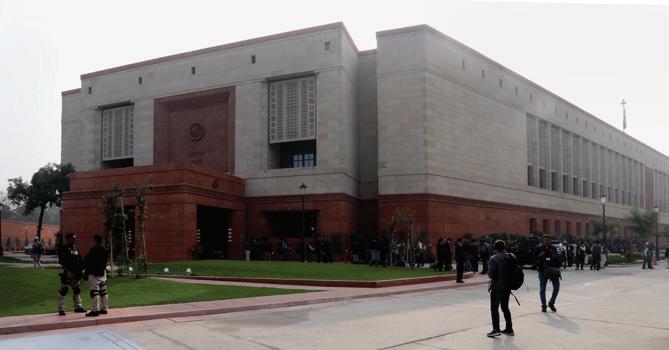
The government takes care of the country and the needs and safety of the people. How can you as children contribute to take care of our country?
Judiciary: It interprets laws and makes sure everyone receives justice.
The state government takes care of a particular state, like Maharashtra or Tamil Nadu. It makes decisions for the people living in that state. For example, the state government maintains roads, builds schools and manages hospitals in the state. Each state has its own government to look after its needs.
cabinet ministers: important ministers who form a team with the prime minister

The important people in the state government include the chief minister, the governor and other ministers. The chief minister is the head of the state government and the governor is the head of the state. They work together to solve problems and make rules for their state. These rules are discussed in the State Legislature, which functions like the Parliament for the central government. The State Legislature has two parts—the Legislative Assembly and the Legislative Council. Only a few states in India have a Legislative Council.

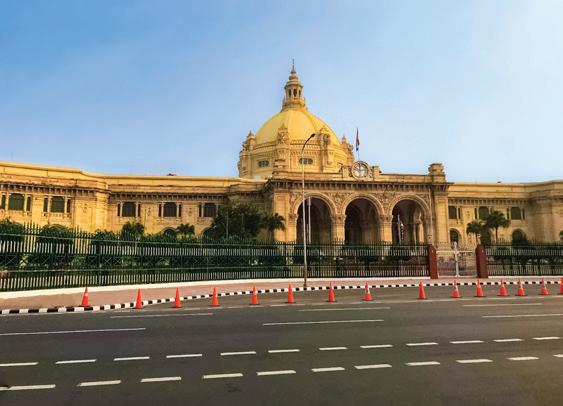
Find out the names and pictures of the following. Paste their pictures in your scrapbook and write their names under their pictures.
1. President of India
3. Governor of your state
2. Prime Minister of India
4. Chief Minister of your state
The local government takes care of villages, towns and cities. It looks after things like clean water, roads, garbage collection and streetlights in these areas. In villages, the local government is called the Gram Panchayat. It is led by the Sarpanch who helps make decisions for the village, like providing clean drinking water or building schools. In cities, the local government is called the Municipal Corporation. It maintains parks, roads and provides other civic amenities. The Municipal Council takes care of towns.
Where do you live–village, town or a big city? What kind of a local government is present where you live?

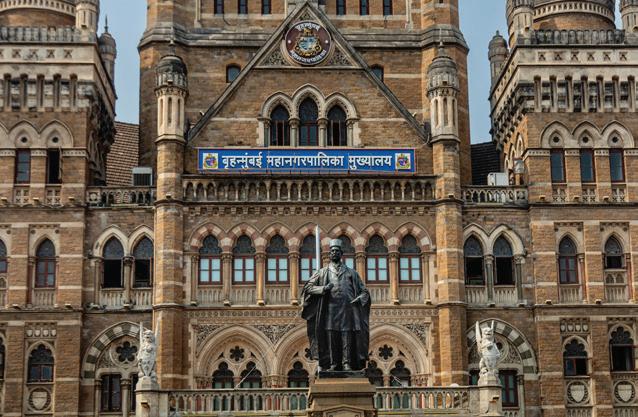
The head of a Municipal Corporation is called the mayor and the head of a Municipal Council is known as the chairperson.
The state legislative assembly building in Karnataka, known as Vidhana Soudha, is built with granite and has elements of Chalukya, Hoysala and Vijayanagara empires of Karnataka. It is a famous tourist attraction.
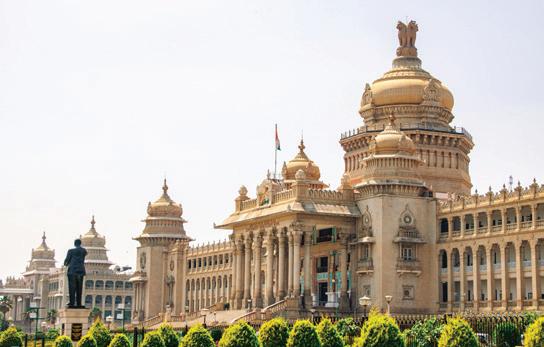
government: a group of people who run the country, make laws and ensure everyone follows them to keep things organised
central government: takes care of the whole country
state government: takes care of a particular state
local government: takes care of small areas like villages, towns and cities

Scan the QR code to learn more about the local government in India.
• The Central Government is at the national level.
• Each state in India has its own state government.
• The local government in villages is called the Gram Panchayat.
• The local government in big cities is called the Municipal Corporation.
1. Tick ( ) the correct answer.
A. Who among these is a part of the central government?
a. Prime Minister b. Municipal Council c. Chief Minister
B. Which branch of central government interprets laws?
a. Legislature
b. Executive
c. Judiciary
C. Which level of the government takes care of the needs of all the people of the country?
a. Local
b. State
c. Central

2. Fill in the blanks.
mayor chief minister municipal council sarpanch
A. Towns are looked after by the .
B. The head of the Municipal Corporation is known as the .
C. The governor, the and other ministers form the state government.
D. The head of a Gram Panchayat is called .
3. Write True or False.
A. The mayor has more powers than the Prime Minister.
B. Only some states have legislative council.
C. The Lok Sabha is part of the state government.
D. The state government can make decisions for people of other states too.
4. Match the following.
A. Head of the country i. Chief Minister
B. Head of the central government ii. Prime Minister
C. Head of a state iii. President
D. Head of a state government iv. Governor
5. Short answer questions.
A. What is a government?
B. What is the role of the legislature in the central government?
C. List any three things that the municipal corporation does in the city.
6. Long answer questions.
A. How is the state government different from the local government? Give two reasons.
B. Describe the functions of the three pillars of the Indian government.
7. Picture-based questions.
Look at the picture and answer the following questions.
A. Identify the picture.
B. Where is it located?
C. What work is done in this building?
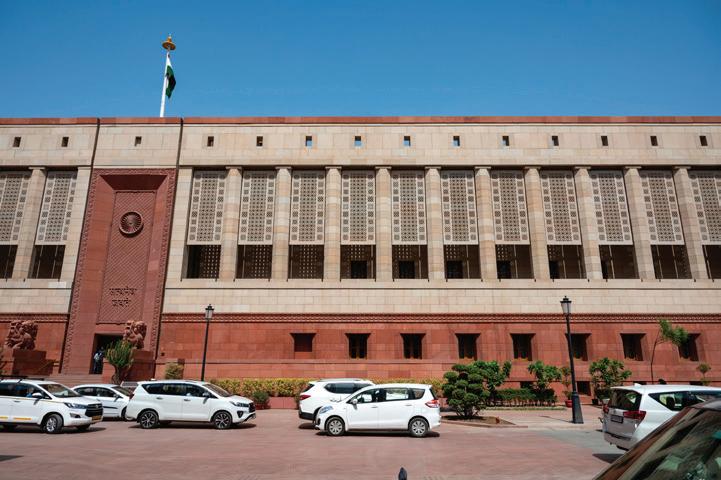

1. Why do you think it is important to have different levels of government (central, state, and local) in India? How does this help in governing a large country like ours?
2. How would life be different if there was no local government? Give two examples of challenges people might face in their day-to-day activities.

Talk to your neighbours and learn more about the functioning of the local government of your city/town/village. Follow the steps given below.
Steps:
1. Talk to three adults in your neighbourhood.
2. Ask them the two questions given in the table.
3. Fill in the table with their answers.
Q1. Two good things that the local government has done in your neighbourhood.
Q2. Two things that the local government can improve in your neighbourhood.
Neighbour 1:
Name:
Neighbour 2:
Name:
Neighbour 3:
Name:




Our Rights and Duties
Our Constitution Fundamental Rights Fundamental Duties
Directive Principles


Raju’s teacher taught the class about duties. She said, “We all have duties. Just as your parents pay your school fees, provide food and clothing to you and take care of you, in the same way, children also have duties. Children should help their parents keep the house clean, do homework on time, and speak politely.”
What are some duties that children have at school?
A constitution is a set of important rules that tells us how a country should be run. It explains how the government works, the people’s rights, and how laws are made.
The Indian Constitution is a book of rules that guides how India is run. It tells us how the government should work, what rights every person has and what our duties are. It ensures that everyone is treated fairly and helps keep the country organised. The Constitution of India is the largest
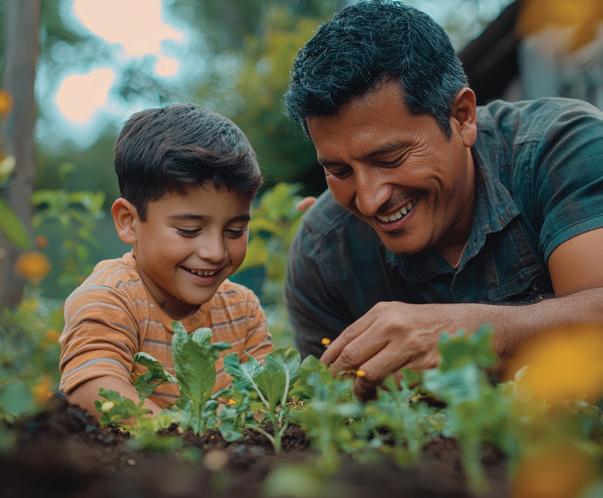
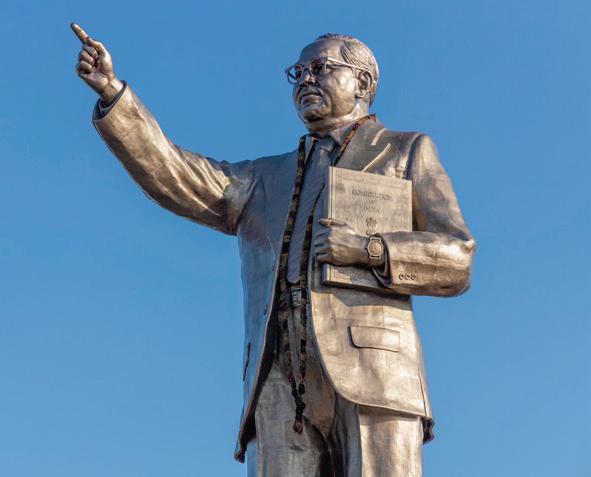
written constitution in the world. Dr Bhimrao Ambedkar is known as the Father of the Indian constitution.
The Constitution of India came into effect on 26th January 1950, which is why we celebrate Republic Day on 26th January every year.
The Preamble to the Indian Constitution is a short introduction that explains the main ideas and goals of the Constitution. It helps us understand the values and principles upon which the country is built.
Some of the key terms in the Preamble and their meanings are given below:
Sovereign: India is a free country that makes its own decisions without anyone else’s control.
Socialist: Everyone in India is treated fairly and has equal opportunities.
Secular: People in India can follow any religion they choose.
Democratic: People can choose their leaders by voting, and everyone has a say in how the country is run.
Republic: The president is the head of the country. Unlike a king or queen, the president is elected by the people.
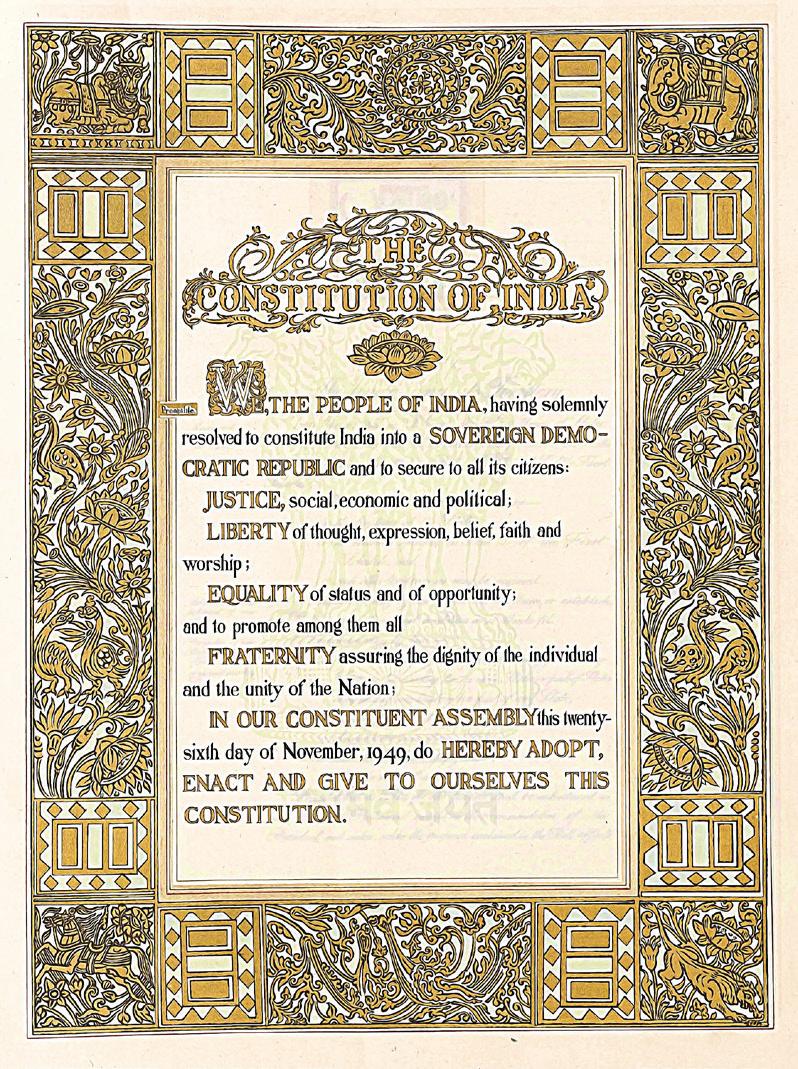
The Constitution of India lays out rules for the government (to run the country), and for the people of India. What do you think would happen if there were no rules for anyone in the country?
The Indian Constitution has given all its citizens certain basic rights called the Fundamental Rights. If the fundamental rights of any person are denied then that person can go to the courts to seek justice. These rights include:
Discuss!
Why is it important to treat everyone equally?
• Right to Equality: Everyone is treated equally and has the same rights.

• Right to Freedom: People can express their thoughts, travel freely and make their own choices.
• Right against Exploitation: No one can be forced to work without pay, in poor conditions or employ children below 14 years of age.
• Right to Freedom of Religion: People can follow and promote any religion they choose.
• Cultural and Educational Rights: People can protect their culture and set up institutions to preserve it.
• Right to Constitutional Remedies: If someone’s rights are denied, they can ask the court for help.
In 2009, the Right to Education Act was added to the Constitution. Every child between the ages of 6 to 14 years should get free and compulsory education. Did You Know?
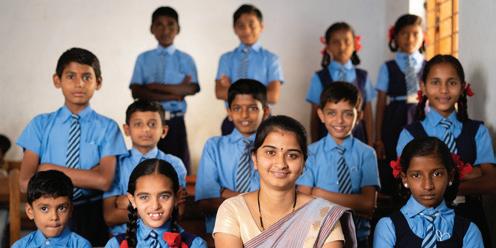

The Indian Constitution also lays down some fundamental duties that all citizens must perform. Some of them are:
• Respect the Constitution and its principles.
• Respect the national anthem and the national flag.
• Keep the country united.
• Defend the country when needed.
• Protect and preserve our public property.
• Treat all Indians as equals.
• Protect the environment.
Tick (✓) the correct statements.
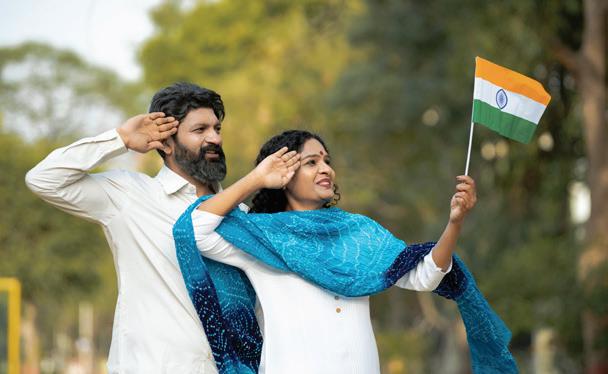
We must respect our national flag.
As citizens of India, we must protect and preserve our environment. What are some of the ways by which we can help in protecting the environment and keeping it clean?
1. The Indian Constitution gives us eight fundamental rights.
2. Jawaharlal Nehru is the father of the Indian Constitution.
3. We must protect the public property of India.
4. Republic Day is celebrated on 15 August every year.

The Constitution of India also lays down some guidelines for the government to ensure the welfare of all the people of India. These are known as directive principles. Some of them are:
• Provide proper living conditions to all people.
• Provide work to everyone.
• Take steps to stop the rich from taking advantage of the poor.
• Protect the interests of the weaker groups in our society.
• Provide compulsory education to children up to the age of 14 years.
The original Constitution of India was handwritten by Prem Behari Narain Raizada. It was completed on 26 November 1949. It had 251 pages and it weighed 3.75 kg.
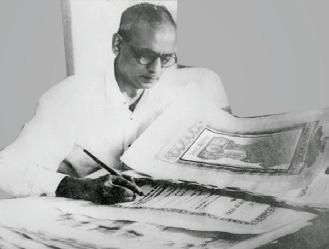
Prem Behari Narain Raizada
constitution: a set of rules that tells how a country should be governed fundamental rights: certain basic rights given by the Constitution of India to all Indian citizens directive principles: guidelines in the Indian constitution for the government to ensure the welfare of all the people of India

Scan the QR code to learn more about the Constitution of India.
• The Constitution of India came into effect on 26th January 1950.
• The Preamble to the Indian Constitution is a short introduction that explains the main ideas and goals of the Constitution.
• The Indian Constitution has given all citizens of India certain basic rights called the Fundamental Rights.
• The Indian Constitution has laid down fundamental duties that all citizens must perform.
• The Constitution of India lays down directive principles which are guidelines for the government to ensure the welfare of all the people of India.

1. Tick ( ) the correct answer.
A. Who is the Father of the Indian constitution?
a. Ambedkar
b. Gandhi
B. How many fundamental rights are there?
a. 5
b. 6
c. Nehru
c. 7
C. Right to Education has made education compulsory up to which age?
a. 12 years
b. 10 years
D. 26 January is celebrated as which day in India?
a. Republic Day
b. Gandhi Jayanti
2. Name the Fundamental Rights.
A. Children below 14 years of age cannot be employed.
B. Everyone is free to follow a religion of their choice.
c. 14 years
c. Independence Day
C. People can set up educational institutions to preserve and promote their culture.
D. People can go to the courts if someone violates their rights.
3. Write True or False.
A. India became independent on 26 January 1950.
B. Every citizen of India is free to live in any part of the country.
C. All the citizens of India should be treated equally.
D. It is our duty to distribute free food to everyone.
4. Match the following.
A. Sovereign i. Everyone in India is treated fairly and has equal opportunities.
B. Socialist ii. People in India can follow any religion they want.
C. Secular iii. People choose their leaders by voting.
D. Democratic iv. India is a free country that makes its own rules.
E. Republic v. The president is elected unlike a king or queen.
5. Short answer questions.
A. Why is India called a democratic country?
B. What is a constitution?
C. What is meant by the Preamble to the Indian constitution?
6. Long answer questions.
A. What are directive principles? Write any four of them.
B. Write four fundamental duties of a citizen of India.
7. Picture-based questions.
Look at the picture and answer the following questions.
A. What is happening in this picture?

B. Is it against any fundamental right? Explain.


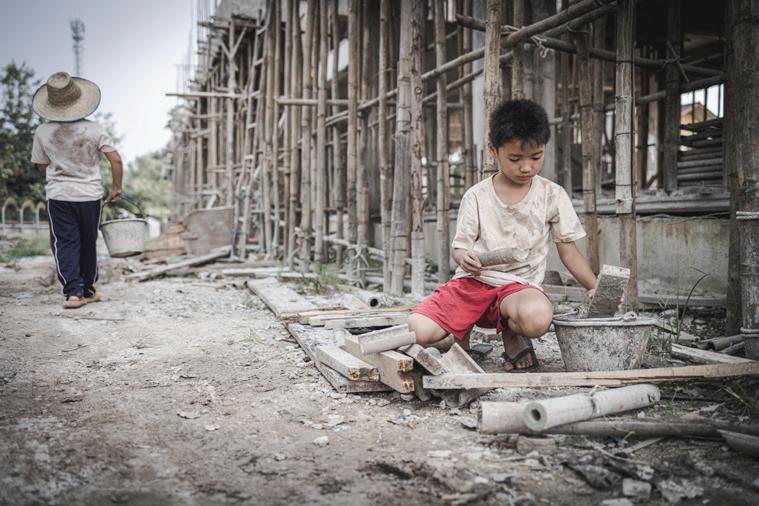
Shyam goes for a morning walk every day in a nearby park. He notices that many people throw garbage around, making it difficult for others to enjoy in the park. As a responsible citizen, which of the Fundamental Duties could Shyam follow to help keep the park clean, and how can he encourage others to do the same? Give two points for each.

With your classmates, make a constitution for your class. Divide the class into groups of four students each. In your group, discuss and create your own “Classroom Constitution.” Each group will come up with three rights and three duties. After that, discuss your constitution with the other groups. Then, together, finalise a single constitution by taking good points from each. Follow the "Constitution" every day at school.



Our Culture and Heritage
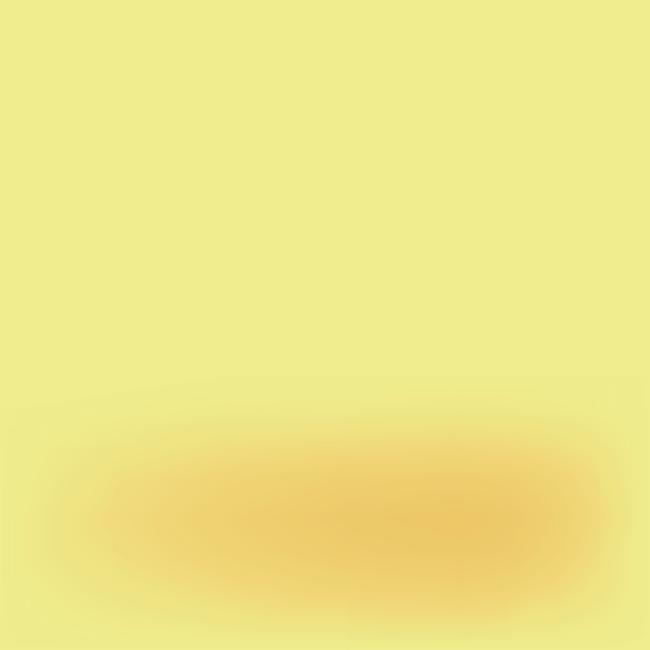
Languages
Paintings and Handicrafts Dresses
Dance, Music and Monuments

Get Set

India is famous for its festivals and rich culture. Which festivals are being celebrated in these pictures?
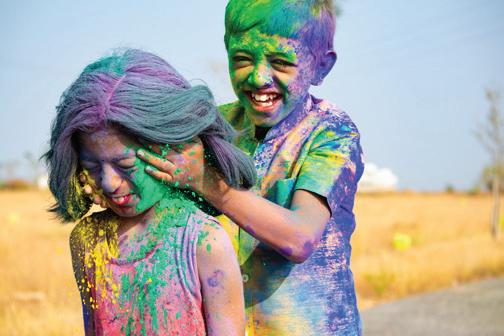

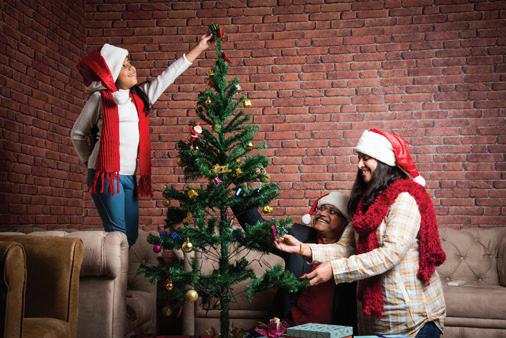
India’s culture and heritage are rich and diverse, shaped by thousands of years of history. From colourful festivals to ancient monuments, each part of India reflects its unique characteristics. In this chapter, we will learn about India’s culture and heritage in detail.
culture: the way of life of a group of people heritage: traditions, values and monuments passed down from previous generations

India officially recognises 22 languages. Hindi is the official language of India and English is the second official language. This means that most government work is conducted in these languages. One language can be spoken in different ways too and these ways are called dialects. The style of in which a language is written is referred to as its script. Most languages are written from left to right. However, Urdu, Sindhi and Kashmiri are written from right to left. Some of the languages spoken in India are Assamese, Bengali, Marathi, Odiya, Telugu, Urdu and Kashmiri.
Scripts of some languages of India
Find out the names of all the 22 recognised languages in India and make a list of them in your notebook.
Talk about any language(s) that are spoken in slightly different ways in different regions of the country.
India’s traditional paintings are known for their vibrant colours and intricate designs. Famous wall paintings can be found in the Ajanta and Ellora caves, depicting ancient stories. Miniature paintings, popular in Rajasthan and during the Mughal era, showcase detailed scenes of royal life. Other traditional art forms include Madhubani from Bihar and Warli from Maharashtra, which are still practised today. They reflect India’s rich artistic heritage.
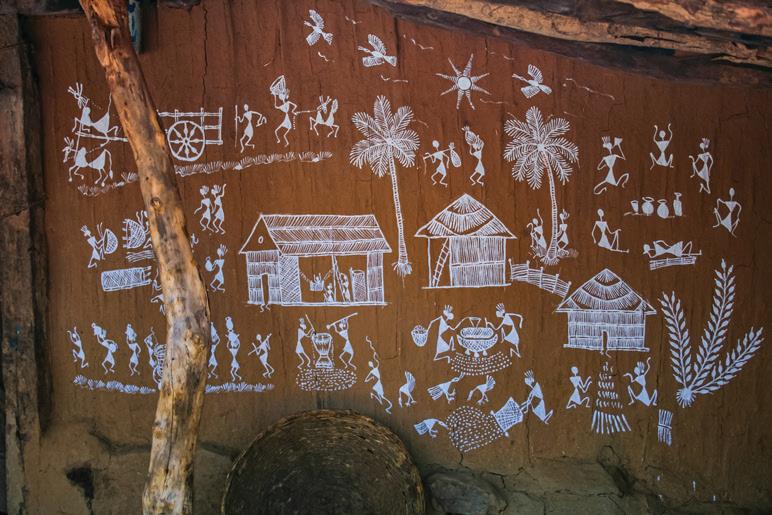

intricate: very fine
miniature: very small in size

Warli painting is a tribal art form which shows scenes from daily lives of people.
India’s handicrafts are famous all over the world. Bamboo and cane crafts from the northeastern states are used to create baskets, furnitures and decorative items. Chikankari from Lucknow is known for its intricate stitching on fabrics. Terracotta horses from West Bengal, puppets from Rajasthan, pottery from Khurja, Kashmiri carpets and Kanjivaram silk from Tamil Nadu are other famous examples. These crafts reflect India’s rich culture and heritage passed down through generations of skilled artisans.
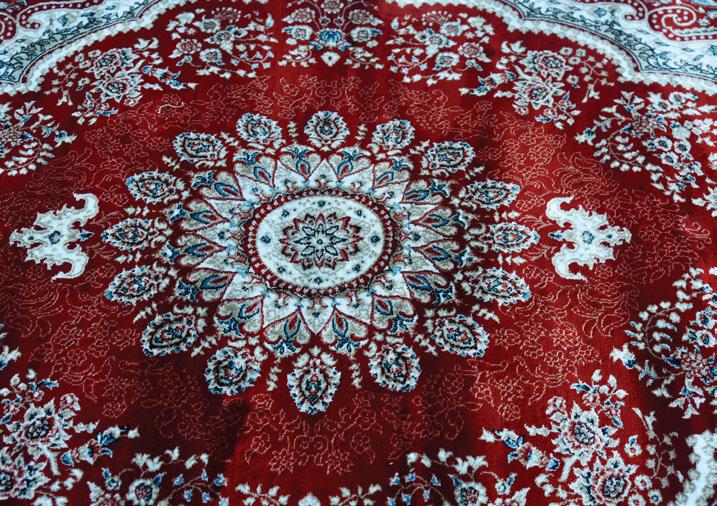


India’s traditional dresses are diverse and colourful. In North India, women wear sarees, and men wear kurta-pyjamas. In Punjab, women wear salwar-kameez, and men wear turbans. In Gujarat and Rajasthan, women wear vibrant ghaghras. Men in Rajasthan wear dhotis and colourful pagris. South Indian women wear silk sarees like Kanjivaram, and men wear lungis or dhotis. Women wear Nauvari sarees in Maharashtra. In Assam, women wear traditional mekhela-chador, and men wear dhotis with kurtas. In Kashmir people wear colourful phirans made of wool to keep themselves warm. Chikankari dresses are famous all over the world and are traditionally worn in Lucknow.
Each state’s traditional dress reflects its unique traditions and cultural heritage.
Within each state, there is often a difference in how people dress in cities compared to villages.
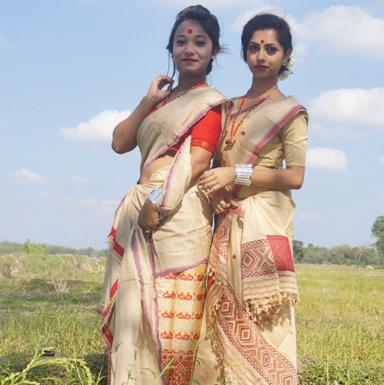
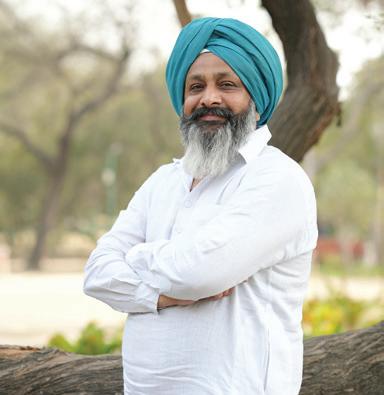
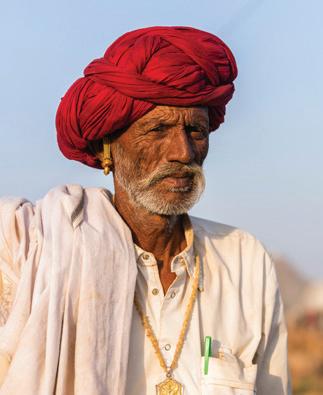
Discuss the traditional dresses worn in your state on special occasions and festivals.
Tick ( ) the correct statements and cross (û) the incorrect ones.
1. Phirans are worn in Rajasthan.
2. Pottery from Khurja is famous all over the world.
3. Chikankari is from Tamil Nadu.
4. Madhubani paintings are from Maharashtra.
Classical dances in India originated in temples as a form of worship and later became popular in the royal courts. Today, many people enjoy these dances. Some of the famous classical dancers include Sonal Mansingh, Mallika Sarabhai, and Pandit Birju Maharaj. Some well-known classical dance forms are Bharatanatyam from Tamil Nadu, Kathak from Uttar Pradesh, Kathakali from Kerala, Kuchipudi from Andhra Pradesh and Telangana, Manipuri from Manipur, Odissi from Odisha, and Sattriya from Assam.
A few examples of folk dances from different regions of India are Bhangra from Punjab, Garba from Gujarat, Ghoomar from Rajasthan and Bihu from Assam.

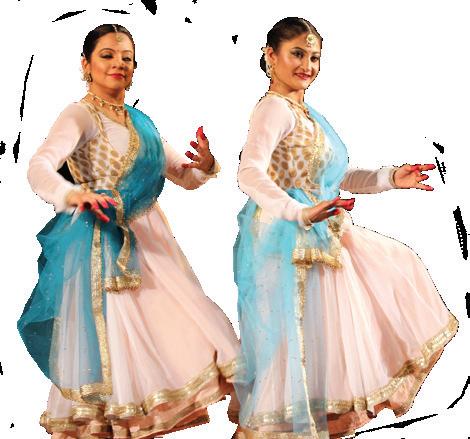

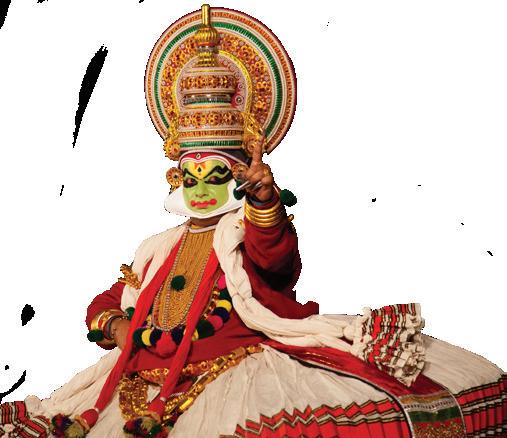
The music in India has also been central to temple rituals and royal ceremonies. Some popular folk music styles include Bihugeet from Assam, Baul Sangeet from West Bengal, Bhavageethe from Karnataka, and Pandavani from Chhattisgarh. Classical music is divided into two main types: Hindustani (from the North) and Carnatic (from the South) traditions based on its origin. Some prominent Hindustani singers include Shubha Mudgal and Ustad Rashid Khan, while Ranjani and Gayathri, along with Shankar Mahadevan, are notable Carnatic singers. Indian classical music is also


distinguished by its use of diverse musical instruments such as the flute, sitar, tabla, veena and mridangam. All these different dance and music forms make India diverse and rich in culture. We must respect all cultures and diversity.
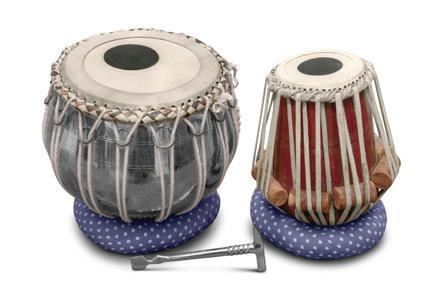
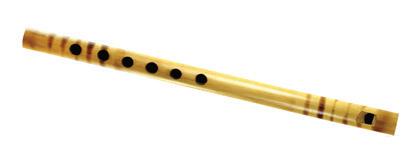
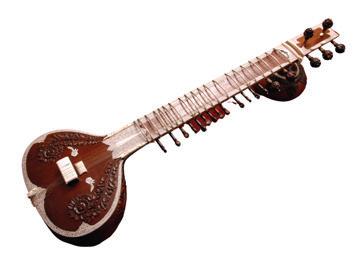
India has many different types of monuments that showcase the diversity of its religions, cultures and historical periods. One of the most famous is the Sanchi Stupa, built by Emperor Ashoka. India is also known for its beautiful temples such as the Shore Temple in Mahabalipuram, near Chennai. The Kailasha or Kailashanatha temple is the largest rock-cut temple in the world. It is at the Ellora Caves near Aurangabad, Maharashtra. The Sun Temple at Konark, Odisha is famous all over the world because it is built like a giant chariot drawn by seven horses and has 12 wheels on each side.
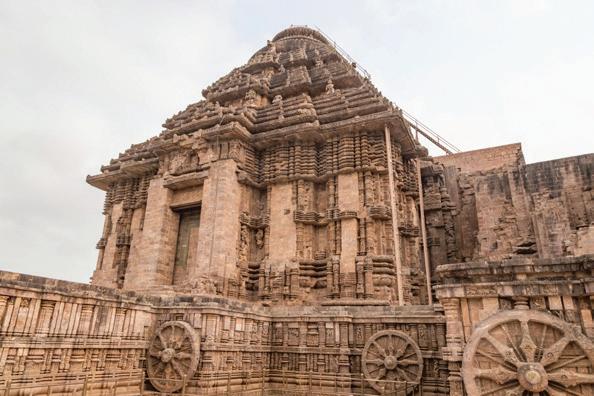
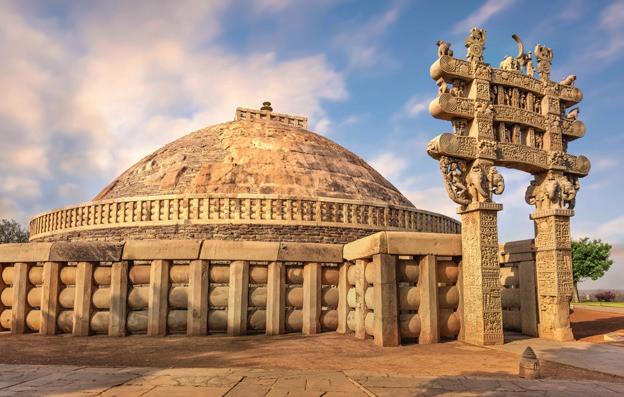

The Mughals brought a unique style of architecture to India. The Taj Mahal, built by Shah Jahan, is a famous example with its tomb and minarets. Other notable Mughal monuments include Fatehpur Sikri, built by Akbar, the Red Fort and the Jama Masjid. These monuments tell us about our rich cultural past. These monuments must be preserved as part of our heritage and national pride.
The Portuguese and British also constructed many important buildings during their rule. Some notable examples include the Rashtrapati Bhavan in Delhi and the Victoria Memorial in Kolkata. In more recent times, modern monuments such as the Akshardham Temple, Vidhana Soudha in Bengaluru and the Vidhan Bhavan in Mumbai have also become famous tourist spots.

Collect pictures of any 5 Indian monuments. Paste their pictures in your scrapbook. Write where they are located and who built them.

Madhubani paintings originated in the Mithila region of Bihar. Traditionally, they were made using colours from nature. The colours were extracted from flowers, leaves and wild berries. Today, Madhubani paintings are famous all over the world and are also exported from India. A Madhubani painting
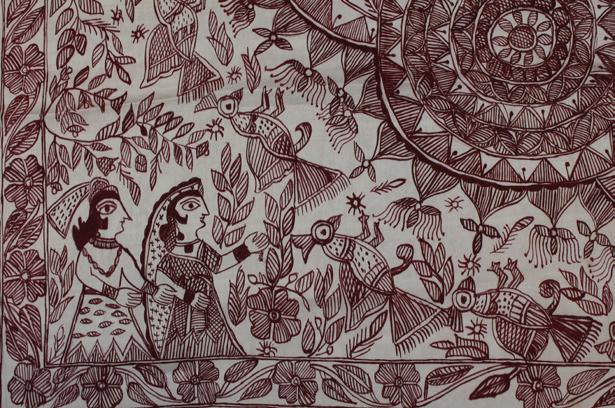
dialect: the way a language is spoken in a specific area or by a particular group of people script: a set of symbols used to write a language architecture: the art and science of designing and building structures like houses, schools and bridges monuments: large, often historic structures or buildings created to honour or remember important people, events, or cultural heritage

Scan the QR code to know about artforms from Tamil Nadu.
• There are 22 languages that are officially recognised in India. Hindi and English are the official languages of India.
• India’s traditional paintings are known for their vibrant colours and intricate designs.
• Many different traditional dresses are famous in India. Each state’s traditional dress reflects its traditions and cultural heritage.
• Classical dance originated in temples as a form of worship and later evolved in royal courts. Music in India has been central to temple rituals and royal ceremonies.
• India has many different types of monuments. These monuments are symbols of our diversity, religions, cultures and historical periods.

1. Tick ( ) the correct answer.
A. How many languages are recognised in India?
a. 21
b. 22
c. 20
B. Ghaghra is the traditional dress of .
a. Rajasthan
b. Maharashtra c. Gujarat
C. The Sanchi Stupas were built by .
a. Emperor Akbar
b. Emperor Ashoka c. Shahjahan
D. Which script is written from right to left?
a. Manipuri
2. Fill in the blanks.
b. Kashmiri c. Malayalam
Carnatic Akbar Classical West Bengal Lungi
A. Fatehpur Sikri was built by .
B. Shankar Mahadevan is a singer.
C. Baul Sangeet is the folk music of .
D. Sonal Mansingh is a famous dancer.
E. is worn in southern part of India.
3. Write True or False.
A. Odissi is a form of classical dance.
B. The Victoria Memorial is situated in Delhi.
C. Classical dance is performed during the harvesting of crops.
D. English is the second official language of India.
4. Match the following.
A. Garba i. Punjab
B. Ghoomar ii. Assam
C. Bihu iii. Rajasthan
D. Bhangra iv. Gujarat
5. Short answer questions.
A. What are the different types of classical music in India?
B. Name two important monuments built by the Portuguese and the British.
C. Define handicraft. Name any four important handicrafts of India and also state where they are made.
D. What are the folk dances of Gujarat, Rajasthan and Assam called?
6. Long answer questions.
A. Write a note on the languages in India. Give examples of any five officially recognised languages of India.
B. Describe the two types of dance forms in India? Give two examples of each.
7. Picture-based questions.
Look at the picture and answer the following questions.
A. What is the name of this dance?
B. Which state is known for this traditional dance form?
C. When is it performed?

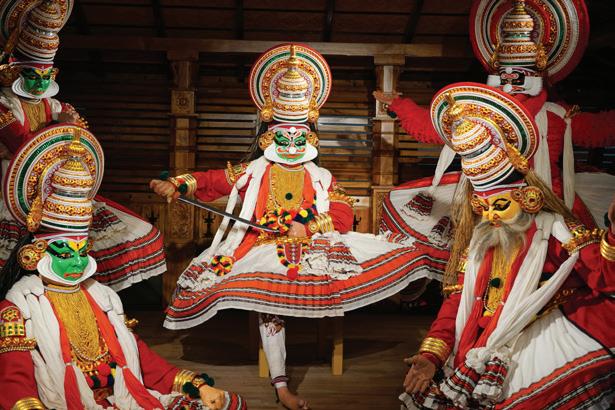
Why do you think English was chosen as the second official language by the Government of India?


With the help of your teacher organise a 'Special Dress Day' for your class. Choose any traditional dress of India and wear it to school on this day. Take turns to explain about the traditional dress you are wearing. For lunch, you may eat traditional food that you and your classmates can bring from home.






Some of the people of India are famous for the work they did for the people. Find the names of the famous people given below in the word grid and circle them.
1. GANDHI
2. KALAM
3. AKBAR
4. ASHOKA
In this chapter, we shall explore the lives of some great achievers of India, learn about their inspiring journeys and how they have made our country proud.
Mahatma Gandhi
Mahatma Gandhi, the Father of the Nation, was born on October 2, 1869, in Porbandar, Gujarat, India. His full name is Mohandas Karamchand Gandhi.
He studied law in England and later became a leader in India’s struggle for independence from British rule. Mahatma Gandhi believed in nonviolence and used peaceful methods like fasting, protests and discussion to fight against the British. He led peaceful movements, such as the Non-Cooperation Movement, the Swadeshi Movement, the Salt March and the Quit India Movement. He played a major role in achieving India’s freedom in 1947. Mahatma Gandhi’s teachings of truth, peace and kindness continue to inspire people around the world.
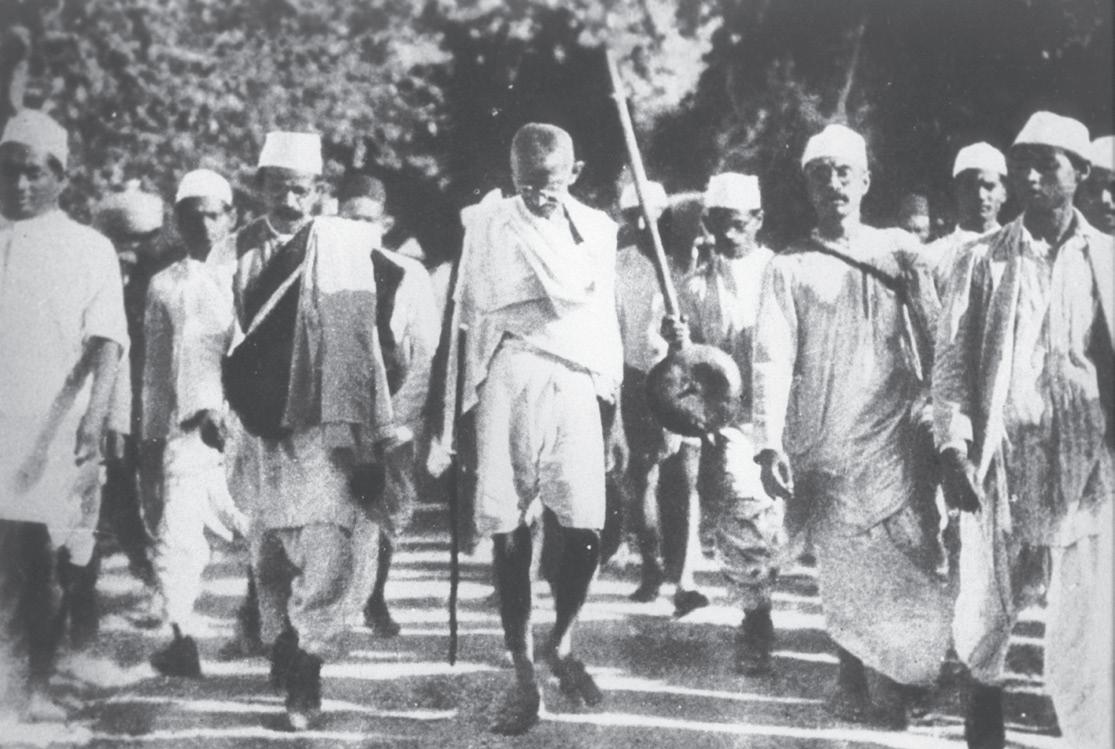
Dr A.P.J. Abdul Kalam is one of India’s most respected scientists and leader. He was born on October 15, 1931 in a small town in Tamil Nadu. Coming from a simple background, he studied aerospace engineering and later played an important role in India’s missile and space programs. It earned him the nickname ‘the Missile Man of India’.
In 2002, he became the president of India. He aimed to use science and technology to transform India into a developed nation. Known for his simplicity and love for teaching, Dr Kalam inspired millions of young people to dream big. His life and achievements make him a true national hero.

protests: an action that shows that you do not like or approve of something aerospace engineering: the study of making airplanes and spacecrafts missile: a powerful weapon that can be sent long distances through the air space program: a plan by a country to explore the universe and learn about space


Dr Sarvepalli Radhakrishnan was a great Indian scholar and teacher who later became the second president of India. He was born on September 5, 1888, in Tamil Nadu. He was known for his deep understanding of Indian culture and religion and wrote many books on these subjects. He believed that education is the key to building a strong nation. His birthday is celebrated as Teacher’s Day in India.
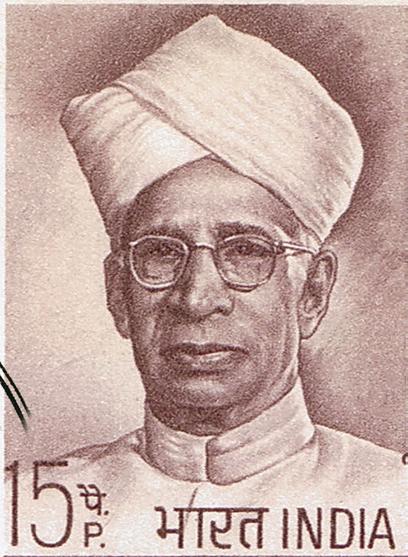
Make a scrapbook of famous leaders of India other than the ones you just studied. You can take help from the internet. Paste their pictures and write a few lines about them. Do and Learn

Ashoka, also known as Ashoka the Great, was a famous ruler of the Mauryan Empire in ancient India. He ruled nearly all of India. He was the grandson of Chandragupta Maurya. Ashoka was a great warrior who won many battles, but later he became a follower of Buddhism. He promoted Buddha’s message of non-violence, love and kindness. Ashoka built tall pillars with messages about peace and good behaviour across his empire. He is remembered for his efforts to spread peace and Buddhism, and his rule helped promote kindness throughout his empire.
The National Flag of India has the Ashoka Chakra at the centre, which has 24 spokes.

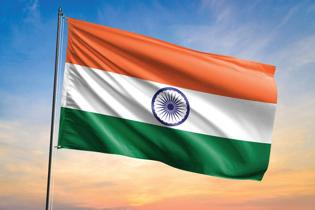
Flag
Akbar was famous ruler of the Mughal Empire. He became a ruler at a young age, after his father, Humayun's death. He welcomed scholars and leaders from different religions
scholar: a person who has a lot of knowledge about a subject
to his court. He supported art, music and literature, making his court a centre of cultural activities. The Mughal Empire grew strong under his rule. Akbar respected all religions. He tried to create a new belief system called “Din-i-Ilahi,” which means the “Religion of God.”
Akbar’s full name is Abū al-Fatḥ Jalāl al-Dīn Muḥammad Akbar. He was the third emperor of the Mughal Empire.

Krishnadevaraya was a mighty ruler of the Vijayanagara Empire in South India from 1509 to 1529. He expanded his kingdom through successful battles and was known for his fair and just rule. Under his reign, art, literature and architecture flourished. He built beautiful temples and supported poets and scholars. Krishnadevaraya is remembered as one of the greatest kings in Indian history for his strong leadership and cultural achievements.
Write True or False for the statements below.
1. Akbar did not respect all religions.
2. Ashoka became a follower of Buddhism.
3. Krishnadevaraya was a brave ruler from South India.
Some great people have brought positive changes in society by ending evil practices. These people are known as social reformers. The changes that social reformers bring to improve society are called reforms.
Raja Ram Mohan Roy was a great social reformer in India during the early 19th century. He worked hard to end harmful practices such as Sati, where widows were
architecture: the design and process in which a building is made widow: a woman whose husband has died

forced to die with their husbands. He also promoted education and women’s rights. Raja Ram Mohan Roy is known as the “Father of Modern India” because of his efforts to bring about positive changes in society and support freedom of thought.
Kabir was a famous poet and saint from India who lived in the 15th century. He wrote poems that spoke about love, equality and God. Kabir’s teachings brought together ideas from both Hinduism and Islam, promoting unity and peace. His poems are still popular today for their deep wisdom and simplicity.
Ramabai Ranade was a leader for women’s rights in India. Born in 1863, she dedicated her life to improving the lives of women through education and social reforms. She started several schools and organisations to support women’s education. Ramabai was also one of the first women to actively work towards gender equality in India, inspiring many others to follow her path.

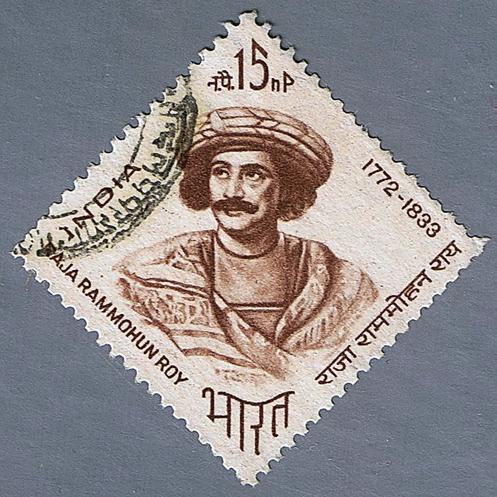
Kabir’s teaching in the form of a poem, or doha.

The Ashokan pillars are ancient stone columns built by Emperor Ashoka over 2000 years ago. These pillars are special because they have carvings of important messages and the lion emblem, which is India’s national symbol.
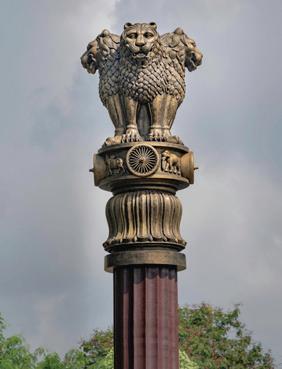
Buddhism: the religion that is based on the teachings of Gautam Buddha social reformers: great people who brought a change in society by ending evil practices reforms: the changes social reformers bring to improve society sati: an evil social practice in ancient India in which widows were forced to die when their husbands died

Scan the QR code to learn more about Mahatma Gandhi.
• Mahatma Gandhi is an important leader of India's freedom struggle.
• Dr A.P.J. Abdul Kalam is known as the ‘Missile Man of India’.
• Dr Sarvepalli Radhakrishnan was a great Indian scholar. He was also the second president of India.
• Ashoka was a famous ruler of the Mauryan Empire.
• Akbar was a famous ruler of the Mughal Empire.
• Krishnadevaraya is remembered as one of the greatest kings in Indian history.
• Raja Ram Mohan Roy is known as the ‘Father of Modern India’.
• Kabir was a famous poet and saint from India who lived in the 15th century.
• Ramabai Ranade was a leader for women’s rights in India.
1. Tick ( ) the correct answer.
A. Which of the following people was a social reformer?
a. Ram Mohan Roy b. Mahatma Gandhi c. Ashoka
B. Kabir used which method to spread his messages?
a. Poems b. Speeches c. Public meetings
C. Who was the second president of India?
a. A.P. J. Abdul Kalam b. S. Radhakrishnan c. Ram Mohan Roy
2. Fill in the blanks.
Humayun Vijayanagara Empire Tamil Nadu Mauryan Empire
A. Dr A.P.J. Abdul Kalam was born in .
B. Akbar was the son of .

C. Krishnadevaraya was a mighty ruler of the .
D. Ashoka was a famous ruler of the .
3. Write True or False.
A. Ashoka spread the message of Buddhism to several parts of the country.
B. Non-cooperation movement was started by Ashoka.
C. Ram Mohan Roy worked to abolish the practice of Sati.
4. Match the following.
A. Ashoka
B. Gandhi
C. Akbar
D. A.P.J. Abdul Kalam
5. Short answer questions.
i. Used nonviolent methods to protest
ii. Spread Buddha's teachings
iii. Started Din-i-Ilahi
iv. Studied aerospace engineering
A. Name any two movements started by Mahatma Gandhi to protest against the British rule.
B. What was Akbar’s thinking on religion?
C. Write a short note on the ‘Missile Man of India’.
6. Long answer questions.
A. Who was Krishnadevaraya?
B. Why do you think social reforms are helpful in society’s welfare and upliftment?
7. Picture-based questions.
Look at the pictures and answer the following questions.
A. Which of them worked to end the practice of Sati?
B. Which of them worked for the development of schools for women?
C. Are they leaders, social reformers or rulers?
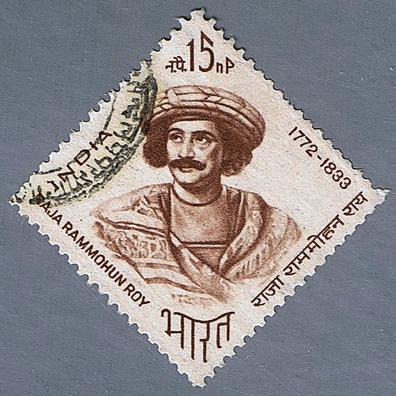
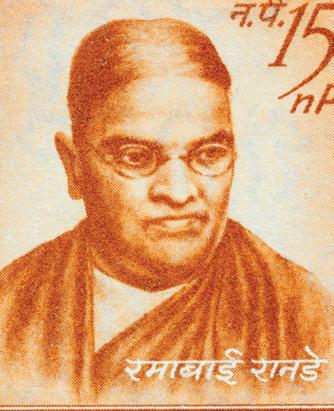


Many great leaders and social reformers used methods like peaceful protests and spreading messages through poems to fight against evil practices. Do you think these methods are still useful in today’s world? Give two reasons.
Choose any one great leader, ruler or social reformer who inspires you the most. You may choose someone you have recently studied or another individual who has made a significant impact in your life. Write a short paragraph describing how his/her qualities and teachings inspire you and how you can implement their teachings in your life. Read the paragraph aloud in the class.

Objective: Each student will select an Indian state to research, focusing on its languages, dance forms and monuments. Students will create a poster to present their findings.
Materials Needed: Research materials (books, the internet, printed newspaper articles), notebook, markers and sticky notes

Step 1: Select any state: Choose any one Indian state to research upon.
Step 2: Research: Find out the following things about your chosen state:
Languages: Identify the languages that are spoken in the state.
Dance and Music: Research on the traditional dance forms and music of the state.
Monuments: Find out about the important monuments of the state.
Step 3: Create a Poster: Design a poster on your state that includes your findings about the languages spoken, dance forms and monuments.
Project Output: Now you have an informative poster on a state of your choice. Present it in your class.
Final Outcome: This hands-on project will help you learn more about the culture and heritage of different Indian states.
To be read aloud and explained in the mother tongue by the teacher, as needed.
Read the paragraph and answer the questions that follow.
In the state of Milindpur, there was a big meeting where people discussed how to make their town better. They realised that India has a set of rules and leaders to help everyone live happily and fairly. So, they looked at how India’s government works. They learnt that in India there is a president, who is the head of the state; a parliament, where group of people discuss rules and regulations; and the courts, which help to solve problems. They also discovered that India has book called the Constitution of India which is a set of rules for everyone and it also talks about the rights and duties of the people and the government. The people of Milindpur decided to use these ideas to create their own set of rules, making sure everyone has rights and follows rules to stay happily together.
1. What is the purpose of India’s constitution?
a. To describe the types of food people can eat.
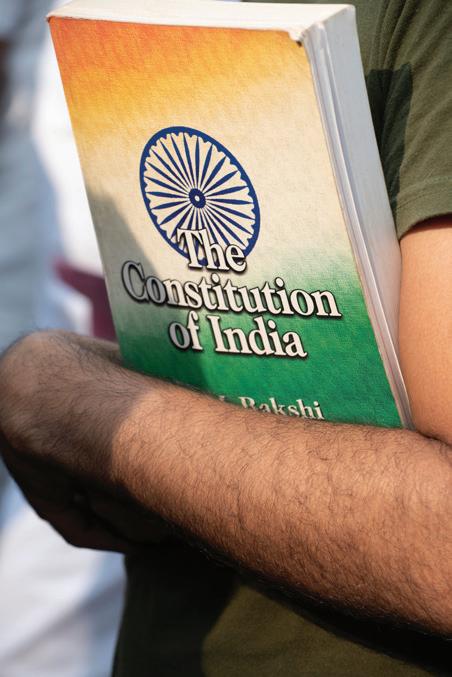
b. To tell everyone how to work together and what rights they have.
c. To provide instructions on building houses.
2. Why is the parliament important in India’s government structure?
a. It organises local festivals and events.
b. It helps to solve personal problems between people.
c. It creates new rules for the country.
3. The people of Milindpur wanted to make their town better. How would understanding the way India’s government works help them? Write two points.
4. What would you advise the people of Milindpur do in order to fulfill their duties per the Constitution of India.
To be read aloud and explained in the mother tongue by the teacher, as needed.

Name of the Student:
Time: 1 Hour
Total Marks: 40
1 Tick () the correct answer. (1 × 5 marks)
A Which of the following will be most useful for rescuing people during floods?
a Train
c Ship
b Helicopter
d Car
B Which of these is a means of mass communication?
a Newspaper
c Letter
b Telephone
d Fax
C Which ruler spread the message of Buddhism to different parts of the country?
a Ashoka
c Akbar
b Krishnadeva Raya
d Humayun
D Ghaghra is the traditional dress of ____________.
a Tamil Nadu
c Rajasthan
b West Bengal
d Maharashtra
E Who among these is a part of the central government?
a Mayor
c Municipal Council
b Prime Minister
d Chief Minister
2 Fill in the blanks. (1 × 5 marks) West Bengal Newspapers Mumbai Vijayanagara Empire 14
A The first railway line in India began in 1853 between and Thane.
B Education is compulsory for children up to the age of .
C Baul Sangeet is the folk music of .
D The are used to share information and news with a large number of people at once.
E Krishnadeva Raya was a mighty ruler of the .
3 Write ONE word for the following. (1 × 5 marks)
A A set of rules that tells how a country should be governed.
B The way a language is spoken in a specific area or by a particular group of people.
C A group of people who run the country.
D The religion that is based on the teachings of Gautam Buddha.
E A set of symbols used to write a language.
4 Write True or False. (1 × 5 marks)
A India became independent on 26 January 1950.
B STD stands for Subscriber Trunk Dialling.
C Metro trains only run underground.
D Ram Mohan Roy worked to abolish the practice of sati.
E The Lok Sabha is part of the state government.
5 Picture-based questions. (1 + 1 + 2 marks)
A Identify this building.
B Where is it located?
C What work is done in this building?

6 Answer the following questions in short. (2 × 4 marks)
A Name two inland waterways of India.
B Why is India called a democratic country?
C Name any two movements started by Mahatma Gandhi to protest against British rule.
D What is social media?
7 Answer the following questions in detail. (4 × 2 marks)
A Write four fundamental duties of a citizen of India.
B Describe the two types of dance forms in India. Give two examples of each.


All the countries in the world use different forms of money, called currency, to buy and sell things. These currencies are widely accepted in international trade. Let us learn about some of them.

The Indian Rupee (INR) is the official currency of India. It is used for all money-related matters within the country. The Reserve Bank of India (RBI) controls it. The symbol used for the rupee is ‘₹’. The notes have many pictures that represent the country’s culture, heritage and notable personalities.



The United States Dollar (USD) is the official currency of the USA. The symbol used for the dollar is ‘$’. Different dollar notes have pictures of different presidents and other political figures of the United States of America.

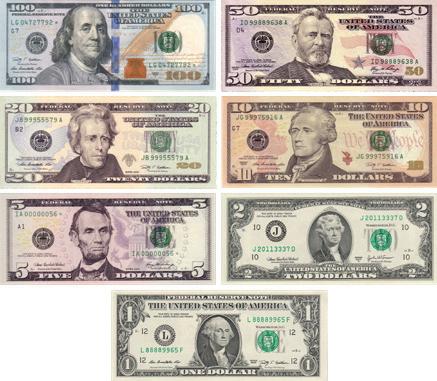
The Euro (EUR) is the official currency of 20 out of 27 European Union member countries, which together are known as the Euro Area. It is the second most widely used currency in the world.
The Japanese Yen (JPY) is the official currency of Japan. It is an important international currency, especially in Asia. It is the third most traded currency in foreign exchange. The symbol for the Yen is ‘¥’.

The British Pound Sterling (GBP) is the official currency of the United Kingdom, which includes England, Scotland, Wales and Northern Ireland. It is also used in some overseas British territories. Notes in current circulation have pictures of Queen Elizabeth II and King Charles III. It is the oldest currency in the world that is still in use.
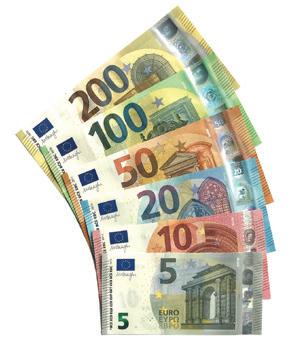

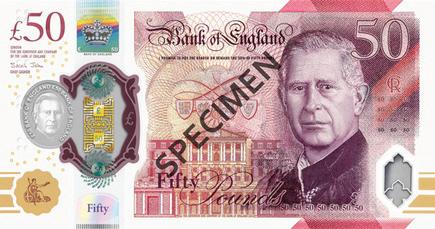
Use the internet to find out which currency is used in the following neighbouring countries of India: Bhutan, Bangladesh and Myanmar.


Scan this QR code to see the quiz. Practice Time
1 Name the currencies of the following countries.
a India
b Japan
c The Euro Area
d The United Kingdom
e The United States of America
2 Match the symbols and the name of the currencies.
a ₹ The British Pound Sterling
b $ The Euro
c ¥ The Indian Rupee
d £ The Japanese Yen
e € The United States Dollar
3 Fill in the blanks.
a The Indian Rupee is regulated by .
b notes have pictures of different presidents and political figures on them.
c is the second most widely used currency in the world.
d is the oldest currency that is still in circulation.
e is the third most traded currency in foreign exchange.
There are many structures in India that are the symbols of our uniqueness, growth and national pride. Let us learn about some of them.
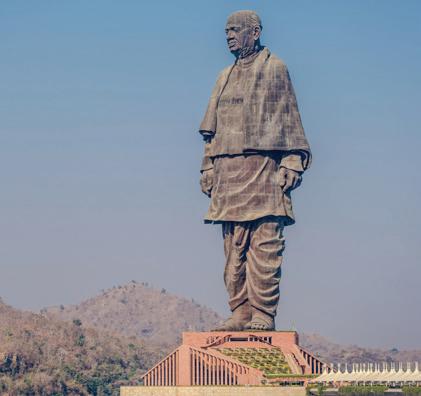

It is a 182-metre tall statue of Sardar Vallabhbhai Patel. He was a freedom fighter and also called ‘the iron man of India’. This statue is not only the tallest statue in India, but also in the world! It was opened to the public in 2018. It is located near Kevadia, in the state of Gujarat. It attracts thousands of tourists every year.
It is the longest sea bridge in India. It is 21.8 kilometres long and is built over the Arabian Sea. The bridge was inaugurated in January 2024 and connects the cities of Mumbai and Navi Mumbai.
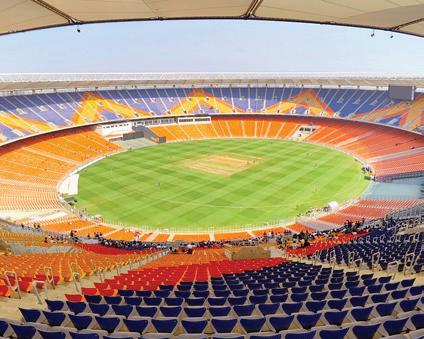
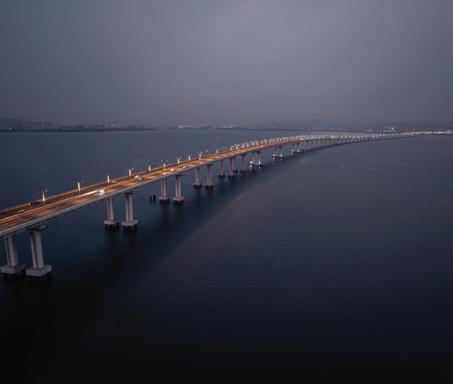
The largest cricket stadium in India and the world, the Narendra Modi stadium is located in Ahmedabad, Gujarat. It is built on 63 acres of land and has a seating capacity of 1,32,000 people. The stadium was inaugurated in February 2020.
It the longest road tunnel in India. Located in the lower Himalayan mountains, this tunnel connects Udhampur and Ramban in Jammu and Kashmir. This 9 kilometre-long tunnel was opened for the public in April 2017.
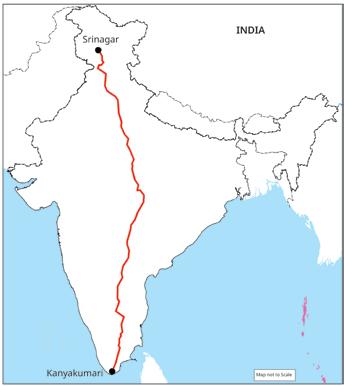
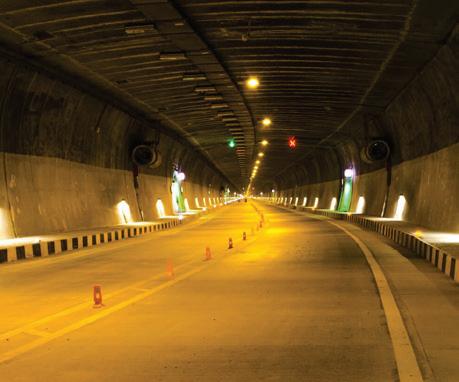
This highway is the longest road in India. It connects Srinagar to Kanyakumari, spanning 3,745 kilometres. It was inaugurated in 2010.
Use the internet to find about the tallest building in India.

Practice Time

Scan this QR code to see the quiz.
1 Name the cities or states of India that are connected by these structures.
a National Highway 44: and
b The Atal Setu: and
c Dr Syama Prasad Mookerjee Tunnel: and
2 Write the years in which these structures were inaugurated.
a The Narendra Modi Stadium
b Dr Syama Prasad Mookerjee Tunnel
c The Atal Setu
d The Statue of Unity
e National Highway 44
3 Which superlative structure of India is it?
a It honours the freedom fighter of India known as ‘the iron man of India’.
b It is the largest cricketing venue in the world.
c It is the longest road connecting the northern and southern states of India.
d It is built over the Arabian Sea.
e It is located in the lower Himalayas and connects Udhampur and Ramban.
Usually, we are excited about our birthdays. Did you know that birthdays are celebrated in different ways across cultures? Let us find out how birthdays are celebrated in different countries.
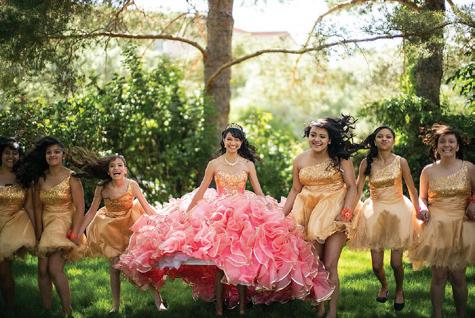
In Latin-America, girls celebrate their quinceañera when they turn 15 years old. This celebration marks a girl’s transition from girlhood to womanhood. The quinceañera receives many gifts and it’s customary for her to share the first dance with her father.
In the Chinese culture, the Zhuazhou is held when the child turns one year old. The parents put various objects in front of the child. These objects symbolise career choices or personality traits. The child’s choice is used to forecast their future. Generally, family and friends cook noodles to celebrate their child’s Zhuazhou.
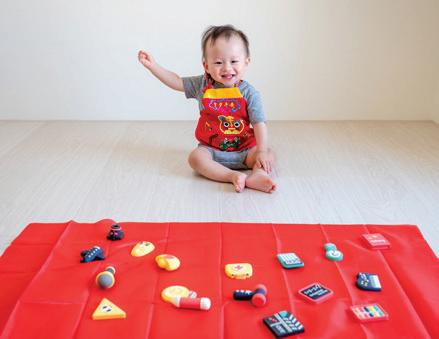
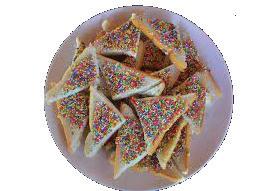
In Australia, people celebrate children’s birthdays with ‘fairy bread’ instead of cake. White bread, butter and colourful sprinkles are the basic ingredients of fairy bread.
The Russians celebrate their children’s birthdays by giving gifts to every child invited to the birthday party. Adults hang gifts from a clothesline, and each child gets to pull one down and take it home with them.
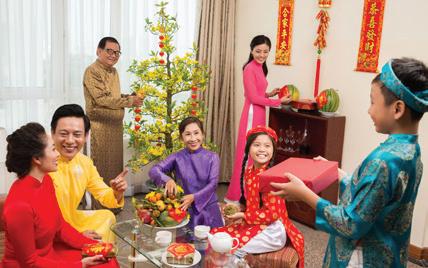
The Vietnamese people do not celebrate each individual’s birthdays. Instead, on the Vietnamese New Year, everyone celebrates turning another year older, together.
In Canada, the birthday girls or boys have their noses coated with butter. It is believed that it wards off bad luck for the next year.
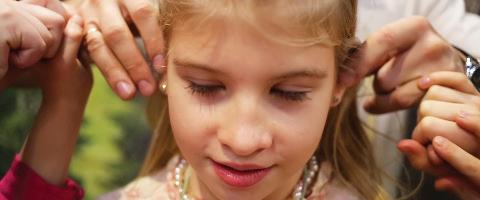
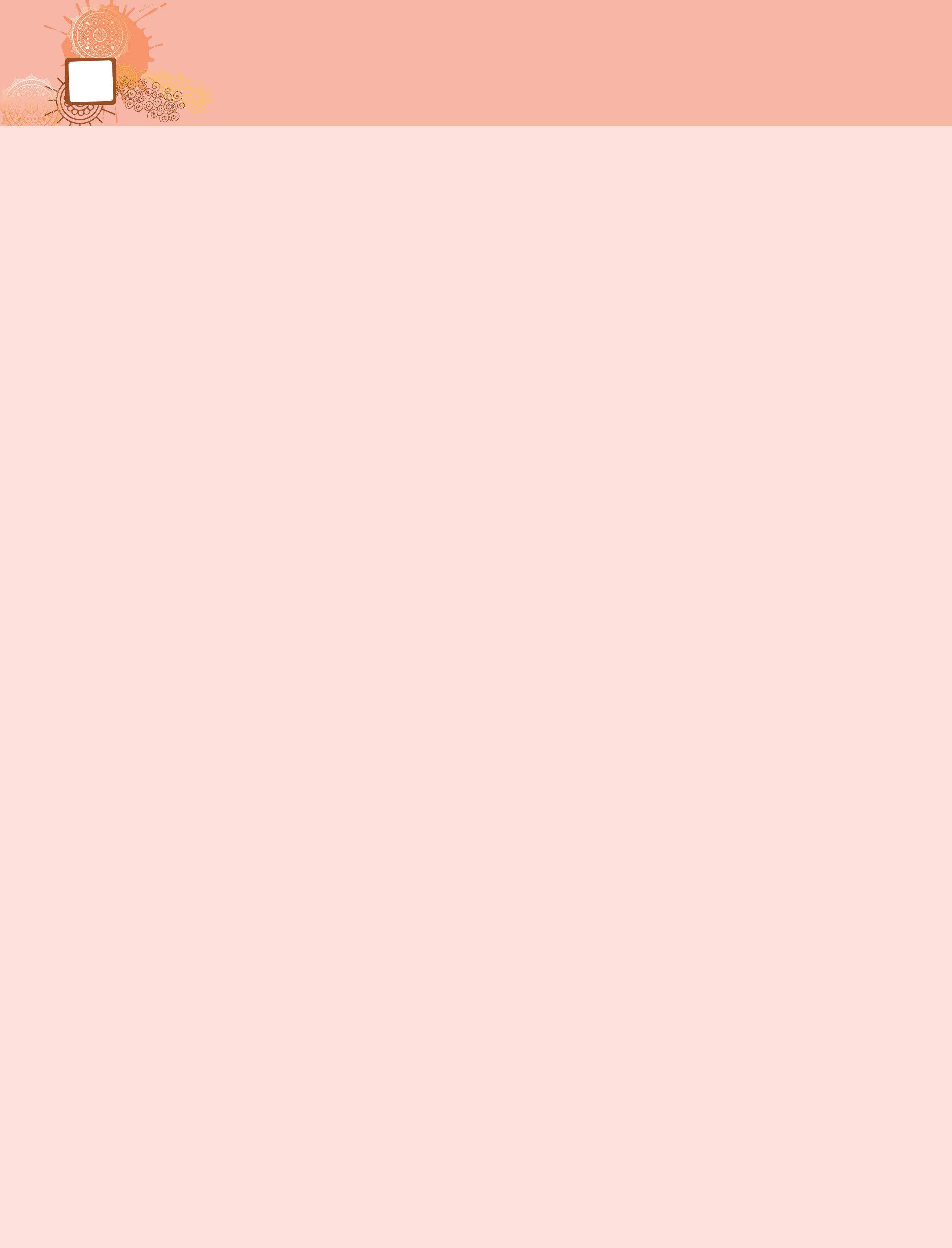
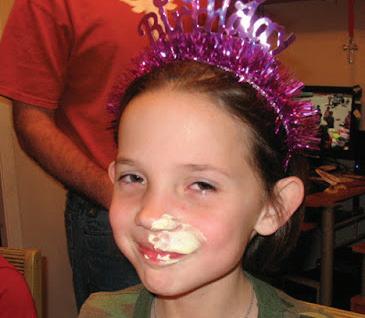
In Spain, people pull the ears of the person celebrating their birthday, once for every year of their age and finally one good pull for good luck and a long life.
Are there any special rituals that you follow when celebrating your birthday? Discuss these in class.

Practice Time
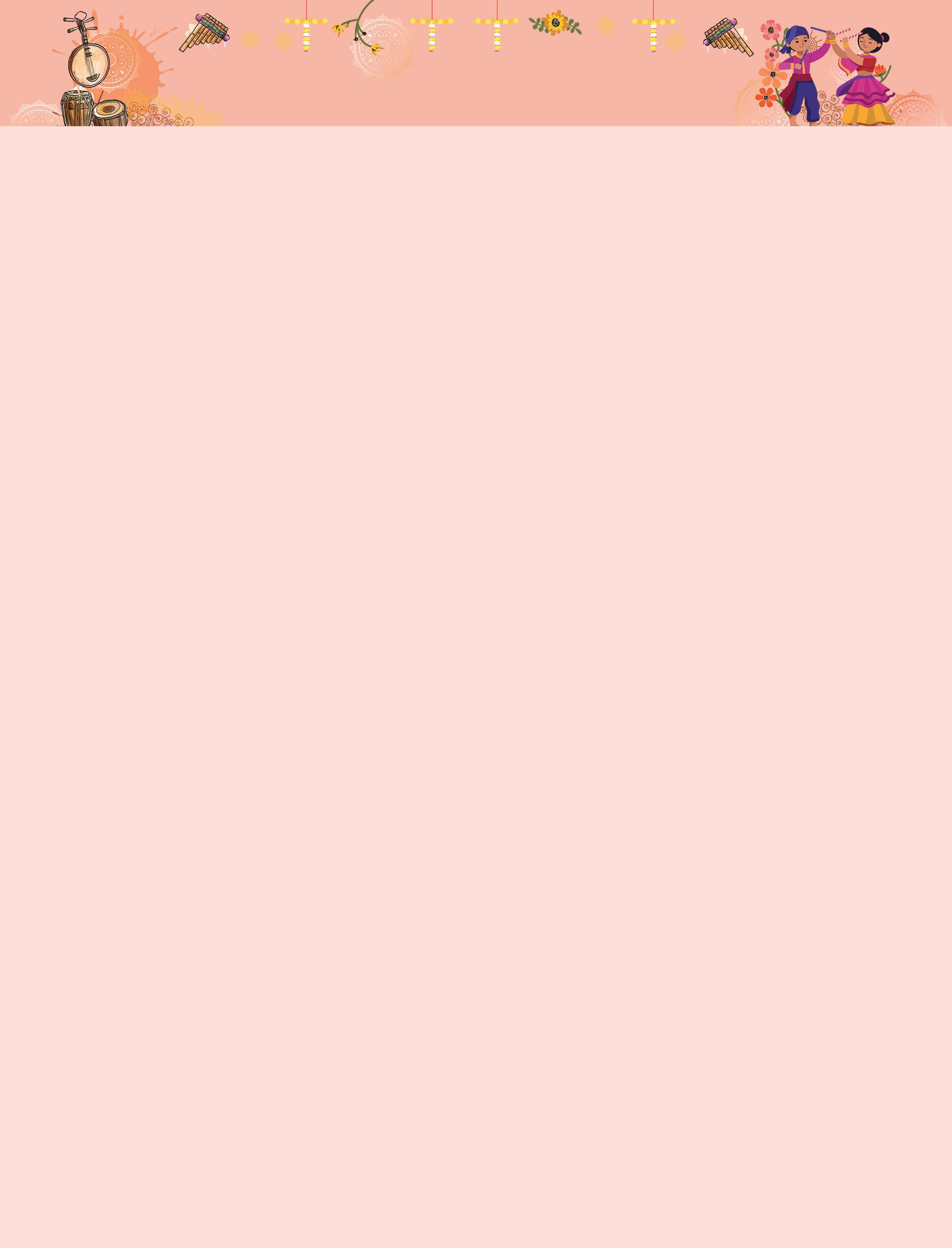
Scan this QR code to see the quiz.
1 Write the name of the country associated with the following birthday traditions.
a In this country, people do not celebrate their birthdays, but they wait for the New Year celebrations.
b Here, people pull the ears of the person celebrating their birthday.
c In this country, people use fairy bread instead of cake for birthday celebrations.
d Here, adults put gifts on a clothesline for the guests to pull one down for themselves.
e In this country, people grease the nose of the person celebrating their birthday with butter.
f In this country, turning fifteen years old is a special celebration for girls.
g Here, parents put various objects in front of the child. The child’s choice is used to forecast their future.

2 Draw any four things that start with the letter C that we use to organise a birthday party.
Vocational skills are skills that help people get a job and excel in their professions. Let us learn more about vocational skills.
Vocational skills are practical and hands-on skills that prepare people for a skilled craft. These skills are needed to do specific jobs. Some examples of vocational skills are: carpentry, electrical work and plumbing. The learning of vocational skills is also called vocational education.
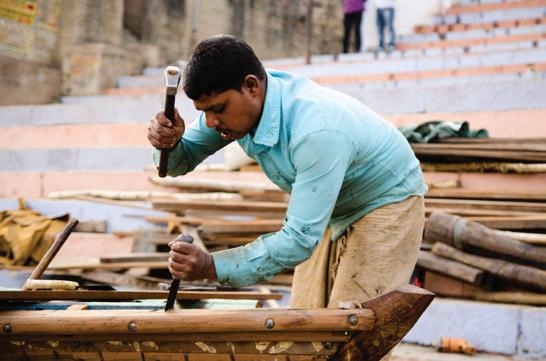

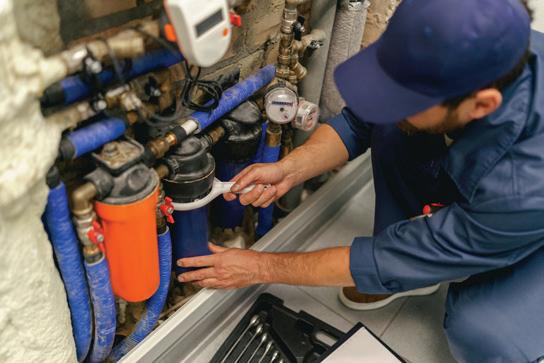
A vocational school is a type of school that focuses on providing vocational training to its students. These schools are also called trade schools or vocational colleges.
There are some organisations in India that focus on vocational training.
The All-India Council for Technical Education was set up in 1945 to promote technical education in India. It works to ensure proper planning and development of a technical education system throughout the country.



The National Skill Development Corporation was set up by the ministry of finance in 2008. Its main focus is to promote skill development among Indian youth. It provides financial support to new companies. It also supports efforts by companies to introduce vocational training. Its aim is to ensure that the development of skills is not hindered by a lack of financial support.
The Skill India Mission is recognised by the government of India. It provides both short-term and long-term training programmes in different vocational skills. Its goal is to make it easier for Indian youth to find jobs and provide them with the skills and knowledge needed to start their own companies.
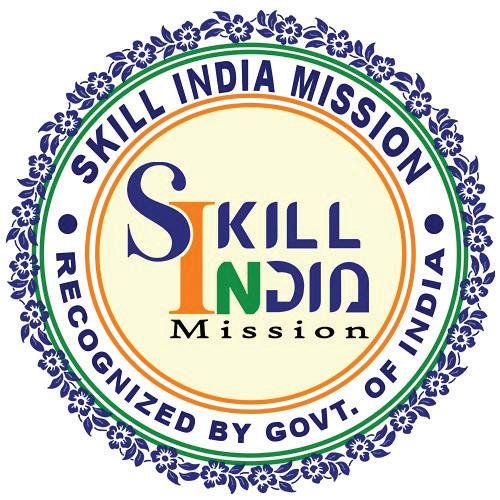
We should try to learn some vocational skills because they make us ready for jobs right after training. These skills prepare us for specific careers and industries and allow career flexibility.
In class, talk about a vocational skill you wish to develop and why.

1 Match the following.

Scan this QR code to see the quiz.

a All India Council for Technical Education
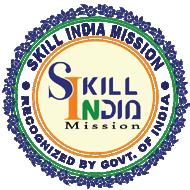
b National Skill Development Corporation

c Skill India Mission
2 Tick () the options that are vocational skills.
a Carpentry
c Running
e Giving gifts
3 Write True or False.
b Shopping
d Plumbing
f Tailoring
a Vocational skills are practical skills that help people get a job.
b The National Skill Development Corporation was set up by the ministry of education.
c A vocational school can also be called a trade school.
d The Skill India Mission is recognised by the government of India.
e The All-India Council for Technical Education was set up in 2010.

The Olympics are a multi-sport tournament that are held every 4 years. The 2024 Olympics were held in Paris, France. Let us learn more about India’s performance at the 2024 Olympics.
117 athletes represented India at this event in 16 different sports. India won six medals, which included three in shooting and one each in athletics, hockey and wrestling.
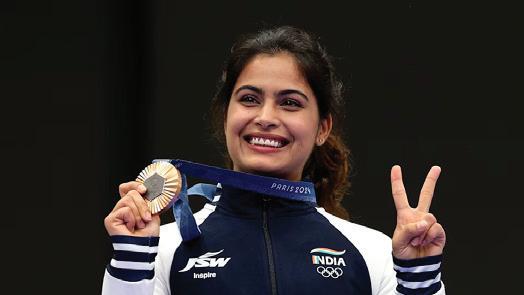
Manu Bhaker won a bronze medal in the women’s 10m air pistol event. She became the first Indian woman to win a medal in shooting at the Olympics.
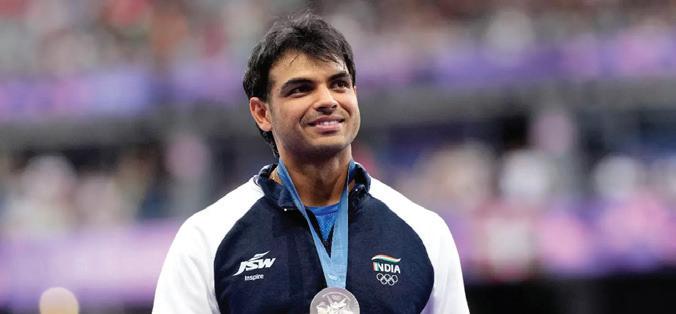
Neeraj Chopra won a silver medal in the javelin throw. This is his second consecutive medal in the Olympics after winning gold at the 2020 Olympics.
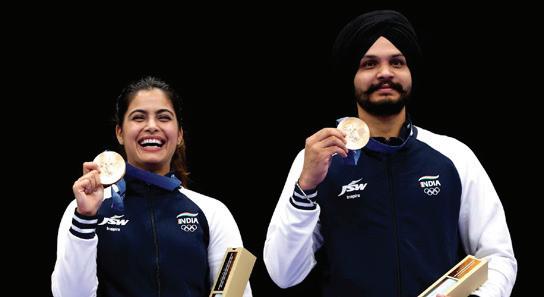
Manu Bhaker and Sarabjot Singh won a bronze medal in the 10m air pistol mixed team event. This is India’s first-ever shooting medal in a team event.

The Indian hockey team won a bronze medal. This is the 13th medal won by the Indian hockey team at the Olympics.
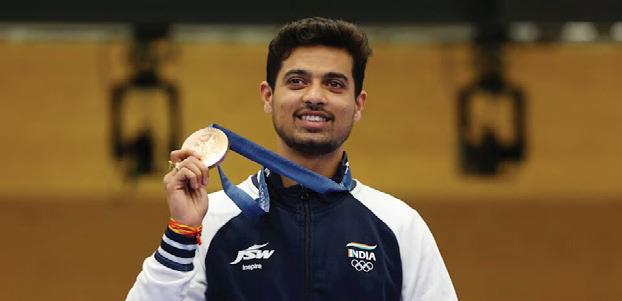
Swapnil Kusale won a bronze medal in the 50m rifle 3 positions event. He became the first Indian to win a medal in this event.

Aman Sehrawat won a bronze medal in the men’s 57kg freestyle event. He became the youngest Indian to win an Olympic medal.
Use the internet to find out about the first Indian to win an individual gold medal at the Olympics.

Practice Time

Scan this QR code to see the quiz.
1 Match the athletes and the events in which they won the medals.
a 50 m rifle 3 position
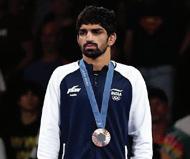
b Men’s 57 kg freestyle
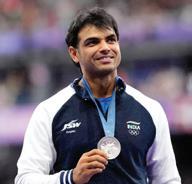
c Mixed 10 m air pistol
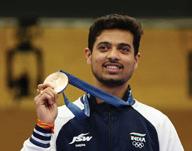
d Javelin throw

2 Fill in the blanks.
a The 2024 Olympics were held in .
b number of athletes represented India in different sports at the 2024 Paris Olympics.
c won two medals at the 2024 Paris Olympics.
d The Indian hockey team won a medal at the 2024 Paris Olympics.
e The Indian hockey team has won medals in the Olympics.
3 Name the Indian athletes.
a She is the first Indian woman to win a medal in shooting at the Olympics.
b He is the first Indian to win a medal in the 50m rifle 3 positions shooting event.
c He became the youngest Indian to win a medal in the Olympics.
d They became the first Indians to win a medal in a team shooting event. ,
e He won two consecutive medals at the Olympics.
Every country has important leaders who make decisions for that country. These leaders include the president, the prime minister and other important officials. Let us learn about them.
In countries like the United States of America, Argentina, Chile and Indonesia the president is the head of the state and the government.
In India, people of 18 and above cast their votes during elections to choose their leaders. The political party that wins the elections chooses the prime minister of the country. The president of India is chosen by the elected members of both the Houses of Parliament as well as the Legislative Assemblies of the States and the Union Territories of Delhi and Puducherry. The president of India serves for 5 years.
Countries like India, France, Italy, Pakistan and Russia have both a prime minister and a president.

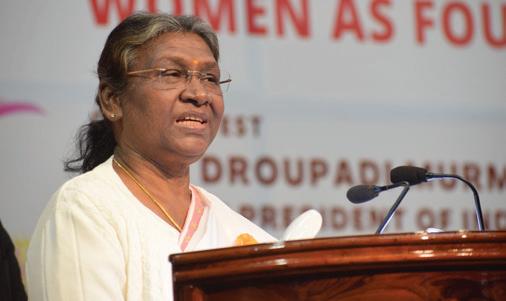
As of 2024, there were around 43 countries in the world that were ruled by kings and queens. Saudi Arabia, the United Arab Emirates (UAE), Bhutan, the United Kingdom and Bahrain are some countries ruled by kings. In these countries, children born to the kings and queens become the next rulers.
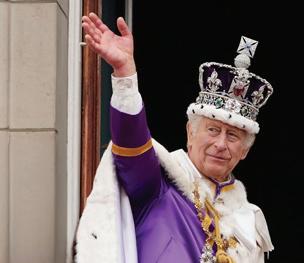


Charles III is the king of the UK. The country also has a prime minister who works with the king.
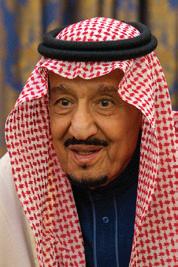

Leaders must be well informed, confident, well spoken and must work hard to achieve their goals.


Scan this QR code to see the quiz.
1 Name the countries where these kings rule.
a Salman bin Abdulaziz Al Saud:
b Charles III:
c Jigme Khesar Namgyel Wangchuck:
d Frederik X:
2 Fill in the blanks.
a The president of India in 2024 was .
b The UK also has a who works with the king.
c The prime minister of India in 2024 was .
d The president of India serves for years.
e countries were ruled by kings and queens, as of 2024.
f In India, people of and above cast their votes during the elections.
3 Name any two countries:
a That have both a president and a prime minister
b That only have a president
c That are ruled by kings

Natural disasters are unexpected and powerful events, such as earthquakes or floods. They can harm the environment, property and people. Let us read about some of these disasters.

Earthquake: An earthquake happens when there is a movement beneath the Earth’s surface, causing the ground to shake a lot. It can cause buildings to collapse and even lead to landslides.
The Noto Peninsula Earthquake was a major earthquake that took place in Japan on 1 January 2024.

Flood: A flood is caused by an overflow of water on land. It can happen due to heavy rain, ocean waves, rapidly melting snow, dam failures or cloudbursts (a sudden, very heavy rainfall). Floods can lead to loss of lives, buildings and roads. Dirty and stagnant water that collects due to floods can cause several diseases like typhoid, malaria and various types of skin infections. Heavy rainfall during the rainy season of 2024 caused severe flooding in Assam, India.

Landslide: A landslide refers to a mass movement of rocks or a shallow flow of debris (scattered pieces of rubbish) down a slope. Landslides can be caused by rain, earthquakes or volcanic eruptions. Human activities like cutting down trees have increased the risk of landslides. The easiest way to prevent landslides is to plant more trees. In 2024, a series of landslides hit Wayanad district in Kerala. They caused a lot of destruction.
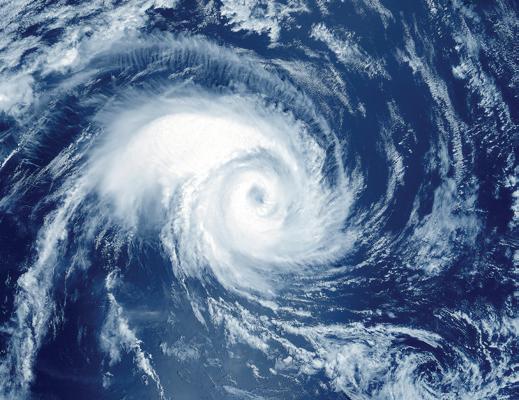
Cyclones: A cyclone is a huge, spinning mass of air that forms over the sea and moves towards the land. It can bring heavy rains, high waves and strong winds. The wind can damage houses, trees and buildings. The government usually issues warnings before a cyclone hits, which helps save lives. Cyclone Remal was a strong cyclone that hit West Bengal in India and Bangladesh in May 2024.
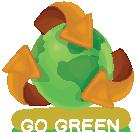
Caring for the environment helps reduce the risk and impact of natural disasters. By protecting forests, rivers and oceans, and planting more trees, we create a healthier Earth that can better withstand events like floods and landslides.

Practice Time

Scan this QR code to see the quiz.
1 Look at the following pictures and name the natural disasters.
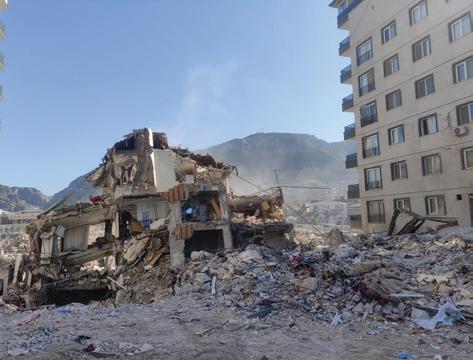
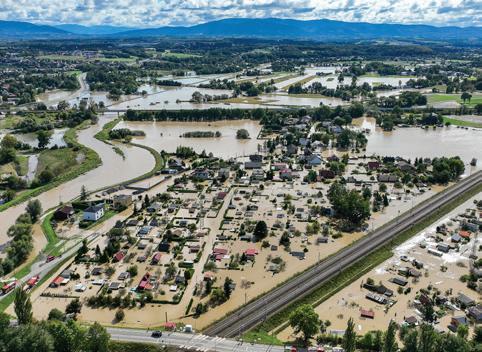
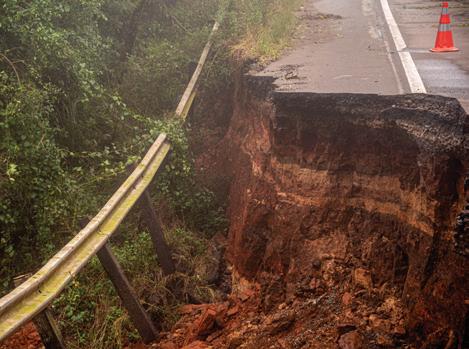
2 Write two causes of these natural disasters.
a Landslide:
b Flood:
3 Write the names of the places which were affected by these natural disasters.
a Noto Peninsula Earthquake
b Cyclone Remal
c A series of landslides in 2024
4 Fill in the correct answers.
a A cyclone that hit West Bengal in May 2024.
b A disease commonly caused after a flood.
c A disaster in which the ground suddenly shakes a lot.
d A practice that can help reduce landslides.
e A disaster that forms over the sea and moves towards land.
People do different kinds of work to earn money. Let us learn more about the different ways in which people can support themselves.
We need money for our daily lives. We earn money by doing work. The money that we earn by working is called our income. The regular work that people do to earn money is called a job. The fixed amount of money they get for doing a full-time job is called their salary. If people are paid by the hour, or for a piece-by-piece job, we call their earnings wages.
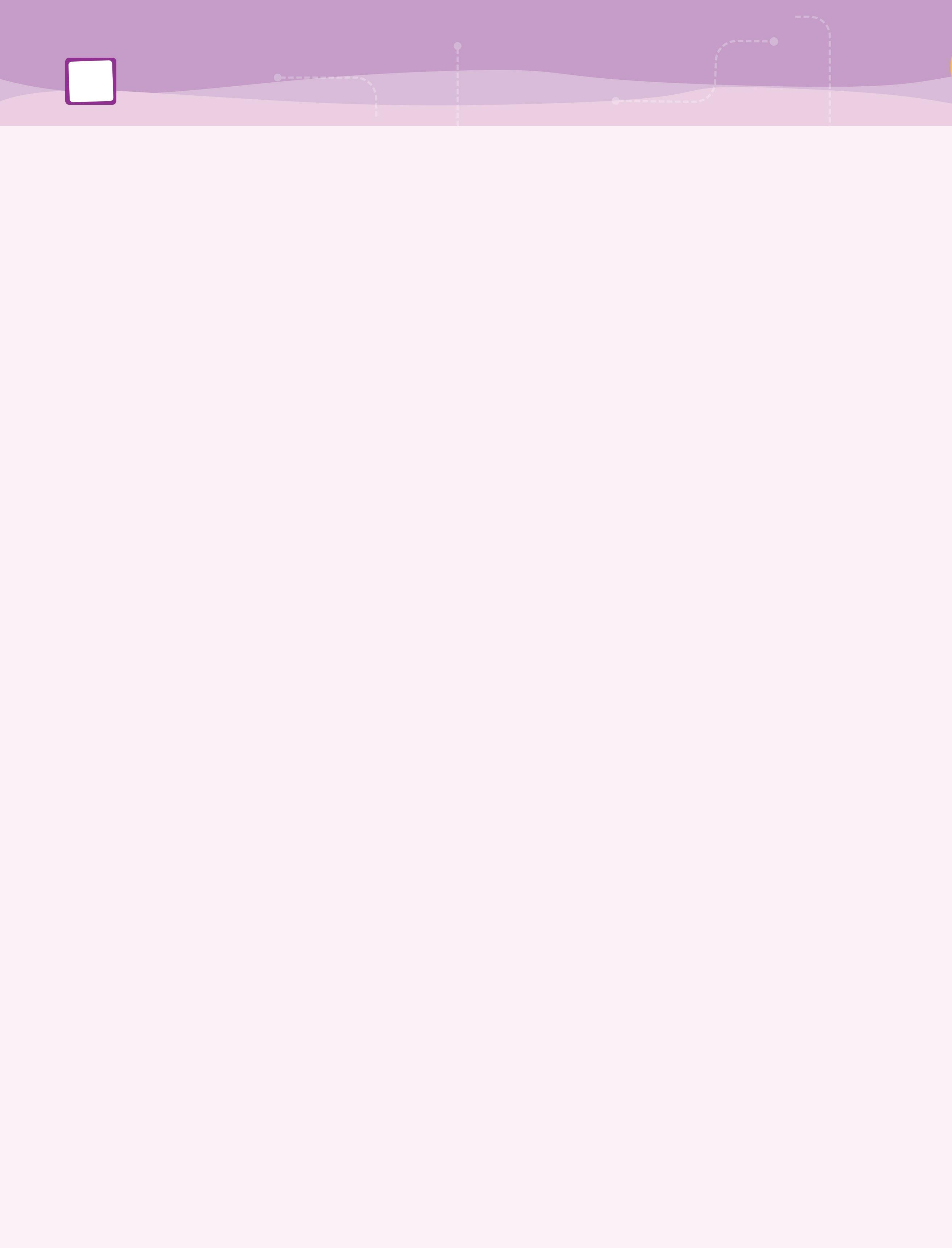
A business is an organisation that produces or sells products or services to get money. People also start their own businesses in order to earn money. They produce or sell different things like food, clothes, books and building materials.
An entrepreneur is a person who starts or owns a business.
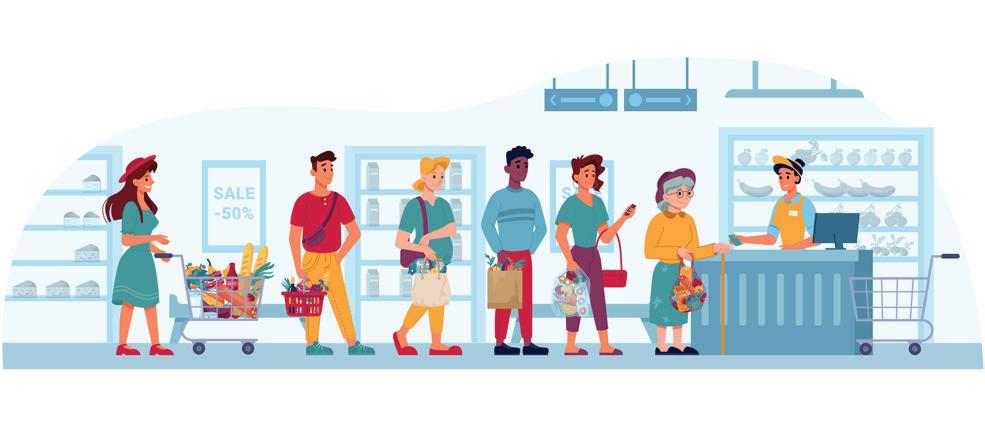
A part-time job is a job that people do for a few hours a week. People work for less time than in a full-time job. In a part-time job, people are paid based on the number of hours they work.
Some examples of jobs that can be part-time are tutoring, dog walking and driving.
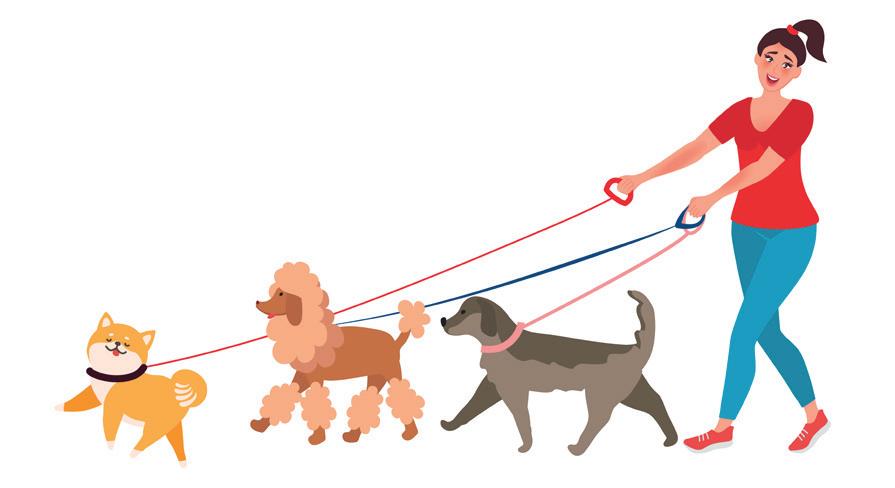
In today’s evolving world, whether you choose to pursue a job or start a business, certain skills like critical thinking, creativity and effective communication are very important.

1 Fill in the blanks.
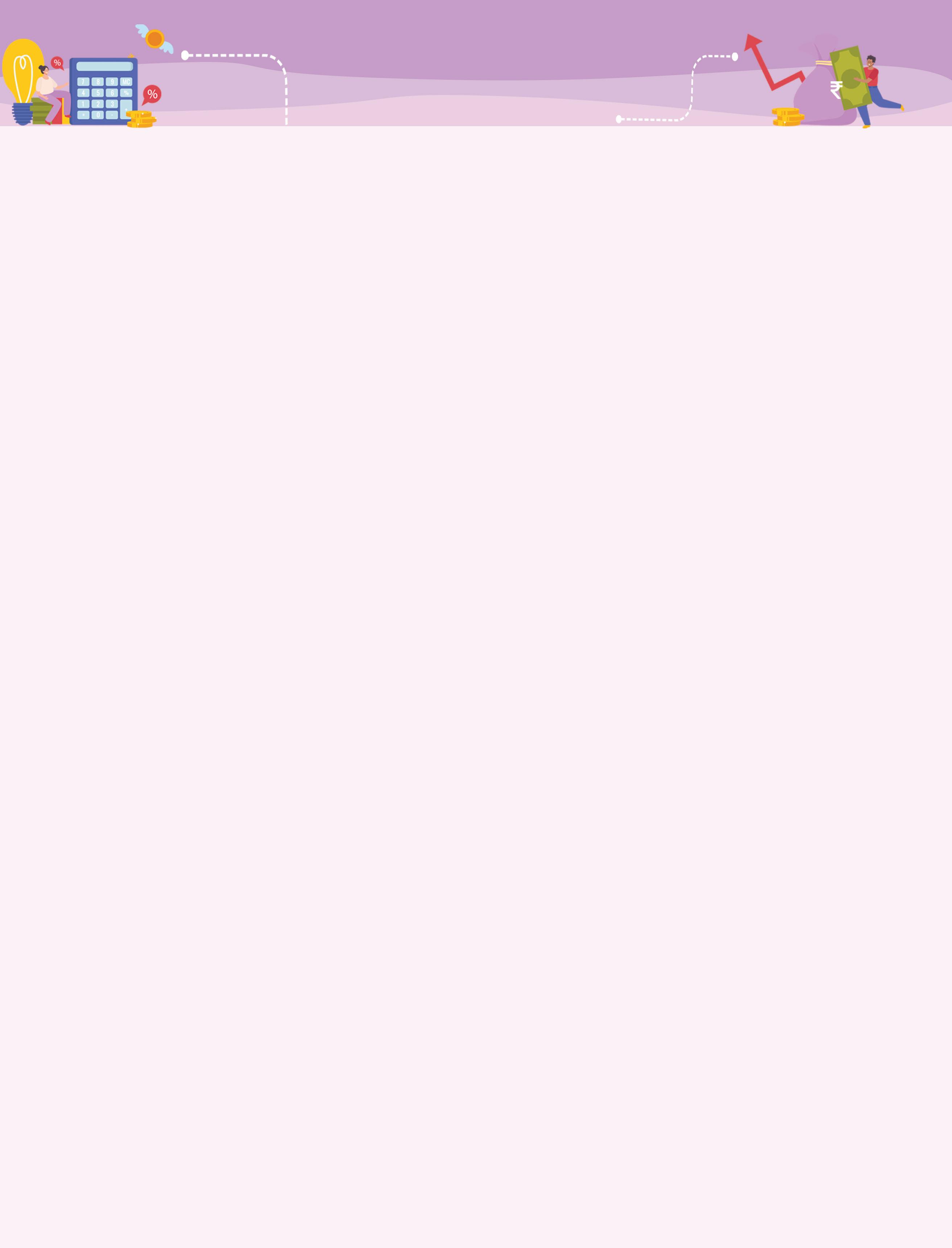
Scan this QR code to see the quiz.
a The money that we earn by working full-time is called our
b A job means that someone works for a few hours a week.
c A is an organisation that produces or sells goods and services to get money.
d When people are paid by the hour we call what they earn .
e An is a person who starts or owns a business.
2 Write True or False.
a People work for fewer hours in a part-time job.
b A clothing store is an example of a business.
c The money that people get by doing a full-time job is known as wages.
d We have to work to earn money.
e We don’t need money in our daily lives.
3 Match the following.
a Wages Organisation that produces or sells goods and services
b Business The money that we earn by working
c Income Working for fewer hours
d Part-time job Paid by the hour or for a piece-by-piece job.
17. International Currencies
1. a. Indian Rupee b. Japanese Yen c. Euro
d. British Pound Sterling e. United States Dollar
2. a. The Indian Rupee b. The United States Dollar
c. The Japanese Yen d. The British Pound Sterling
e. The Euro
3. a. Reserve Bank of India b. United States Dollar
c. Euro d. British Pound Sterling e. Japanese Yen
18. Superlative Structures in India
1. a. Srinagar, Kanyakumari b. Mumbai, Navi Mumbai
c. Udhampur, Ramban
2. a. 2020 b. 2017 c. 2024 d. 2018 e. 2010
3. a. Statue of Unity b. Narendra Modi Stadium
c. National Highway 44 d. Atal Setu
e. Dr. Syama Prasad Mookerjee Tunnel
19. Birthday Celebrations Around the World
1. a. Vietnam b. Spain c. Australia d. Russia
e. Canada f. Latin America g. China
20. Vocational Skills
1. a. National Skill Development Corporation
b. Skill India Mission
c. All India Council for Technical Education
2. a. b. c. d. e. f.
3. a. True b. False c. True d. True e. False
21. India at the Olympics, 2024
1. a. Men’s 57 kg freestyle b. Javelin Throw
c. 50m rifle 3 position d. Mixed 10 m air pistol
2. a. Paris b. 117, 16 c. Manu Bhaker
d. bronze e. 13
3. a. Manu Bhaker b. Swapnil Kusale
c. Aman Sehrawat d. Manu Bhaker, Sarabjot Singh
e. Neeraj Chopra
22. Our Leaders
1. a. Saudi Arabia b. United Kingdom
c. Bhutan d. Denmark
2. a. Droupadi Murmu b. Prime Minister
c. Narendra Modi d. five e. 43 f. 18
3. a. India, France
b. United States of America, Argentina
c. Denmark, Saudi Arabia
23. Natural Disasters
1. a. Earthquake b. Flood c. Landslide
2. a. Earthquakes, Volcanic eruptions
b. Heavy rains, Dam failures
3. a. Japan b. Bangladesh and West Bengal
c. Wayanad, Kerala
4. a. Cyclone Remal b. Typhoid c. Earthquake
d. Planting more trees e. Cyclone
24. Different Ways of Earning Money
1. a. salary b. part-time c. business
d. wages e. entrepreneur
2. a. True b. True c. False d. True e. False
3. a. Paid by the hour or for a piece-by-piece job
b. Organisation that produces or sells goods and services
c. The money that we earn by working
d. Working for fewer hours

Introducing INSIGHTS, a 21st-century product for the learners of grades 3 to 5. It includes all curricular areas—English, Mathematics, Science, Social Science and General Knowledge. INSIGHTS is aligned with the NEP 2020 in terms of its design principles, and fulfils all recommendations of the NCF 2023.
Product Package
• Semester Books
• Uolo App
• Teacher Guide
• Focus on HOTS and Critical Thinking: Intellectually stimulating questions designed to encourage deep, analytical, critical and evaluative thought processes
• Digital Aids: Animated talking books, interactive quizzes for additional practice and curated learning videos
• Experiential and Applicative Learning: Projects and activities designed for real-life settings, like lab activities and community projects, to enable the development and practice of life skills
• Rootedness to India: Examples from India’s unique culture and history, linked to each topic, to inculcate a sense of pride and love for the nation
• Model Assessments: Test papers designed to evaluate the understanding of core concepts and the application of skills
Uolo partners with K-12 schools to provide technology-enabled learning programs. We believe that pedagogy and technology must come together to deliver scalable learning experiences that generate measurable outcomes. Uolo is trusted by over 15,000+ schools across India, Southeast Asia and the Middle East.
ISBN 978-81-981206-3-2
